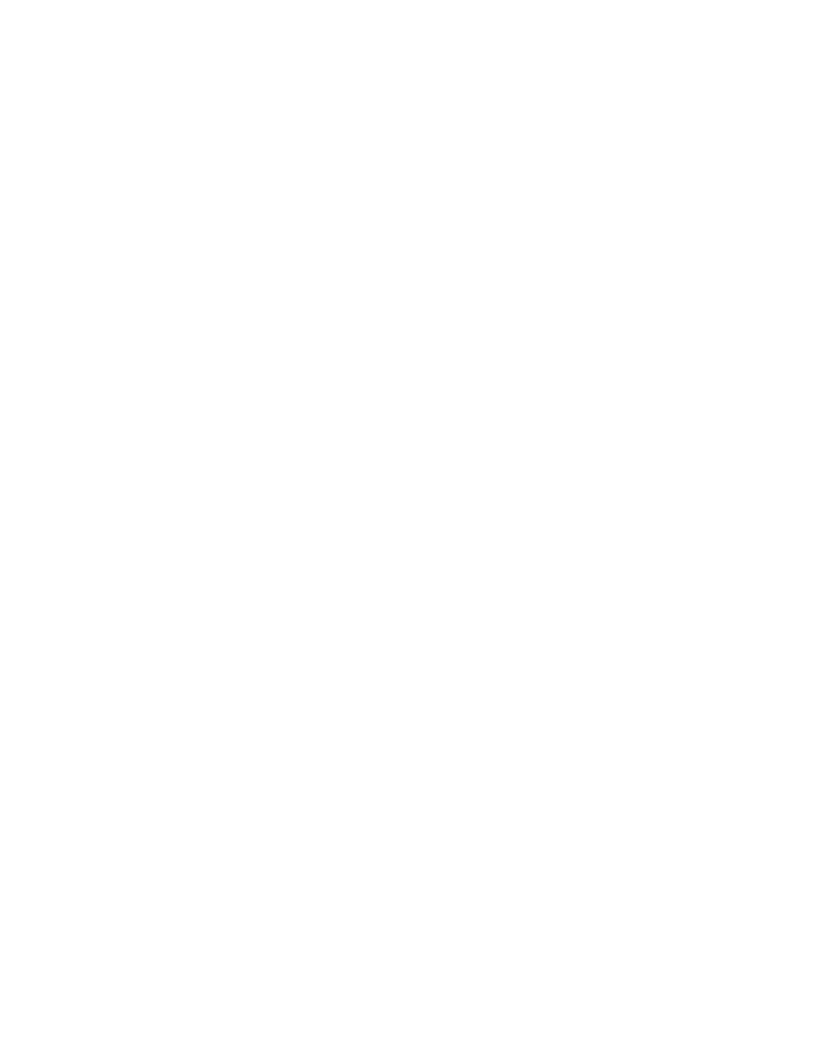
A GESTALT ORIENTED PHENOMENOLOGICAL AND PARTICIPATORY STUDY
OF THE TRANSFORMATIVE PROCESS OF ADOLESCENT PARTICIPANTS
FOLLOWING WILDERNESS CENTERED RITES OF PASSAGE
ADAM H. ROTH
Bachelor of Arts in Art
Cleveland State University
June, 1996
Master of Arts in Psychology
Cleveland State University
May, 2001
submitted in partial fulfillment of requirement for the degree
DOCTOR OF PHILOSOPHY IN URBAN EDUCATION
at the
CLEVELAND STATE UNIVERSITY
MAY, 2010

©Copyright by Adam H. Roth, 2010

This dissertation has been approved for
the Office of Doctoral Studies,
College of Education
and the College of Graduate Studies by
________________________________________________________________
Sarah Toman, Chairperson
02/04/2010
Counseling, Administration, Supervision, and Adult Learning
________________________________________________________________
James C. Carl, Methodologist
02/04/2010
Curriculum and Foundations
________________________________________________________________
Ann Bauer, Member
02/04/2010
Counseling, Administration, Supervision, and Adult Learning
________________________________________________________________
Kathryn MacCluskie, Member
02/04/2010
Counseling, Administration, Supervision, and Adult Learning
_______________________________________________________________
Lynn Williams, Member
02/04/2010
Bellefaire JCB

ACKNOWLEDGEMENTS AND GRATITUDE
Transformation: I let you see me and began to see more of myself. Being different and
being seen while standing with and belonging. I am standing in my heart; from this I am
not moved. I went out to the edge and you held me, so I did not look away. I have
experienced myself. I have experienced relationships. I experience gratitude.
(Adam Roth, 2005, www.natural-passages.com)
My deepest gratitude and appreciation to my Lady Bear for all the love you‟ve
given me. To my parents, for growing me from a seed and providing fertile soil so I may
thrive in life. To Jackie and Herb Stevenson for all the guidance, support, sanctuary, and
community. To Herb, the Natural Passages Program, and all the Men of Medicine for
standing with me and holding me up as I walk this path. To Ken Chapin for our
friendship and the dissertation research assistance. To the research participants. To the
Gestalt Institute of Cleveland for the training. To Sarah Toman, my dissertation chair and
doctoral program advisor, you are awesome. Mother Earth, Father Sky, Great Spirit
Mystery. I hold to my heart. The learning and experience that has led me to write this
dissertation, to actualize my soul work. I am a very fortunate man.

A GESTALT ORIENTED PHENOMENOLOGICAL AND PARTICIPATORY STUDY
OF THE TRANSFORMATIVE PROCESS OF ADOLESCENT PARTICIPANTS
FOLLOWING WILDERNESS CENTERED RITES OF PASSAGE
ADAM H. ROTH
ABSTRACT
This dissertation, addresses intervention and phenomenological and participatory
research methodology, through a lens of Gestalt Therapy Theory. The intervention, a
wilderness-centered rites of passage, included experiential components of: (1) emersion
in nature, (2) nature-based activities and challenges, (3) alone time in wilderness, (4)
exposure to nature-based archetypes, elementals, and folklore, and (5) participation in
community that supports connection through in ritual, ceremony, dialogue, and reflection.
The participants included three early adolescent males and one adult male, a parent-
participant. Data collection methods included participant observation, journal entries,
photo documentation, photo elicited interviews, processing groups, and field notes. A
multiple case narrative format, each focusing on a program activity component, was
utilized to present data and findings representing the transformative process of the
participants.
v

TABLE OF CONTENTS
Page
ABSTRACT……………………………………………………………………….. v
CHAPTER
I. INTRODUCTION……………………………………………………….
1
Reflexive Statement………………………………………………..
2
Terms, Constructs, Context and Theoretical Background…………
3
Rites of Passage……………………………………………
4
Wilderness Therapy………………………………………..
6
Ecopsychology……………………………………..
8
Adventure Based Counseling……………………… 10
Gestalt Theory and the Change Process………………….. 12
Holism……………………………………………... 12
Field Theory……………………………………….. 13
Phenomenology……………………………………. 13
Awareness and Figure/Ground……………………. 15
The Gestalt Cycle of Experience…………………... 16
Paradoxical Theory of Change……………………. 18
Gestalt, Adolescent Development, and Wilderness Centered Rites of
Passage…………………………………………………….. 19
Disembedding……………………………………… 21
Interiority………………………………………….. 22
vi

Integration…………………………………………. 23
A Gestalt Methodological Research Approach……………………. 24
Research Questions………………………………………………... 25
Predicted Limitations of the Research…………………………….. 26
Potential Significance of the Study………………………………… 27
Summary…………………………………………………………… 28
II. REVIEW OF RELEVANT LITERATURE AND RESEARCH………. 29
Rites of Passage……………………………………………………. 29
Wilderness Therapy………………………………………………... 31
Research Literature Aligned With This Study……………………... 35
Gestalt Relationship to Theoretical Foundation and Methodology… 38
Rites of Passage…………………………………………….. 38
Wilderness Therapy………………………………………… 39
Methodology………………………………………………… 41
Researcher as Instrument…………………………... 41
Participatory/Collaborative Research……………… 42
Foundations of Gestalt Therapy Theory in
Phenomenological Theory……………………. 43
Summary…………………………………………………………….. 45
III. RESEARCH METHODOLOGY………………………………………... 47
Theoretical Framework……………………………………………… 49
Intentionality………………………………………………… 50
Noema and Noesis…………………………………………... 51
vii

Intersubjectivity……………………………………………… 51
Epoche………………………………………………………... 52
Phenomenological Reduction………………………………… 52
Imaginative Variation………………………………………… 53
Research Questions…………………………………………………… 54
Quality, Trustworthiness, and Credibility of Qualitative Research…... 55
Research Methods…………………………………………………….. 57
Participatory Research……………………………………….. 57
Case Narratives………………………………………………. 59
Participant Selection………………………………………….. 61
Participants…………………………………………………… 62
Protection of the Rights of Participants………………………. 62
Data Collection……………………………………………….. 63
Participant Observation……………………………… 63
Journal Entries……………………………………….. 66
Photo Documentation and Photo Elicited Interview… 68
Processing Group……………………………………. 70
Data Analysis………………………………………………… 72
Conclusion……………………………………………………………. 75
IV. DESCRIPTIVE NARRATIVE and DATA ANALYSES……………….. 76
Applied Methods……………………………………………………... 77
Prior Beliefs, Contexts, and Experiences…………………………….. 79
Case Narratives of the Wilderness Centered Rites of Passage Program 88
viii

Group Program………………………………………………. 89
Orientation……………………………………………. 90
Drumming Circle……………………………………... 91
Hike and Snowball Fight……………………………... 96
Horse Facilitated Challenge…………………………. 103
Hay Bale Fort………………………………………… 114
Hike to the River……………………………………… 122
Medicine Pouch and Closing…………………………. 128
Individual Program…………………………………………... 134
The River……………………………………………... 136
Solo in the Cave……………………………………… 141
Tree…………………………………………………... 144
Summary……………………………………………………………... 150
V. SUMMARY, IINTERPRETATIONS, and SUBSTANTIVE ISSUES....... 152
Purpose and Intentions……………………………………………….. 152
Review of Methods and Methodology……………………………….. 154
Quality and Limitations of Qualitative Research…………………….. 155
Revisiting the Research Questions…………………………………… 158
Prior Beliefs, Contexts, and Experiences…………………….. 158
Wilderness Centered Rites of Passage……………………….. 162
Group Program………………………………………. 164
Drumming…………………………………….. 164
Hike and Snowball Fight……………………... 165
ix

Horse Facilitated Challenge…………………. 167
Hay Bale Fort………………………………… 169
Hike to the River……………………………… 171
Medicine Pouch………………………………. 173
Individual Program…………………………………... 174
River………………………………………….. 175
Hike…………………………………………... 177
Solo in the Cave……………………………… 178
Tree…………………………………………... 180
Further Research and Applications…………………………………... 182
The Research Process………………………………………... 182
Further Research of the Wilderness Centered Rites of Passage
Model ……………………………………………….. 184
Contributions to Gestalt Therapy Theory…………………… 185
Progressive Contributions, Furthering Research and Practice 187
Final Thoughts, Reflections, and Conclusions………………………. 188
Reflexive Statement………………………………………….. 188
REFERENCES………………………………………………………………. 191
APPENDICES………………………………………………………………. 202
A. IRB Approval Letter……………………………………….... 203
B. Parental Consent Form.……………………………………... 204
C. Assent to Participate in Research………………………….... 206
x

D. Tree Bear‟s Wilderness Centered Rites of Passage Permission
Slip ………………………………………………….. 208
E. Waiver of Liability for the Tree Bear Institute and Its Facilitator
Associates…………………………………………… 210
xi

CHAPTER I
INTRODUCTION
Today‟s adolescents lack experience with healthy rites of passage to support their
development and life transitions. For many, the inner strength achieved in the reflective
process of soul searching, the positive self-concept that is empowered from challenging
one self in new experiences, and the relational support received from heart-felt
discussions have given way to drinking, driving, sex and other risky behaviors as
marking the passage to adulthood.
The loss of ritual rites of passage contributes to the societal ills we have
come to know either personally, professionally, or through the media. The
need youth have for some kind of initiation is so strong that it will happen
with or without a healthy blueprint. Throughout history, the less
complicated societies have provided blueprints for children to obtain adult
status and to contribute to their communities.
(www.soulawakening.org)
The intention of this study was to gain further understanding of healthy blueprints and to
further inform psychological practice of the medium of wilderness centered rite of
passage in supporting and facilitating the transformative and developmental process of
adolescence. I begin with one of my own experiences of the outdoors.
1

Reflexive Statement
In the years of my early twenties, I used to visit an elder tree. This tree was one of
four in front of the elementary school close to my home. I would visit every few days. I
would walk around, sit or stand with my back up against or stand facing the tree, or lie at
the base looking up into this tree. Often I would hug this tree. Sometimes I would bring
this tree a gift of tobacco, corn meal, or sage. The presence of this tree evoked within me
a voice that taught me of myself and the natural world of which I am part. The voice
would reveal to me awareness at the depths of my being in the physical, emotional,
mental, spiritual, creative and relational fields. I consider this tree to be one of the great
teachers of my life.
I experienced healing, transformation, development, creativity, generativity, and
relationship with this tree. After having moved to a new home, a distance away from the
tree, my visits became infrequent. Recently, I was strongly drawn to visit this tree again;
a lot of time had passed since my last visit. When I finally did return to the tree, I came
upon a scene to which I had a deeply visceral reaction. His branches were gone, a large
portion of his trunk lay on the ground, about ten feet of trunk remained attached to the
tree‟s base and roots, and there was sawdust everywhere. I gasped; that preceded a primal
scream from which I collapsed into weeping. I honor the passing from this world of a
being with great presence, a being that has and will continue, through the rippling
resonance of that presence, to influence generations.
I chose to include this personal narrative with the intention of orienting the reader
to this dissertation, to my perspective as a researcher and my relationship to what is being
studied. The fields of Wilderness Therapy and Rites of Passage in both theory and
2

practice are something in which I have immersed myself over the last 15 years. This
immersion has significantly supported my personal growth. It has significantly influenced
my academic and career development. As a researcher of this field of study, I hold an
emic perspective. My significant personal and professional experiences and trainings in
the field have helped me to create, design, and facilitate the wilderness centered rites of
passage. This experience has shaped both the way this research was organized and
written, as well as influenced the way I collected, viewed, and interpreted the data. My
involvement in both Wilderness Therapy and Rites of Passage experiences also informed
my desire to combine the two fields into one term; wilderness centered rites of passage,
for the purposes of this dissertation.
Terms, Constructs, Context and Theoretical Background
The theoretical foundation of the intervention, wilderness centered rites of
passage, that mediates the subject of this study came from components of Wilderness
Therapy Theory and Rites of Passage Theory. Both the intervention and the research
methodology of this study are addressed in the context of Gestalt therapy theory. This
dissertation research focused on participants‟ experiences of the change process from the
lens of their therapeutic wilderness experiences. This research takes its definition of the
change process from Gestalt therapy theory, most notably the concepts of awareness and
meaning, as facilitated by experience. The Gestalt theoretical framework also guided the
choice of research methodology in this study. First, Rites of Passage and Wilderness
Therapy are described, followed by a description of the study‟s theoretical Gestalt
3

framework. Chapter One concludes with a declaration of the research questions, the
limitations, and the potential significance of this research.
Rites of Passage
A Rite of Passage both signifies and facilitates transformation in one‟s life. Rites
of Passage, as ceremony, ritual, and practice, are often bound within specific cultural
bases. Traditionally, Rites of Passage are present in all stages of life (Wall and Ferguson,
1998). The concept first emerged as a topic in western academic literature with the 1909
book by Albert van Gennep, titled Rites of Passage. The following section introduces
several models of Rites of Passage experiences that have guided this study.
Van Gennep (1909, 1960) studied the South Italian Carboneria and the Kwakiutl
Hamatsa Society initiations. The study described a series of passages from one stage of
life to another, all involving a ceremonial or ritual structure representative of a transition
of status within the society/community. Van Gennep (1960) asserted a three stage rites of
passage model:
Separation - from the familiar (from previous status)
Transition - from old state to new state (a marginal or liminal period)
Reintegration - into one‟s original social structure (reincorporation of those
passing into new statuses) (p. vii)
(www.wilderdom.com)
Maddern (1990) studied Rites of Passage of adolescents within the Australian
Aboriginal culture and asserted a 5 stage rites of passage model:
Symbolic Journey - Initiation, in this model, involves a journey which takes place
on both real and symbolic levels. The meaning and power of the journey can be
4

intensified by placing it within the context of a ritual. Symbolic acts can be used
to signify the departure from home, the various stages of the journey and the final
return of the successful initiate.
The Challenge - This stage includes real challenges which have to be faced, and
which may result in feelings of confusion, moments of intense fear, experiences
of real pain and occasions when pressing needs cannot be satisfied. This stage
includes times, therefore, of coming to terms with difficult emotions, of
developing the ability to cope with hardship. The love and guidance of older
people are key ingredients in helping the initiates pull through.
Opening the Door to the Dreaming - Initiations are times when doors are opened
to Adult Knowledge – the various words used to describe the complex, many-
layered systems of human society.
Responsibility - With the Adult Knowledge, and after transcending the emotional
and physical tests of initiation, comes public recognition of new responsibilities.
Community Participation - The final stage of initiation is returning to the
community with one‟s new status. This is a transformation which, though
regretted and grieved for at first, is now respected and celebrated.
(www.wilderdom.com)
Dunham, Kidwell, and Wilson (1986) presented an interdisciplinary paradigm
with which to conceptualize Rites of Passage in adolescent development. Their paradigm
includes constructs from cultural anthropology, developmental theory, psychology,
sociology, and theology. Their model presents a 14 step ritual Rites of Passage process.
5

The conceptual steps within their Rite of Passage process model covers the: (1) old
support group, (2) old identity, (3) old identity completion, (4) new environmental
demands, (5) liminality of the individual in transition, (6) activation of adaptive capacity,
(7) agony of developmental passage, (8) awe with respect to fate, (9) accommodation of
new role, (10) ecstasy of neurophysiological deactivation following accommodation, (11)
transcendence upon entry into the new identity, (12) new identity, (13) new support
group, and (14) reinforcement of the new identity.
From my experiences with adolescents, the above models provide developmental
explanations of change within culture while Wilderness Therapy provides the
opportunities. Wilderness therapy offers another model or structure which functions as a
rite of passage. One potentially initiates such ritual by crossing an environmental
threshold into the unfamiliar by immersing one‟s self in nature or facing challenge by
pushing forward through rough wilderness terrain. One‟s safe return to a supportive
community after a time of wilderness solo, or the sharing of the story and experience with
fellow seekers around a campfire, is supporting the integration and transition process of
the rite of passage experience.
Wilderness Therapy
Wilderness therapy has been defined as a therapeutic experience that takes place
in a wilderness setting where the focus is placed on naturally occurring challenges and
consequences (www.wilderdom.com). Wilderness therapy is designed to be a positive
growth experience where participants are immersed in naturally occurring circumstances,
face challenges, and experience structured risk that lead to self-examination, learning of
communication and cooperation, contribution to group well-being, and opportunity and
6

encouragement to succeed (www.wilderness-therapy.org). Wilderness therapy practices
also recognize the restorative and healing capability of experience in natural
environments.
Historically, the influence of romanticism of the nineteenth century, its writing on
the experience of nature, and the conservation movement have culturally shaped the
change in the view of wilderness from something to be feared and conquered to
something to be protected and revered. Wilderness therapy can be traced back in its
origins to the camping and recreation movements serving youth from urban areas in the
mid 1800‟s. The tent therapy programs of the psychiatric hospitals in the early 1900‟s
further highlighted the healing and restorative capability of outdoor experiences. In the
first half of the 1900‟s, there was significant development of the therapeutic camping
movement, which would employ psychiatrists and social workers as consultants, to focus
programs on behavioral change and emotional growth. Since the mid 1900‟s, programs
such as Outward Bound were developed, employing ropes courses, climbing,
backpacking, camping, and physical conditioning to encourage personal growth and
interpersonal skills. As these programs developed in the later 1900‟s, the program‟s focus
also included reflection, processing or debriefing of the experiences. Currently,
wilderness therapy programs have further advanced to include specific courses for at risk
and identified risk populations. As a measure of quality, and in support of outcome
efficacy, many of the current programs employ mental health clinicians as program
facilitators or require non-clinical instructors to have specific training (Berman and
Davis-Berman, 1999).
7

The theoretical framework from which this dissertation aligns with Wilderness
Therapy is rooted in a synthesis of Ecopsychology and Adventure-Based Counseling. The
combination of these therapeutic modalities provides a field of interaction to access the
intrapsychic realm, the relational field in therapeutic experiences, and developmental
growth. Through this foundation, a practice can be created that addresses the human
experience both immersed in a natural environment and actively engaging that
environment. The following paragraphs further describe the theoretical contributions of
Ecopsychology and Adventure-Based Counseling.
Ecopsychology
Ecopsychology suggests that there is a synergistic relation between planetary and
personal well being; the needs of the one are relevant to the other (Metzner,1999;
Roszak, Gomes, & Kanner, 1995; www.ecopsychology.org). This approach does not just
address broad environmental issues, but individual experiences in outdoor environments.
Ecopsychology theory comes from, but is not limited to, the fields of environmental
philosophy, psychology, and ecology.
Biophilia theory (Kellert & Wilson, 1984) states that humans have a genetic
disposition toward being attracted to nature and that exposure to nature supports physical
and mental well being. Neill‟s (2004) theory, Intra-Indigenous Consciousness, states that
the cumulative psychological knowledge of human evolution is genetically stored
(www.wilderdom.com). It is the indigenous psyche within each person that can be
activated through direct experiences with nature, natural elements and natural systems.
These concepts within Ecopsychology are different than traditional views of
human-environment interaction, in that the impact of the natural environment remains
8

largely unaddressed by traditional psychology. Metzner (1998) criticized traditional
psychology in saying:
The fact that we live in these particular kinds of ecosystems, in biotic
communities with these kinds of species of animals and plants, in these
particular kinds of geographical and climatological surroundings, appears
to be irrelevant to our psychology. Yet our own personal experience, as
well as common sense contradicts this self-imposed limitation. (p. 36)
Metzner (1998) further stated that:
Ecopsychology is concerned with revisioning our understanding of human
identity in relationship to place, to ecosystem, and to the cycles of nature.
Indigenous people have a much closer relationship to place and
ecosystem. We need to learn to understand ourselves in relationship to a
place and to the story of that place. (p.37)
Roszak, Gomes, and Kanner (1995) provided an overview of the topics addressed
by the field of Ecopsychology through a collection of essays. In summary:
Ecopsychology goes beyond traditional therapeutic models, which rarely
look beyond the individual, family, and social dimensions of the human
personality, to embrace a planetary view of mental health.
Ecopsychologists recognize that a capacity to live in balance with nature is
essential to human emotional and spiritual well-being, a view that is
consistent with the healing traditions of indigenous peoples past and
present, which is lacking in present-day Western psychological theory.
Ecopsychology explores environmental issues at multiple levels of system.
It explores how the destruction of the biosphere results from irrational
human behavior and how irrational behavior results from a damaged
environment. It delves into our most intimate fantasies and fears. It probes
our most repressed anxieties and depressions seeking the foundations of
our destructive environmental behavior. It asks such crucial questions as:
How can we redefine mental health within an environmental context?
What underlies the irrational consumption habits of modern society? Why
is it that when environmentalists speak of the need to reduce consumption
they arouse such anxiety, depression, rage, and panic? How can the
environmental movement find more effective ways to win the hearts and
minds of the public than by endlessly scaring, shaming, and blaming?”
(abstract, PsychINFO database)
9

Ecopsychology turns around these global/societal/community issues and explores
their influences on intrapsychic and interpersonal well being and how the issues are then
acted out in the individual, family, and social dimensions.
Adventure Based Counseling
Adventure Based Counseling takes outdoor experiential models and combines
them with psychotherapeutic disciplines. It differs from traditional counseling in that the
approach includes the natural setting, the use of real and perceived risk, additional
required skills, additional ethical considerations, an emphasis on processing and
metaphor, and the transfer of learning to psychological, educational, sociological,
physical, and spiritual benefits. Adventure Based Counseling can be used as a primary
treatment or as an adjunct to more traditional types of counseling (Fletcher & Hinkle,
2002).
Itin (2001) identified Adventure-Based Counseling as both the use of specific
activities (i.e., games, initiatives, trust activities), high adventure (i.e., rock climbing,
white water) and wilderness (i.e., backpacking, canoeing, hiking, ect.) in conjunction
with a philosophy that actively embraces the unknown, in which the challenges
encountered are seen as opportunities, and the group is seen as an essential element of
individual success and opportunities or genuine community are promoted.
Adventure Based Counseling is a therapeutic tool that can be adapted to almost
any setting and is a mixture of experiential learning, outdoor education, group
counseling, and intrapersonal exploration (Schoel, Prouty, & Radcliffe, 1988). The
theoretical base of adventure-based counseling includes, but is not limited to,
Experiential Learning and Outward Bound principles. Dewey (1938) offered foundational
10

work in experiential learning, with the basic concepts that learning is based in the
experience of the present moment. Experiences of greater significance facilitate more
significant learning.
The Outward Bound Model was created by Kurt Hahn in the 1930‟s and became
formalized as Outward Bound School in 1941. Outward Bound is the leading wilderness-
adventure/outdoor education organization in the world. It has been in existence for over
60 years. The Outward Bound Model includes five components that facilitate
opportunities and expand principles of lived experience (James, 1980). The components
of facilitated experience are: 1) students pledge themselves to personal goals; 2) control
of time and activity; 3) adventure and risk in order to cultivate a passion for life; 4)
operating in small groups to develop the natural leadership present in most people but
often suppressed by other facets of modern life; 5) a dedication to community service.
The expanded principles of lived experience are: fitness, initiative and enterprise,
memory and imagination, skill and care, self-discipline, and compassion. The Outward
Bound model has 5 core values: 1) adventure and challenge enhances leadership; 2)
learning by doing results in confidence; 3) teamwork leads to compassion and service; 4)
stewardship through social and environmental responsibility, and 5) time for perspective
and reflection supports character development (www.outwardboundwilderness.org).
The assessed interventions offered to the adolescent participants for the purposes
of this research followed the models and principals of ecopsychology and adventure
based counseling. The most significant link between the interventions and the models and
principles was based in the interventions‟ foci on emersion, experience, and challenge
within the natural environment. Further, the interventions supported a developmental
11

process through an emphasis on participants‟ experiences of intrapsychic exploration,
relationship with the environment, community building, and service. One intent was for
participants to experience a deepening of awareness of relationship between self and
environment, deepening their recognition of the influence of environmental issues upon
personal and interpersonal wellbeing that is acted out in individual, family, social, and
community dimensions.
Along with such principals as learning by doing, challenge promotes leadership,
and reflection supports development, Gestalt therapy theory offers additional theoretical
concepts which supported this research. The following paragraphs highlight several such
Gestalt therapy theory concepts.
Gestalt Theory and the Change Process
Gestalt therapy theory (Perls, Hefferline, & Goodman, 1951) is experientially
based. It is rooted in the fundamental concepts of field theory, phenomenology, and
holism. In working with an individual toward therapeutic and developmental change, the
work is focused at the center of the individual‟s experience. Experience is based on the
convergence of interpersonal, relational, and environmental forces. The individual, in his
or her development, is recognized as a phenomenon of body, mind, emotion, spirit,
relationship, and creativity.
Holism
Gestalt therapy theory views nature and existence as a unified whole, “greater
than the sum of its parts.” Human experience and our related perceptions are seen as a
process of development of a fuller awareness, becoming meaningful wholes, or gestalts
12

(Perls et al, 1951; Crocker and Philipson, 2005). The holistic approach of Gestalt therapy
theory is described, stating;
We see that meaningful wholes exist throughout nature, in physical and
conscious behavior both, in the body and the mind. They are meaningful
in the sense that the whole explains the parts; they are purposive in that a
tendency can be shown in the parts to complete the wholes.
(Perls et al, 1951, p.34)
Field Theory
Field theory (Lewin, 1951) strongly influenced the holistic perspective of Gestalt
therapy theory (Perls et al, 1951). The term field is taken from physics, describing a
configuration of forces. Applied to psychology “the field” is describing the complex
interrelationship of forces, effects, influences and events forming a unified interactive
whole (Parlett & Lee, 2005). The “field” is inclusive of;
The many environmental conditions and influences that conceptualize our
existence relating to all or specific elements… the parts of our field are not
separate. They are intimately intertwined, inextricably interwoven into
wholes of perception and involvement.
(Parlette & Lee, 2005, p.44)
As a fundamental construct of Gestalt therapy theory, Field theory brings to light
the unit of inquiry as the interaction of organism and environment or the
organism/environment field (Perls et al, 1951). Adolescent development and the
transformative process is;
Understood as a progressive unfolding of the comprehensive field, an
unfolding that includes-structuring of childhood unity, expansion and
differentiation of life-space, and the transformation of the boundary
processes that organize and integrate the field. (McConville, 2001, p.38)
Phenomenology
The self in experience is a phenomenon of the organism/environment field. This
phenomenon of interaction between organism and environment further defines the unit of
13

work in Gestalt therapy (Perls et al, 1951). The Phenomenological Method in Gestalt
therapy structures intervention goals to develop and deepen awareness of self in
interaction with environment as both internal and external phenomenon. In applied
practice the Phenomenological Method in Gestalt therapy moves the practitioner to value
description over interpretation and to seek to know the clients‟ lived experience over an
“objective truth” (Crocker & Philipson, 2005).
Central to Gestalt theory‟s explanation of the change process is the foundation of
developing awareness. Fodor (1998) described a model of change through experience that
facilitates awareness, awareness that initiates a process of meaning making:
A holistic view of awareness process includes sensory, emotional, and
conceptual processes operating together to create the individual‟s
phenomenological perspective of the world. Making meaning of these
moment to moment experiences is an intrinsic piece of the process.
Another aspect of this process is the awareness of how am I becoming
aware - how am I creating my story and enhancing awareness of other
possibilities for experiencing. (p. 69)
The Gestalt change model of experience that facilitates awareness, awareness that
initiates a process of meaning making, has guided this dissertation in inquiry as a
foundation for the research questions, the research process, and as a strong influence in
the analyses and presentation of the qualitative data.
The Gestalt change model has two additional components that are most relevant
to this dissertation. First, the process of experience and awareness occurs in sequence, as
depicted in the Gestalt Cycle of Experience. This is represented by Perls (1976) as a
continuum of phases, “where awareness emerges into a foreground, is experienced,
changed, assimilated, and then falls into the background as the next awareness emerges”
(Fodor, 1998, p.54). Second, the Paradoxical Theory of Change (Beisser, 1970, 2001)
14

offers that the more one becomes fully who they are and embodies authentic experience,
the greater is the potential for change. It is through this authenticity of self in the
experience that the ground develops for change to occur. The concepts of awareness,
figure/ground, the Cycle of Experience, and the paradoxical theory of change are
described in more detail in the following paragraphs.
Awareness and Figure/Ground
Yontef (1993) stated that “the word Gestalt refers to the shape, configuration or
whole, the structural entity, that which makes the whole a meaningful unity different
from a mere sum of parts. Nature is orderly, it is organized into meaningful wholes. Out
of these wholes, figures emerge in relation to a ground and this relationship of figure and
ground is meaning” (p.182). Nevis (1987) described figure/ground through a metaphor of
walking through a forest (ground), then noticing and attending to a single tree (figure).
Awareness is the process of increasing focus on a figure that is emerging from the
background through increasing attention and deepening interest. Fodor (1998) described
awareness as “a central concept in Gestalt therapy. It focuses on experiencing one‟s
sensed impressions of the world, and highlighting of the awareness process is a central
feature of therapeutic work” (p. 50).
For the participants in this dissertation research, an example of an emerging figure
may have been a sense of personal strength in facing a perceived fear or risk with a horse
or while experiencing a cave challenge, coming forward from the ground or background
of their adventure experience. Emerging figures may lead participating individuals to
become aware of an increased sense of self-efficacy after overcoming the challenge. The
concept of awareness is apparent in the Cycle of Experience.
15

The Gestalt Cycle of Experience
The Gestalt Cycle of Experience has been described as a continuum of phases
(Woldt and Toman, 2005), (Nevis, 1987), (Perls, Hefferline, and Goodman, 1951).
Together these phases and the movement between them constitute the process of
experience. The experiential phases of the cycle presented in order are sensation,
awareness, mobilization of energy, action, contact, integration or assimilation, and
closure or withdrawal. Sensation is the ground that is becoming figural as it moves into
awareness. It is the information of the senses and lived processes that are moving into
consciousness. The transition from sensation to awareness involves a sensation
experienced in the ground becoming figural, of concern or importance. “True awareness
is the spontaneous sensing of what arises or becomes figural, and it involves direct and
immediate experience.” (Nevis, 1987, p.23). Nevis (1987) related the work of self-
development as being largely devoted to improving and expanding one‟s available
awareness. The transition from awareness to energy mobilization is the stimulation
related to the emerging figure. Deepening awareness, deepening concern, deepening
importance is the motivation to enact the effort related to the figure. Mobilized energy is
the “springboard” of experience into the action and contact phases. Action is the
beginning manifestation of interest and intention. It draws together the attention and
aroused energy to an active response, “an aggressive response to a figure of interest, a
form of active participation in which the figure is literally transformed through work to
comprehend and assimilate it” (Nevis, 1987, p. 27). Contact is the phase when one
touches the boundary of self and other. It is the phase “in which a fully developed
experience emerges from working with a figure of great interest” (Nevis, 1987, p. 28).
16

Learning and change occurs when one leans into their boundary. “It is
acknowledgement that to make contact of any kind is to learn something about the
present state of affairs” (Nevis, 1987, p. 29). Integration and assimilation is “a form of
active participation in which the figure is literally transformed through work to
comprehend and assimilate it … in that the perceiver changes his or her perceptual
cognitive awareness” (Nevis, 1987, p. 27). Resolution and closure is to withdraw from
the figure. It is to acknowledge the experience and the learning, to recognize completion
of a unit of work.
In completing the outdoor experiences of this research, the participants moved
through the cycle of experience as they hiked on rough terrain. By exemplifying the cycle
through this experience, the cycle began with a sensation of unsteadiness or imbalance.
The awareness may be a need to be more present, to attend to the physical ground, or to
have more intentioned movements and a wider stance. Mobilization of energy may be a
deepening of need as one continues to stumble and a focusing attention on their physical
body and creating a mental picture of their intended physical changes. Action may be
making the shift in their physical body. Contact may be a fuller shift of their attention to
the interaction between their body and the ground and recognizing and deepening of
experience of themselves in a fuller embodied presence attaining better balance and
stability as they continue to hike. Integration and assimilation may be an enjoyment and
reflection on their experience of heightened ability and self-efficacy with a fuller
embodied presence and considerations of the potential applications and benefits of
embodied presence in other aspects of their lives. Closure and withdrawal may be a shift
from embodiment to something in the natural environment that catches their attention.
17

Movement through the cycle is one way to describe the process of change.
Another change model in Gestalt therapy theory is the Paradoxical Theory of Change.
Paradoxical Theory of Change
Change occurs when one becomes what they are, not when they try to become
what they are not. Change does not take place through a coercive attempt by the
individual or by another person to change. The more one becomes fully who they are and
embodies their authentic experience, the greater is the potential for change. It is through
this authenticity of self in any experience that the ground develops for change to occur.
Change does take place if one takes the time and effort to be what they are, to be
fully invested in one‟s current positions. Change is the natural state of humankind, is
movement towards wholeness where there is constant change based on the dynamic
transactions between the self and the environment (Beisser, 1970, 2001).
Gestalt therapy and the Wilderness-Centered Rites of Passage are experiences
where emersion in nature brings a person to their natural or authentic state. This is a
mirroring process of observing and experiencing an environment in its natural state. The
experienced serenity of the natural world can alleviate structures of social conformity and
obligation that diverge one from their authentic self. From the adventure-based
perspective, a person on their edge in a nature challenge or one that finds adaptation
through overcoming wilderness obstacles is accessing the fullness of their being,
manifesting their authentic self. Achievement in such an experience is a process of
awareness of self, in one‟s capacity, in one‟s limitations, in knowing the self from which
adaptation is occurring because of desire or necessity.
18

The methodology of Wilderness Centered Rites of Passage is to create or access
experiences that heighten awareness. Through experience, one is moved to introspection,
making meaning and recognizing the self in new ways. One is drawn into environment,
experiencing the person-environment or person-person(s)-environment in new, different,
broader, deeper, and more expansive ways.
Gestalt, Adolescent Development, and the Wilderness Centered Rites of Passage
This dissertation focuses on transformative process as experienced by the
adolescent participants. Adolescence is a time of significant developmental
transformation in the human lifespan. In Gestalt Therapy theory, the developing child, in
their adolescence, is a product of the organismic-environmental and intersubjective fields.
Development, from a Gestalt perspective, involves both the organization
of interpersonal relationships and the differentiating of internal
experience. But in the Gestalt approach, no domain or change is prior to
another: both of these are expressions of a more comprehensive
organization of the field, an evolution of the contact functions, and
boundary processes that define the very meaning of self.
(McConville, 1995, p.7)
Prior to adolescence, the child is embedded in the family field. Introjects that the
child makes originating from the family system, phenomenon of culture, beliefs,
constructs, and behaviors, completely influence and structure the child‟s reality. At the
time of adolescence, the embedded self configuration is more subject to the modeling and
adaptations brought by the environment and family system than by a sense of agency and
autonomous self that emerges later.
To describe the child self as embedded is to say that its relationship to its
milieu is an essential part of its very nature. The child self is precisely a
self of the family field. … To say the child self is embedded is essentially
to say that our earliest experiences of self are configured according to the
19

relational field of childhood. As adolescence gets under way, the
experience of self includes more and more separateness, ownership, and
organizational integrity. The self becomes more of a gestalt- a segregated,
coherently organized whole. (McConville, 1995, p. 28-29)
In Gestalt therapy theory, the self is located at the contact boundary. The
developmental process of self is occurring through deepening contact occurring at the
boundary between self, other, and environment. This is described as the place of creative
tension experienced between self and other, organism and environment, intrapsychic and
interpersonal worlds (McConville, 1995). Polster and Polster (1973) described “the
contact boundary is the point at which one experiences the „me‟ in relation to that which
is „not me,‟ and through this contact, both are more clearly experienced” (p. 102).
Contact functions are emerging and evolving throughout the adolescent
developmental process. A deepening and more defined awareness of the intrapsychic and
interpersonal processes, the interrelatedness of the interior and outer worlds, are figural to
the emergent self throughout the adolescents‟ development. As explained by McConville
(1995);
developing the capacity for contact (that is, for developing boundary
conditions that support both joining and separating) is what adolescence is
all about. …The capacity for contact is the primary underlying
organizational and motivational purpose of adolescent development. (p.5)
Through a clearer sense of boundary the adolescent is defining and refining
themselves in relationship to their family, peers, other adults, and their forming social
world. McConville also explained that;
The term boundary expresses the fundamental dialectical structure of
contact itself: it is a two stroke process: one stroke is the capacity to
merge, give out and take in, influence and be influenced; the other is the
capacity to separate and bound, resist influence and maintain one‟s unique
and essential characteristics.
20

(1995, p. 5)
The polarities between the child-self and the adolescent-self create a condition of
tension and ambivalence in the internal experience; through the developmental process
the adolescent develops a more balanced self.
The field where full and satisfying contact is possible is one in which a
dynamic balance is achieved between the organism‟s organizational
integrity and its capacity to interact with its environment. The maturation
of the field is the goal of adolescent development, the dynamic
equilibrium toward which adolescent development tends.
(McConville, 1995 p.102)
Adolescent development is presented by McConville (1995) in a 3 phase model of
disembedding, interiority, and integration. These phases of adolescent development align
with the 3 stages of rites of passage separation, transition, and reintegration. (vanGennep,
1909;1969)
Disembedding
The disembedding phase is identified as the adolescent beginning a process of
differentiation, emerging from the introjects of the family system and other social
influences. Orienting toward the individuated self, the adolescent develops a stronger
sense of boundary, taking on ownership of self and authorship of experience. The
deepening of the intrapsychic and interpersonal awareness supports the adolescent in
regulating and grading the contact process. This further initiates for the adolescent the
intrapsychic and interpersonal struggles and conflicts at the polarity of dependence and
independence, having need for adult support while wanting to disengage from adult
influence. Disembedding is described as a separation of the adolescent from the family
and other social systems. In the rites of passage process this disembedding is supported
through the separation phase as a structured ritual occurs which provides the adolescent
21

with experience and distinction to distance and differentiate from the former embedded
structure and identity. The developmental growth provides recognition of the emerging
autonomous self.
Interiority
In the interiority phase the adolescent explores the differentiated intrapsychic and
interpersonal fields, actualizing their sense of agency and authorship. The intensified
inner landscape accessible to the adolescent provides deeper capacity for reflection and
unique self-expression.
The developmental work at this stage is to expand the boundaries of the
self to include aspects of experience previously relegated to ground, or
projected onto environment. In this way the adolescent becomes more
interior, more reflective, and more conflicted within himself. Issues
previously wrestled out with parents or peers now become struggles within
the boundaries of the self. This is the phase when polarities, previously
mapped across the self-environment contact boundary, emerge as inner
divergences that the self recognizes as its own.
(McConville, 1995 p.115)
Interiority is supported through the transition phase of the rites of passage process
with specific ritual and challenge that provides direct experience of liminality. Liminality
is a period of transition, a place in between, where one is transforming. The initiate
experiences opportunities for self reflection, achievement through overcoming obstacles,
creative individuation, and recognizing strength within and beyond self. The liminal
practices in the transition stage of rites of passage bring the struggles of interiority to the
surface through direct experience in a structured and supported container. The adolescent
is directed to deepened intrapsychic experiences, enlightening the path toward their
actualized and autonomous self.
22

Integration
The developmental process of the integration phase is movement toward a
comprehensive and inclusive self from a partial and fragmented self.
The self emerges progressively through adolescent development as a
higher-order gestalt that integrates increasingly diverse aspects of self and
promotes an ever-growing sense of ownership of experience. …The
boundaries of the psychological self have attained enough resilience and
sturdiness to support mature contact (interchange with others that allows
mutual influence without risk of disintegration).
(McConville, 1995, p.117)
Adolescents through this phase are gaining a cohesive self, capable of joining and
standing with in their difference. McConville (1995) explained that, “older adolescents
become truly complex beings in their own experience and can identify not just with a
specific impulse or want in a specific situation but also with the need to literally be a
framework sufficiently broad to encompass and integrate discordant shards of
experience” (p.117). Integration is supported through the reintegration stage of the rites
of passage process specifically through the ritual return to community that affirms
attained identity and cohesive sense of self. The adolescent is recognized as an individual
that is part of a community or family system through ceremonial recognition. As
McConville (1995) stated, “the goal of adolescent development is not independence but
rather interdependence” (p.118). In rites of passage the initiate is both supported in their
individuality and directed to a place of belonging.
The wilderness-centered rites of passage model advocates for providing structures
to support adolescents through developmental transformations. Through each of the
phases of adolescent development described above, an organization of experience is
offered which holds up the adolescent in healthy transformation and can redirect
23

vulnerable children from maladaptive patterns and self-destructive behaviors when
organized rites of passage are absent. Rites of passage experiences provide ritual
separation as opposed to secretive behavior; opportunities for reflection and challenge as
opposed to drugs, alcohol, and other risk taking behavior; and ways to experience
acceptance and be upheld in community as opposed to relying on maladjusted peers for
validation. Structure and guidance through rites of passage can address the turmoil of
adolescence and support wellbeing through this time of transformation.
A Gestalt Methodological Research Approach
Phenomenology, as stated earlier, is a foundational thread of Gestalt therapy
theory. These foundational roots of Gestalt therapy include the phenomenological and
existentialist work of Husserl (1931), Marleau-Ponty (1962), Heidegger (1927/1962), and
Bubber (1914), Van De Reit (2001), McConville (2001), Blaize (1998). Crocker and
Philipson, (2005) stated;
the phenomenological method in Gestalt therapy involves a process that
seeks to discover how the client‟s beliefs, and her understanding of events
and persons in her life, function in the client‟s own organization of
experience, and therefore how they function as the ground of her
cognitive, emotional, and behavioral responses to current and ongoing
situations. (p.69)
The theoretical framework, from which this dissertation research was approached,
was Phenomenological Research. Phenomenological research theory is aligned with the
study of an individual‟s internal change process facilitated by experience. The
methodology of this study was generated from the Phenomenological research
methodology of Spinelli (2005, 1989), Polkinghorne (1989), Giorgi (1985), and Van
Kaam (1969). These authors identified phenomenological research as descriptive and
24

qualitative, an inquiry leading to the participants‟ and the researcher‟s description of
experiences. It asks how meaning presents itself in experience. Researchers attend to
what is present and in awareness, focusing on the meeting of person and world.
The research goals and Gestalt therapy theory principles align, in that the learning
is in the doing, the participants‟ need to describe their experiences will enhance
awareness and those awarenesses will enhance the meaning each makes of their
experiences. Change is predicted to occur when participants are free to become more of
who they really are and when enhanced awareness encourages movement through the
subsequent phases of the Cycle of Experience. The analysis of change and assessment of
the change process are further delineated in the research questions.
Research Questions
The research process centered on group participation in a wilderness-centered rite
of passage experience. Based on the phenomenological research approach the following
questions guided this study:
Q1: What are the intentions and expectations of participants in the wilderness
centered rites of passage experience? (What prior beliefs, contexts, experiences
are influencing these intentions and expectations?)
Q2: What awarenesses did the participants‟ experience?
Q3: How did those awarenesses occur within the framework of the wilderness-
centered rites of passage experience?
Q4: What meaning do participants make of these awarenesses?
25

Q5: What meaning do participants make in translating and applying their
experiences and awarenesses to their life experiences?
Q6: (a) What change or transformation do participants recognize from the
experience?
(b) How did that change/transformation occur?
Q7: What prior beliefs, contexts, experiences are influencing the outcomes of
Research questions 2-7?
Predicted Limitations of the Research
This study was conducted with a limited number of participants, four participants.
With this number of participants, the research can not be generalizable, but can provide
examples of individual experiences and processes. Subjectivity is taken into
consideration and addressed through the use of collaborative and participatory research
methods and a strong emphasis on researcher/participant reflexivity is incorporated into
the research process. This is accomplished through researcher/participant partnership in
the research process, emphasizing reflexive processes and the utilization of participant
generated data in representation and description of experience and transformative
processes (Marrow, 2005; Tolman & Brydon-Miller, 2001).
My strong positive bias toward Wilderness Therapy Theory and Rites of Passage
Theory is based in my personal and professional experience. This could also be
considered a limitation, in that it also may have influenced the analyses and presentation
of this work. These limitations were ameliorated by adherence to the representation of
26

participants‟ authentic experiences by staying close to the participants‟ words, letting
their own voices be presented in the description of their experiences.
Potential Significance of the Study
The results of this study form a narrative description and representation of the
experience and transformative process of the participants. Such examples can be used to
support practitioners in designing, facilitating, and the processing of such experiences. It
is important that we continually invest efforts to develop structures that support the
developmental process of our youth. Wilderness Centered Rites of Passage can provide a
therapeutic and developmental experience that is different from traditional modalities.
This difference can provide a qualitative connection for a participant that is not bridged in
traditional therapeutic modalities. Wilderness Centered Rites of Passage, as an alternative
or adjunct modality, can make a difference and open new avenues of transformation for
participants in which traditional modalities may not have been nor will be effective.
Wilderness Centered Rites of Passage, as a means of supporting our struggling youth,
deserves our attention and effort. It provides a possible means to develop positive
qualities, by strengthening the existing structure and foundation and opening a door of
new possibilities and potential. Wilderness Centered Rites of Passage is a means of
addressing at-risk behaviors before they become damaging. It can be reparative once such
behaviors have had a damaging impact. It offers an experience that is both nurturing and
supportive while holistically challenging. Wilderness Centered Rites of Passage can
support the development of resilience that reduces the impact of the multi-systemic issues
27

faced by our youth in society as a whole, and can provide a healthier more positive
experience of growing up.
Summary
This first introductory chapter offered an overview of Rites of Passage,
descriptions of types of outdoor adventure, along with theoretical foundations from
Gestalt therapy theory.
The next chapter provides an overview of the relevant literature and research
pertaining to this study. This includes research about rites of passage and wilderness
therapy. A portion of the next chapter describes the literature which illustrates a
relationship of rites of passage and wilderness therapy to Gestalt therapy theory. Lastly
Chapter 2 focuses on the literature that links qualitative research methodology to Gestalt
therapy theory.
28

CHAPTER II
REVIEW OF RELEVANT LITERATURE AND RESEARCH
The following literature review summarizes research and publications in the
existing theories and models related to this study. This review is intended to provide and
develop support for a conceptual framework in which to place this study. This literature
review also includes studies related to bridging this dissertation‟s theoretical foundations
and methodology with existing literature from Gestalt therapy theory. The purpose of
addressing this study from a Gestalt lens is threefold: to provide a theoretical context for
this study, to support expansion of the field of Gestalt research in theory and practice, and
to inform qualitative researchers of the utility of Gestalt therapy theory. First the
reviewed literature in this chapter addresses Rites of Passage in general, Wilderness
Therapy and related outdoor adventure studies, then the relevant Gestalt therapy
literature.
Rites of Passage
Rites of Passage, as described in the literature, include both culturally centered
and universal aspects of transitional rituals. The literature also addresses the critical
29

component of growth in a society lacking in such structured ritual. Delany (1995),
through examining Rites of Passage in different cultures, found certain elements to be
common to all Rites of Passage and those Rites of Passage, in some form, are universal to
the experience of adolescence. Quinn, Newfield, and Protinsky (1985) reported that
culturally defined and accepted Rites of Passage have given way to a more vague and
meaningless set of adolescent expectations and affirmations. They described how the loss
of Rites of Passage has interfered with the mission of the family to promote functional
adolescent development and with the ability of the family during this life cycle stage to
operate with a sense of community attachment. Scott (1998) evaluated Rites of Passage
as a means of understanding and working with adolescents in a contemporary context
asserting that Rites of Passage assist us, as mentors and guides, to support adolescents in
their development, sense of values, and connectedness.
Indigenous cultures have traditionally utilized Rites of Passage to support the
adolescent‟s transition to adulthood. Correal (1976), in a comparative study of adolescent
Rites of Passage in indigenous cultures, found a commonly proscribed series of
experiences, mainly magical and ritual, by which a child is given the rights and
responsibilities of an adult. Correal concluded that such rituals tie the people to the past
history of the cultural group and also delineate their future roles as adults. Markstrom and
Iborra (2003) examined identity formation of Navajo adolescents in the context of
traditional ceremonial Rites of Passage. Their methods included analysis of literature,
observations of ceremony, and discussions with experts. Findings showed that the Rites
of Passage rituals supported an optimal identity formation that was gender based and
immersed in Navajo culture.
30

Merkur (2002) examined the vision quest experience of adolescents from the
Ojibwa culture from a Psychoanalytic perspective. Merkur analyzed six narrative self
reports of the adolescents‟ vision quest experiences. Findings indicated that vision quests
supported healthy development through manifestations of ego ideals, leading in most
cases to improved ego-superego integration.
From the above articles it can be concluded that the healthy development of our
youth can be supported through Rites of Passage rituals. Additional studies were
identified which address rites of passage specifically in the context of wilderness therapy.
Wilderness therapy is defined as a therapeutic experience that takes place in a wilderness
setting where focus is placed on naturally occurring challenges and consequences
(www.wilderdom.com). The following section provides a summary of publications which
merge Rites of Passage and Wilderness Therapy.
Wilderness Therapy
In limiting the scope of this chapter, the representation of Wilderness Therapy in
this literature review focuses on its use with the adolescent population. Wilderness
Therapy, as a medium of intervention, has shown efficacy in the achievement of positive
growth and change for many adolescent populations in multiple dimensions (Bettman,
2007; Russell, 2003; Gass, 1993). These applications are demonstrated through review of
the following literature.
Carson and Gillis (1994), in examining 43 wilderness adventure oriented studies
of programs serving adolescents, found that participants had a more internal locus of
control, better grades, more positive attitudes, and increased self concepts following the
31

wilderness interventions. Hattie, Marsh, Neill and Richards (1997), in a meta-analysis
about the impact of wilderness adventure programs, found that participants experienced
positive changes that remained stable after follow up in the dimensions of self-concept,
leadership, academic, personality, interpersonal, and adventure orientation.
Wilderness Therapy has been used with experiential family counseling for
families with adolescents in a multifamily group format. Research by Bandoroff and
Scherer (1994) is a comparison study with 27 participant families in a four day program
designed to combine wilderness therapy interventions with intensive experiential family
therapy. This study found greater positive outcomes in the measures of family
functioning, behavior, and self-esteem among the 27 participant families as compared to
39 non-participant families.
Wilderness therapy interventions have been used with clients diagnosed with
psychopathology and/or behavioral disorders. Kelly, Coursey and Selby (1997)
conducted a study with 57 people diagnosed with serious and persistent mental illness,
receiving outpatient treatment, who participated in a weekly, day long wilderness therapy
program for nine weeks. They found significant increases in self-efficacy, self-esteem,
trust and cooperation, as well as significant decreases in anxiety, depression, hostility,
and interpersonal sensitivity in the 57 adolescent participants compared to a 19
participant control group. Sachs and Miller (1992) in a study of 16 behaviorally
disordered adolescents evaluated the impact of a wilderness therapy program on
participants‟ cooperative and aggressive behaviors. Utilizing both standardized measures
and direct observations, they found significant positive changes in both aggressive and
cooperative behaviors after completion of the wilderness therapy program.
32

Bruyere (2002) reviewed the literature regarding utilization of wilderness therapy
as an intervention for male juvenile delinquent offenders. This article presented
appropriate benefits and realistic outcomes on which wilderness program design
components could be based for this population. According to Bruyere, design using a
benefits-based management approach aligns desired outcomes with program itinerary and
emphasis. These include building connection to communities, equipping youth with skills
to overcome obstacles, enhancing self esteem, providing healthy and facilitated
opportunities to take risks, being physically active, and support defining personal
identity. Necessary program aspects are maintaining an informal environment, inclusion
of participants in planning, employing dedicated and sincere staff, long term follow up to
sustain and build upon the benefits received.
Parker and Stoltenberg (1995) examined the efficacy of wilderness adventure
programs used as an adjunct to traditional counseling with boys identified as displaying
difficulties including classroom behavior problems, inadequate social skills, academic
difficulties, or environmental issues putting them at risk for delinquency. Eighty four
boys (aged 12-18 yrs) were divided into 4 groups: counseling and wilderness adventure,
counseling only, wilderness adventure only interventions and a no-intervention control.
Participants completed assessments measuring apathetic isolation, adolescent turmoil,
dependence and inhibition, locus of control, and self-esteem. Participants were assessed
at pre- and post- treatment and at 6 month follow-up. Findings indicated significant long-
term influence of the adventure interventions alone occurred only in areas of reducing
apathetic isolation and increasing internal locus of control. Outcomes improved when
adventure was integrated with on-going counseling to demonstrate decreases in apathetic
33

isolation, adolescent turmoil, and increase in self-esteem. For counseling alone, long term
gains were more limited demonstrating no change in areas of locus of control and self-
esteem, less positive change than treatment in apathetic isolation, same amount of change
in adolescent turmoil, and greater long term positive change than adventure and
counseling in dependence and inhibition. Findings indicated most significant change
occurred when adventure was integrated with on-going counseling. This study
demonstrates that wilderness therapy programming as a counseling adjunct has greater
efficacy to improve outcomes than the treatment of counseling alone.
Gills and Simpson (1991) studied an adventure based counseling intervention and
treatment with court-referred adolescent drug abusers. The authors studied the
experiences of 29 adolescents attending an 8-wk residential treatment program for drug-
abusing, adjudicated adolescents. The interventions used an adventure-based counseling
model to instill change. Counselors rated the participants using the Revised Behavior
Problem Checklist (Quay & Peterson, 1987). The participants also rated themselves and
were rated by peers regarding behavior change and underwent random urine screenings
for drug use. Participants completed the Minnesota Multiphasic Personality Inventory
(MMPI; Hathaway & McKinley, 1982) and the Battle Culture-Free Self-Esteem
Inventory (Battle, 1981). Statistical analyses of the instruments and reports from this
group indicated that the program had a significant positive effect on participants‟
behaviors.
The previous sections have separately reviewed Rites of Passage research and
Wilderness Therapy research. This next section of studies focuses on research that
34

combines both Rites of Passage and Wilderness Therapy. The following studies are most
aligned with the research topic and methods of this dissertation.
Research Literature Aligned with this Study
This review highlights specific examples of research on Rites of Passage,
Wilderness Therapy interventions, and specific studies of the use of Wilderness Centered
Rites of Passage with adolescents that utilized qualitative methods. The studies have
shown that, similar to indigenous ceremony and ritual, contemporary adolescents are
being supported in development and connection to self, others, and community through
Rites of passage, wilderness therapy, and the Wilderness-centered Rites of Passage.
Doucette (2004) conducted a qualitative study with eight students (aged 9 to 13
years) that explored the question: “Do preadolescent and adolescent youths with
behavioral challenges benefit from a multimodal intervention of walking outdoors while
engaging in counseling?” (p. 373). For eight weeks, students from a middle school in
Alberta, Canada participated weekly in the Walk and Talk intervention. Students' self-
reports indicated that they benefited from the intervention. Research was triangulated
with reports from involved adults who supported findings that indicated the students were
making prosocial choices in behavior, and were experiencing more feelings of self-
efficacy and well-being. The results of the Walk and Talk intervention study showed that
the youth felt better about themselves, explored alternative behavioral choices, and
learned new coping strategies and life skills by engaging in a counseling process that
included the benefits of mild aerobic exercise, and that nurtured a connection to the
outdoors.
35

Quamina (2003) examined five young adolescent men of color who underwent a
spiritual rite of passage and experienced a series of dialogues with an emphasis on Self-
Awareness, Self-Determination, Identity, and Spirituality. This study examined how
meaning and purpose can be restored through the implementation of a spiritually based
rite of passage. A qualitative participatory research methodology was utilized to generate
the topics of rediscovery through the collective of participants, and provide actual voice
to clarify and create a renewed understanding of the benefits of a rite of passage.
Members participated in a four-week indigenous model of intense learning that imitated a
model similar to their original ethnic heritage. In this study, conclusions indicated that by
going through a spiritual Rite of Passage and by reclaiming their indigenous voices, the
participants experienced a reintroduction to their mission and purpose in life, their
intricate connection with nature and spirituality, reinvigoration of their human orientation
and stewardship, their intrinsic value and worth as human beings, and preparation for the
anticipated stages of adult life and living.
Hunter (2000) studied 8 adolescent Caucasian participants in a wilderness based
Rites of Passage program, five females and three males from diverse socioeconomic
backgrounds. The researcher interviewed each participant 3 times: before the wilderness
rite, immediately following, and 1 year later. During these interviews the researcher
recorded the participants' current life issues, reasons for participation, the experience
itself, and their incorporation of the experiences over the following year. This
transpersonal research focused on 3 critical aspects of the youths' experiences: the issues
young people face as they transition into adulthood, the impact of the rite of passage on
that transition, and the resulting wisdom. Using organic inquiry, the treatment of data
36

included (a) presentation of the individual stories, (b) thematic analysis, and (c)
transformative change in the researcher resulting from the study. Findings showed that
participants attributed the following to the wilderness based Rites of passage experience:
increased self-esteem, clarity, self-understanding, responsibility for environmental and
social issues, spirituality, insight into the lived experience, and movement from
masculine to feminine values. Themes of their work included separation from family,
importance of community, psychological healing, sexuality and relationship, education
and work, drugs, and creativity. The author expressed the importance of wilderness rites
of passage in the critical task of reversing the prevailing cultural perception which
discredits the voices of young people to one which empowers youth to become capable
messengers of personal and collective wisdom.
Foster (1998) conducted a descriptive study of the initiatory experiences of 9
adolescents (aged 16-19 yrs) engaged in a wilderness rite of passage experience. The
study utilized participant observation, experiential narrative, and researcher reflection to
generate description. The structure for the 10 day vision quest program included: four
days of intensive preparation, three days of alone time and fasting in the Sierra Nevada
Mountains, and three days of story telling in the elders‟ council. Findings of this study
asserted that adolescents‟ “hunger for experiences that heal childhood wounds and bring
them face to face with their true nature, as is reflected in the mirror of the wilderness” (p.
213). The author argued that the adolescent drive to "grow up" is the same drive that
causes the tree to shed its leaves in the Fall, yet we are not preparing our children to face
the winter crisis that will come. While they feel an overwhelming need to follow the
ancestral way that leads to mature understanding, our failure as a society to provide rites
37

of initiation has resulted in our children‟s inability to find and know a sense of place in
the world.
These studies were reviewed to demonstrate the transformative experiences
through both Wilderness Therapy and Rites of Passage. The synthesis of both of these
experiential methods may provide opportunities for today‟s adolescents to make change
in their lives. Looking through the Gestalt lens can provide insight into the transformative
process and act as a vehicle of exploration and description of the meaning made of such
change within Wilderness-centered Rites of Passage experiences.
Gestalt Relationship to Theoretical Foundation and Methodology
No specific literature was located which utilized qualitative methodology to study
a Gestalt oriented wilderness-centered rites of passage experience. There was, however,
minimal literature combining Gestalt therapy theory with the individual specific
theoretical and methodological components of this dissertation. The literature found is
largely theoretically based and not inclusive of research studies.
Rites of Passage
Plummer and Tukufu (2001), through a Gestalt context including both theory and
the use of 8 case examples of African American adolescents and their programs, explored
the concept of racial identity development. The authors used the lens of the evolutionary
phases of the Gestalt concept of contact boundary and through utilizing Rites of Passage
as racial socialization intervention in the African-American community, both as an
alternative form of healing and a supportive function of psychotherapy. The studied Rites
of Passage experiences were found to provide developmental opportunities in spiritual,
38

physical, social, emotional, intellectual, and cultural contexts. The authors stated that
most African-American Rites of Passage experiences contain the following components:
foundations of African spirituality and world view, bonding and team building, African
and African-American culture and history, mental and emotional development, physical
development, discipline and responsibility, community service, and initiation. This use of
Gestalt theory, by embracing the holistic context of the individual in a phenomenological
stance, offers a framework for understanding adolescents in the larger context of racial
identity consciousness, incorporating indigenous cultural forms of healing and the racial
socialization process as a supportive function of psychotherapy.
Wilderness Therapy
Adams (2005) described the practice of ecopsychology in that it;
Works for a radical transformation of humankind‟s disassociative
relationship with the other than human natural world…Ecopsychology
fosters movement beyond our exclusionary identification as ego-centered
subjects; our belief in a real and inevitable dualistic separation of humans
and nature; and our anthropocentric view of humans as the exclusive locus
of meaning and value.
(p.269)
The focus of inter-subjectivity and awareness in the theoretical model of Gestalt therapy
supports this practice when the two fields are integrated.
The combination of Gestalt and Ecopsychology theories were found in the
reviewed literature. Cahalan (1995) stated that Gestalt therapy theory “presents a view
not only of the individual person's functioning, but also of the functioning and nature of
the Earth and universe” (p.87). “More than any other therapy, Gestalt appears to view the
Earth and the universe as more like a living organism than like a mechanism or machine.
It therefore seems to provide the best theoretical context, as well as the most fitting
39

methodology for a therapy that pays attention to the client-natural world relationship
(p.88). The choice of Gestalt therapy theory as a foundation for this dissertation is echoed
in these quotations.
Cahalan (1995) further discussed a re-enchantment and an illumination of
awareness and meaning that emerges as one deepens their emersion into natural
environments. Swanson (1995) stated that “the theory and practice of Gestalt therapy is
fertile ground for the emergent field of Ecopsychology” (p.51). The author elaborated
upon four key components in the emerging relationship between the fields of
ecopsychology and Gestalt therapy: a biological-ecological perspective of human
collective and individual experience; an I-Thou dialogic paradigm that makes possible
reverence for and subjective relationship between a person and the natural world; an
approach toward self as an embodied self which provides a methodology through which
the ending of the alienation from and reconnecting with our bodies establishes “a
primordial and vital connection between the alive and aware human body and the body of
the living earth” (p.54); and a focus on sensory awareness to support healthy contact, that
supports “ being outdoors in nature is ideal for awakening the senses” (p.57). Swanson
further stated that the “Gestalt approach is based on the belief that enhanced awareness is
curative, that it is a tool for personal growth and can offer a comprehensive theoretical
framework that brings in the natural environment into its understandings of mental health
and disease” (p.59).
Rudiger‟s (1998) study is a comparative analysis of Gestalt therapy and
Adventure therapy, emphasizing that both have their foundations in the experiential
tradition. The author included eleven areas of commonalities between the two therapies:
40

(1) emphasis on personal growth and present potentials, (2) promoting
growth through the creation of disequilibrium and tension, (3) „challenge‟
in adventure education versus „the creative experiment‟ in Gestalt, (5)
characteristics of process and flow (nonpredictability of experience, need
for spontaneity and flexibility), (6) focus on the present and concrete
examples, (7) holistic approach to learning or therapy, (8) Gestalt belief in
self-organizing systems versus the educational concept of constructivism,
(9) transparent goals and limits, (10) focus on internal control, self, and
self responsibility, and (11) confrontational approach to therapy or
experiential group work evaluation. (p. 130)
The previous paragraphs highlighted theoretical similarities, while the following
paragraphs highlight components of the Wilderness-centered Rites of Passage in practice,
as benefitting from the Gestalt therapy model‟s means of processing and integrating
experiences. The literature in this section also demonstrates the benefit the qualitative
research methodology that Gestalt therapy theory offers in the research process as a
means of constructing data and making meaning.
Methodology
This section of the literature review is an illustration of the bridge between the
chosen research methodology for this dissertation and Gestalt therapy theory. The
purpose of addressing this methodology through a Gestalt lens is to inform qualitative
research practitioners of the utility of Gestalt therapy theory. It is also to expand the field
of Gestalt research in theory and practice. Three influences of Gestalt therapy theory on
research methodology are: researcher as instrument, collaboration between researcher and
participant, and the common theoretical foundation of Phenomenological Research.
Researcher as Instrument
Brown (1997) aligned techniques within Gestalt therapy theory to the personal
research tools and reflexivity of the qualitative researcher. Brown stated:
41

Gestalt fundamentals provide advantageous training for researchers of
qualitative methodology in using themselves as their own instrument.
Trained Gestalt therapists have much to offer in the areas of awareness,
actuality, complexity, personal responsibility, and staying with the
process. These are all desirable skills for the qualitative researcher. (p. 71)
Brown also reported on a skill set that Gestalt practitioner training can provide for
the qualitative researcher. The skill set includes tools for: (1) awareness of oneself,
others, and context, (2) assessment and development of the ability for relationship, (3)
ability to use oneself as instrument, and (4) a process orientation.
Participatory/Collaborative Research
Wennberg and Hane (2005) examined participatory research from a Gestalt
perspective. They described participatory research as a process in which “all participate
actively in thinking about issues, clarifying the questions, planning the project, and
collecting and analyzing the data, and they are active in the presentation of the results”
(p. 248). The authors described aspects of participatory research that are aligned with
Gestalt theory as: (1) eliminating hierarchical order and reasoning, (2) making knowledge
and the knowing process accessible, (3) locus of control as a direction of inquiry, (4) a
present centered “here and now” orientation, (5) the distinguishing of the experiences of
action and the experiences of the internal world, and (6) the use of descriptive language
that further focuses on the use of dynamic description over static description. They
further described participatory research as a method that supports the participant-
researchers to “take the time to explore the systematic patterns of one‟s own thinking,
penetrate one‟s logic, find contradictions and loose ends, and make necessary
connections with what else is known about the matter at hand” ( p. 269).
42

Barber and Mauer (2006) described the use of a “collaborative action research
inquiry” method from a Gestalt perspective. This method of inquiry is described in terms
of stages that happen in recurring cycles throughout the research process. These stages
parallel the Gestalt cycle of experience and include:
1. Clarifying and planning- contemplating and raising awareness about the
purpose and structure of inquiry;
2. Engaging and observing- experientially engaging, giving ourselves over
to the energetic field while observing the processes of
investigation;
3. Integrating and debriefing- meditating on the value and meaning of the
information raised. (p.74)
Foundations of Gestalt Therapy Theory in Phenomenological Theory
Stolorow and Jacobs (2006) discussed the role of phenomenology in Gestalt
therapy theory‟s philosophical and epistemological base. They described the tension
between two positions of methodological inquiry: 1) adherence to presuppositionless
inquiry, which strives to access and describe experience without the influence of bias,
assumption, or preconceived notion, being viewed as a purist stance and 2) the taking into
account of the organism/ environment field, “the relational or dialogical, and thus
inevitable perspective and interpretive nature of all psychological investigation.” (p. 45)
Van De Reit (2001) offered a critical analysis of the utility of the
Phenomenological method of reduction in psychological inquiry and its practice in
Gestalt therapy. The impossibility of a truly pure experience being captured is described
43

through the contradictory contexts of Field Theory and Dialogic Existentialism, which
represents the significant limitations of reduction in practice.
The evidence from various sciences supports these hypotheses of field
theory; the observer and the observed invariably mutually influence one
another. The data from numerous studies indicate that objective
observation or objective interaction between people is not achievable. (p.
189)
McConville (2001) in response to Van De Reit (2001), considered the
contribution of phenomenology to Gestalt therapy theory from the perspective of
discerning literal application to practice and providing ontological justification for the
“way we practice.” He attributed this influence to the practices of “anchoring ourselves in
immediate experience... attending, respecting the role of the Other‟s experiences,
appreciating the role of our own biases‟… which all play a role in „co-creating the
emergent meanings of the therapeutic field” (p. 203). Further, phenomenology is
represented as “providing a philosophical foundation and justification for Gestalt
therapy‟s reverence for human experience.” (p. 195)
Crocker and Philipson (2005) described three constructs that operate within
Phenomenological theory that influence Gestalt therapy theory:
Epoche - to bracket the truth or falsehood of any and all interpretations of
reality; Description - to provide a dispassionate description of the
immediate and concrete impressions of what happened, as opposed to any
interpretations of that experience; Horizontalization or Equality - to avoid
any hierarachal assumptions as to which described element is more
important than any other.” (p.67)
They go on to describe the Gestalt Phenomenological method as;
A process that seeks to discover how the client‟s beliefs, and her
understanding of the events and persons in her life, function in the clients
own organizational experience, and therefore how they function as the
ground of her cognitive, emotional, and behavioral responses to current
and ongoing situations. (p.69)
44

Barber (2006) described the holistic analysis of the phenomenological field. He
designed a model for inquiry that is aligned with the Gestalt principles applicable to field
analysis as outlined by Parlett (1993). This model of Gestalt phenomenological inquiry
based in analysis of organismic wholes and relational fields includes the following
research questions and Gestalt principles (in italics):
What is happening in this phenomenon/organization/person‟s life? (Figure)
What are the longer term structures of this phenomenon/organization/person‟s
life? (Ground)
In what ways does this phenomenon/organization/person seek to be distinct and
separate from other structures/persons it/they may meet? (Differentiation)
In what way does this organization/person seek to merge or unify with
structures/others they/it meets? (Confluence)
How resistant to change is this person/phenomenon/organization? (Resilience)
How willing and able is this person/phenomenon/organization to change?
(Reconfiguration)
Which levels of functioning- sensory/physical, social/cultural,
emotional/transferential, imaginal/projective, symbolic/transpersonal- does
this person/phenomenon/organization characteristically move between?
(Laminated field). (p. 39)
The Gestalt section of this literature review, as well as this dissertation, is
reflective of my experience in the study and practice of a Gestalt approach in clinical
practice. Gestalt therapy theory is an inclusive theory that continues to grow and develop.
It encompasses a broadening field of theory from multiple disciplines that seems driven
to further its potential application. The methodology of this dissertation research reflects
the inclusive and broadening aspects of this theory, as the theory is adapted from clinical
practice to research design and theory.
Summary
This second chapter has offered an overview of relevant research on Rites of
Passage, Wilderness Therapy, and the published research most closely related to the
45

integral theme of this study. Further it described the literature of a Gestalt therapy focus
linking it to rites of passage, wilderness therapy, and the qualitative research
methodology of this study. The next chapter provides a detailed description of the
theoretical research methodology, standards for quality and trustworthiness, data
collection methods, data analysis procedures, and presentation structure for this study,
utilizing literature from the field of qualitative research to explain and justify the use of
the methodology for this study.
46

CHAPTER III
RESEARCH METHODOLOGY
This Chapter outlines the research methodology for this study of a transformative
process in a Wilderness Centered Rites of Passage experience with Adolescents.
Literature will be used to explain the choices of methodological design and to illustrate
the research process and its methods. This dissertation focused on participants‟
experiences of the change process in wilderness centered rites of passage experiences,
taking the theory of change process from Gestalt therapy theory, in that awareness and
meaning can be facilitated by experience (Fodor, 1998). In addition to Gestalt therapy,
Phenomenological theory forms the theoretical foundations of this study. The intentions
of this chapter are: to explain the methods of Phenomenological research; to state the
research questions in application to the research process; to describe the methods of
participatory research, case narratives, selection of participants, and confidentiality; to
describe the methods of data collection; and to describe the methods of data analysis.
Wilderness centered rites of passage programs are a synthesis of the theoretical
bases of wilderness therapy, rites of passage, ecopsychology, and adventure-based
47

counseling. Participants in this study were from a pool of adolescent students choosing to
participate in the Tree Bear Institute‟s wilderness-centered rites of passage program.
Participation in both the research and the program were designed to support and
supplement their existing developmental process and experiences. The studied
experiences included components of: (1) emersion in nature, (2) nature-based activities
and challenges including drumming, hiking, caving, working with horses, creative
experience and projects, and visiting nature related experiential sites, (3) alone time in
wilderness for reflection, (4) exposure to nature-based archetypes, elementals, and
folklore that represent aspects of healthy development and relationship, and (5)
participation in a community that supports nature-centered rites of passage through
connection to nature in ritual, ceremony, dialogue, and reflection.
The wilderness centered rites of passage program in which participants took part,
included an all day group program and a partial day individual program. In the group
program all participants were in attendance. This program and the related research
process were supported by additional facilitator-researchers. The sequence of activity
components of the group program included: arrival and orientation, drum circle, hike and
snowball fight, horse facilitated challenge, building of a hay bale fort, hike to the river,
breaking and casting of river ice sheets, and the receiving of a medicine pouch. The
group program was designed to support developing relationally; to access the adventure
in wilderness experience; and to explore the self as individual, as group member, and as
interconnected with nature. The individual program was led by the main facilitator-
researcher and was attended by each participant, individually. This was an interaction
between the facilitator and a single participant, and repeated for each participant on a
48

different day. The individual programs were conducted between 6 and 9 months after the
group program. The sequence of activity components of the individual program included:
a ritual passing across the threshold immersing into nature, hiking, river elemental, rock
elemental and solo in a cave, tree elemental, and conclusions with receiving a crystal for
the medicine pouch. The individual program acted as a follow up to the group program,
supporting the rites of passage aspects of sense of belonging, sense of place, and sense of
relationship to greater community in nature.
Theoretical Framework
The theoretical framework from which this dissertation was approached is
Phenomenological Research. Phenomenological research theory is aligned with the study
of an individual‟s transformative process as facilitated by experience. The methodology
of this study will be based on the phenomenological research methodology of Spinelli
(2005), Moustakas (1994), Polkinghorne (1989), Giorgi (1985), and Van Kaam (1969).
These authors identified phenomenological research as descriptive and qualitative, as an
inquiry leading to description of experience and how meaning presents itself in
experience. Researchers attend to what is present and in awareness, focusing on the
meeting of person and world.
Wertz (2005) explored phenomenological research methods for counseling
psychology, stating this approach is “especially suited for counseling psychologists
whose work brings them close to the naturally occurring struggles and triumphs of
persons” (p. 176) and that bracketing of assumptions and commitment to description
49

distinguishes phenomenological methods from other research approaches. Wertz outlined
the following core phenomenological elements in psychological research:
(a) setting aside previous theories
(b) securing descriptive access to the immanent meanings within
psychological life as it occurs in natural contexts
(c) analyzing the complexities of these meanings by using reflection on
the psychological processes that constitute them
(d) gaining insight about what is essential to the psychological processes
under study.
(p.175)
Spinelli (2005), Landridge (2004), Moustakas (1994), Polkinghorne (1989),
Giorgi (1985), and Van Kaam (1969) described concepts and phases within the
phenomenological research methodology that supported the shaping of the research
process of this dissertation, aligning it with phenomenological research methods. The
following concepts are described sequentially: Intentionality, Noema and Noesis,
Intersubjectivity, Epoché, Reduction, and Imaginative Variation.
Intentionality
Intentionality refers to the relationship between one‟s experience and what is
being experienced. It is to focus upon the consciousness of intentional relationship to
what is and what is within the world (Landridge, 2004). Moustakas (1994) further
described intentionality as awareness of the process of mind; an object exists within the
mind in an intentional way. Intentionality is a mind process in which consciousness is
directed toward something. “Knowledge of intentionality requires that we be present to
ourselves and to things in the world, that we recognize that self and world are inseparable
components of meaning.” (p28).
Intentionality, in this dissertation, occurred in the transparency of the research
process to the participant/researchers, a focusing in present centered experience, and in
50

the semi-structuring of the data collection methods supporting participants to track
experience-awareness-meaning.
Noema and Noesis
Moustakas (1994) described Noema and Noesis as referring to the objective
(Noema) and subjective (Noesis) meanings of experience. It is through the acts of
thinking, reflecting, feeling, remembering, imagining, and judging that a process of
making of perceptual meaning occurs. Noema is the direction of consciousness
(intentionality) toward a specific something (object), evoking a perceptual meaning
making, an awareness of physical, nominal, objective quality. Noesis is the „feeling-act‟
evoked by the directing of consciousness onto a specific something, a process of
deepening of meaning beyond the initial layer of perception evoking a greater complexity
of subjective experience. This process continually cycles in consciousness as an emerging
noesis and draws the attention to a new or a transforming noema. “Noematic elements
fall back on the noetic phases; the noetic phases return to noematic features; a rhythm is
established” (p. 72).
Noema and Noesis were specifically addressed in this dissertation research
process in the collection and organization of data focusing on the specific intervention
components and emergent awarenesses (objective) and the transformative process in
meaning making (subjective).
Intersubjectivity
Intersubjectivity, in theory, is to have awareness of the experiencing of other as
not a phenomenon within the self. “The method through which the Other becomes
accessible to me is that of empathy, a thereness-for-me of others” (Moustakas, 1994, p.
51

37). Further, Moustakas described intersubjectivity as a relationship of co-presence,
recognizing the external nature of other as co-present in intentional communion.
I must first explicate my own intentional consciousness before I can
understand someone or something that is not my own, someone or
something that is apprehended analogically. My own perception is
primary; it includes the perception of other by analogy. (p.37)
Intersubjectivity was thematic throughout the research process and interventions
of this dissertation, through both the tracking of the participants‟ experiences during the
research and during the intervention processes as a developing community. As echoed by
Swanson (1995), emersion in nature supports communion with nature and takes on a
subjective relational quality between participant and the natural world as reflected in the
I-Thou paradigm.
Epoche
Epoché is a Greek word used in phenomenological research to mean the process
by which attempts are made to abstain from presuppositions, preconceived ideas, biases,
and assumptions held by the research of what is being studied (Landridge, 2004).
See it as a preparation for deriving new knowledge but also as an
experience itself and allowing things, events, and people to enter anew
into consciousness, and to look and see them again for the first time.
(Moustakas, 1994, p. 85)
Epoche was addressed in this dissertation through a research and intervention
focus that investigated researcher‟s/participants‟ prior beliefs, contextual biases, and
preconceived notions related to the intervention and the research process.
Phenomenological Reduction
Phenomenological Reduction is a continuation of the descriptive process beyond
what begins with Epoché. It is a process of repeated reflection, examination and
52

elucidation from multiple perspectives to uncover the layers of meaning inherent within
the phenomenon (Landridge, 2004). The process of phenomenological reduction is
described in the following stages by Moustakas (1994):
Bracketing, in which the focus of the research is to be placed in brackets,
everything else is set aside so that the entire research process is rooted
solely in the topic and question; horizonalizing, every statement initially is
treated as having equal value. Later, statements irrelevant to the topic and
question as well as those that are repetitive or overlapping are deleted,
leaving only the Horizons (the textural meanings and invariant
constituents of phenomenon); Clustering the Horizons into Themes; and
Organizing the Horizons and Themes Into a Coherent Textural
Description of the phenomenon. (p.97)
The Phenomenological Reduction process was accomplished in this dissertation
research through the use of the case study format as a tool for bracketing and
horizonalizing individual experience and intervention components, drawing themes from
the cases that reflect the Gestalt transformative model and converging them into a
descriptive narrative of the overall intervention experience.
Imaginative Variation
Imaginative Variation is “the process of approaching the phenomenon being
experienced from different perspectives through imaginatively varying different features
of the phenomenon” (Landridge, 2004, p. 279). It was described by Moustakas (1994) as
a seeking of possible meanings by a way of integrating the structures into essences
through use of “imagination, varying frames of reference, employing polarities and
reversals, approaching the phenomenon from divergent perspectives, different positions,
roles, or functions” (p.97). Moustakas further described the following four steps of
imaginative variation:
1. Systematic varying of the possible structural meanings that underlie
the textural meanings
53

2. Recognizing the underlying themes or contexts that account for the
emergence of the phenomenon
3. Considering the universal structures that precipitate feelings and
thoughts with reference to the phenomenon, such as the structures of
time, space, bodily concerns, materiality, causality, relation to self, or
relation to others
4. Searching for exemplifications that vividly illustrate the invariant
structural themes and facilitate the development of structural
descriptions of the phenomena.
(p.99)
The use of Imaginative Variation was relevant in this study, as
participant/researchers dialogued by processing group reflections on their multiple
perspectives of individual and shared experiences, awarenesses and meanings.
Phenomenological research was chosen for this study as it is a vehicle for rich
description. I was drawn by the descriptive potential for the tracking of experiential
processes. The subjective quality of having multiplicity of outcomes, as opposed to
general findings, fits with adolescents‟ abilities to orate multiple meanings from their
experience. A phenomenological study is aligned with documenting the rich complexity
of transformative process evoked by wilderness experiences. Each of the above terms
influenced this research process in my work as the primary researcher and through the
inclusion of participants in the research process.
Research Questions
Based on a foundation of phenomenological research, the following questions will
guide this study:
Q1: What are the intentions and expectations of participants in the wilderness
centered rites of passage experience? (What prior beliefs, contexts,
experiences are influencing these intentions and expectations?)
54

Q2: What awarenesses did the participants‟ experience?
Q3: How did those awarenesses occur within the framework of the wilderness
centered rites of passage experience?
Q4: What meaning do participants make of these awarenesses?
Q5: What meaning do participants make in translating and applying their
experiences and awarenesses to their life experiences?
Q6: (a) What change or transformation do participants recognize from the
experience?
(b) How did that change/transformation occur?
Q7: What prior beliefs, contexts, experiences are influencing the outcomes of
Research Questions 2-7?
Quality, Trustworthiness, and Credibility of Qualitative Research
Marrow (2005) viewed the criteria for trustworthiness and credibility for
qualitative research to be paradigm bound. In this view, standards of quality emerge from
and are congruent with particular paradigms. She also viewed certain qualities to be
indispensable across paradigms of qualitative research including: social validity,
sufficiency of and immersion in the data, attention to subjectivity and reflexivity,
adequacy of data, and adequacy of interpretation and presentation.
Phenomenological research falls within the paradigm of Constructivism-
Interpretivism which Ponterotto (2005) suggested adheres to the subjective nature of
human phenomenon. This dissertation study aligns itself with an expanded awareness
which indicates that multiple individuals hold multiple realities of experience providing
55

multiple meanings that are influenced by context. Thus, this perspective holds the
possibility of multiple truths that do not require verification from an outside source.
Validity may then be judged through the quality of description presented within the
study.
Further addressing subjectivity as a criteria of quality and trustworthiness in
phenomenological research, Amedeo (2004) offered a balanced approach to subjectivity
that: (1) acknowledges a theoretical perspective that recognizes that there are invisible or
non-sensorial characteristics of subjectivity that have to be theoretically appropriated, and
(2) emphasizes the inter-subjective dimension as being critical for properly assessing a
balanced approach to human subjectivity. A subject-dependent perspective that can
efface its own interests is the attitude that is required for the achievement of objectivity.
In this study, a transparency of the inner-subjective process was intended. Striving for
this type of objectivity speaks to utilizing research methods supportive of reflexive self
inquiry as a source of data for both participant and researcher.
Churchill (2000) addressed validity in phenomenological research as an aim to
achieve fidelity with respect to an original experience using narrative data and narrative
methods of analysis. The validity of the narration must take into consideration the
possibility of “distortion” in the reflexive movement from the lived to the known. To be
able to see the difference between truth and groundless assertion is a basic task for the
phenomenologist. In addition, to strive for narrative validity with regard to the reported
experience of others, our intuition as an experienced sensory que to direct attention will
serve us when listening to others‟ accounts of their experience. Being able to see these
differences requires that one be attuned to that which serves as the ground for reaction.
56

Research Methods
A participatory research model was used for this dissertation, integrating
participants into the research process. From this theoretical framework, a series of case
narratives explores the lived experiences of participants in the Wilderness Centered Rites
of Passage experience. To support credibility, the data collection methods were
participant and researcher generated photographic documentations that guided interviews,
participants‟ journal entries, and recordings and transcription of processing groups. Data
analyses utilized the constant comparative method of grounded theory research in
creating codes reflective of the Gestalt therapy theory change model. Data is presented, in
part, as program component case narratives and, in part, as an analysis of narratives
across individual experiences.
Participatory Research
A participatory model was chosen because it is aligned with a process that
supports participants‟ developmental and transformative experiences. Participants were
invited to create a personal narrative that gave voice to their lived experiences. Whyte
(1998) and Kemmis and McTaggart (2000) described participatory research as a practice
where community members actively participate in the research process. This contrasts
with conventional research models in which participants are treated as passive subjects.
In participatory research, participants are actively engaged in the quest for information
(awareness) and ideas (meaning) to guide their future actions (development and
transformation).
57

A participatory model was chosen to ameliorate researcher bias and support
authenticity of the data, its analyses, and its presentation. Kidd and Kral (2005) advocated
for this type of method due to its potential to make significant contributions in areas
relevant to counseling psychology. They identified key elements of a participatory
approach between researcher and participants as understanding, mutual involvement,
change, and a process that promotes personal growth. Smith (1997) described support of
validity in qualitative research through a participatory method as its use of multiple
perspectives, thick description, and reflection in the participatory process.
The following literature is representative of the potential for research participation
and collaboration to support transformation and development through giving voice to
participants‟ experiences. Small (1998) described a participatory/collaborative model as
useful in creating positive outcomes for adolescents. In this process-person-context
model it was the actual participatory research process that had an impact on adolescent
growth. He articulated that this research model, through shared knowledge between
researcher and participant, supported development of awareness, individuality, agency,
and relationship.
Meyer, et al. (1998) conducted a series of research studies about social
relationships which utilized a participatory research model. They explored, from a
cultural and developmental context, how children, adolescents and young adults make,
keep and end friendships. Their studies focused on cultural diversity and disability. Data
was collected and presented in first hand form from participants often emphasizing its
generation through collaborative projects and intersubjective sharing between researcher
58

and participant. Participation in these studies was shown to support participants‟
social/relational development, providing insight into their own relational processes.
Case Narratives
This dissertation research used a multiple case narrative format to present the
data and findings of the experience of the participants in the wilderness centered rites of
passage program. The case narrative is similar to the case study; case narrative and case
study literature is reviewed in this section to describe the case narrative method of data
presentation for this dissertation. The term case narrative has been chosen to discern the
presentation of change process that is focused on the experience, as opposed to the
change process focused on the individual. Descriptively, the case narratives focus on the
experience as narrated from multiple individuals, constructing an experiential narrative.
As aligned with the goal of creating narrative that focuses on experience, the use of
pronouns over pseudonyms for quotes in the case narratives was chosen. This choice was
made to support the intention to not focus on the individual participants, but to focus on
the descriptive experiences and analysis of change process for each program activity.
Thus, the case narrative is organized around the program activity and change process, not
the participants.
Ungar, Dumond, and McDonald (2005) used a case narrative format in
researching wilderness therapy experiences, both in exploring components of individual
programs and in the participants‟ experiences, reactions and outcomes of the programs.
The methodology of their study was presented as a multiple case study format for two
wilderness therapy programs. Data collection from 14 participants included facilitator-
researcher observations, written program evaluations from participants and facilitators,
59

and qualitative interviews of the participants. Results were presented in narrative form
that offered comparisons between the two programs, including program component
description, presentation of perceived outcomes and change mechanisms.
Rosenwald (1988) described the use of multiple case studies for the presentation
of data represented in the following quote.
In the proposed model of multiple-case study, individual cases,
captured through exploratory interviews, are brought into "conversation"
with one another. This
permits shared realities to be reconstructed
out of individuals' perspective images.
(Rosenwald, 1988, p. 239)
Rosenwald further made a strong statement endorsing the necessity of balance
between representing the individuality of participants and the generalization of findings
in presenting qualitative case study research, stating:
Our preoccupation with uniqueness segregates society and the individual
conceptually, relating them to each other only tentatively as the loci
independent and dependent variables, respectively. But if we thus isolate
human beings from each other (as unique) and from their organized
totality (as autonomous), then the detailed stories of their lives are reduced
to no more than an entertainment, perhaps captivating, but scientifically
marginal.
(Rosenwald,1988, p.240)
Data and findings of this dissertation are presented in the form of individual case
narratives which will represent the participants‟ transformative experiences within each
program component of the wilderness-centered rites of passage experience. The model
presented by Moustakas (1994, 1990) of representation through heuristic
phenomenological inquiry methods was utilized in this study to organize and present the
data and findings in the case narrative format. Moustakas described this method in the
following statements:
Heuristic research is a wide open investigation in which typically the
research participant widely and deeply explores the phenomenon. Rarely
60

is only one example or situation used to depict the research participants‟
experience.
(Moustakas, 1994, p.18)
In heuristics the researcher, in addition to narrative descriptions, seeks to
obtain self-dialogues, stories, poems, artwork, journals and diaries, and
other personal documents that depict the experience.
(Moustakas, 1994, p. 8)
Heuristic research aims toward composite depictions that remain close to
the individual stories rather than elucidating situational structural
dynamics. Heuristic investigations culminate in creative synthesis.
(Moustakas, 1994, pp.18-19)
In heuristics the research participants remain visible in the examination of
the data and especially in the individual portraits they continue to be
portrayed as a whole person.
(Moustakas, 1994, p.19)
The use of the heuristic phenomenology model for this dissertation is aligned with
this study‟s use of participatory research methods by allowing opportunity for
participants to voice their perceptions and experiences. It also seems optimal for
supporting the creative process that brings forth the potential to most fully depict the
richness and depth of the wilderness centered rites of passage experience.
The life experience of the heuristic researcher and the research participants
is not a text to be read or interpreted, but a comprehensive story that is
portrayed in vivid, alive, accurate, and meaningful language and that is
further elucidated through poems, songs, artwork, and other personal
documents and creations. The depiction is complete in itself. Interpretation
not only adds nothing to heuristic knowledge but removes the aliveness
and vitality from the nature, roots, meanings, and essences of experience.
(Moustakas, 1994, p.19)
Participant Selection
The participants in this proposed study were generated from a group participating
in the Tree Bear Institute‟s Nature-Centered Rites of Passage Program. All group
members were invited to participate in the research process on a volunteer basis. Full
61

inclusion in the study was based upon factors of literacy and follow through, in relation to
the capacity of participants to produce the necessary data. Efforts were made to support
participants when challenged in these factors. Any individuals in the program choosing
not to participate in the research process were not be penalized in any way and extra
effort was made to support whole group inclusion in the program and avoid a splitting of
the group based on research participation.
Participation in this research was designed to benefit participants by enhancing
their experiences of the program and by providing opportunities for learning a qualitative
research process. Any distinguishing characteristics and demographics of participants
remain anonymous.
Participants
The participants for this study included three early adolescent males, ages
between 12-14, and one adult male, age 40, acting as a parent-participant. The
participants were Caucasian, living in a mix of both suburban and urban settings, and
receiving schooling in a regular education non-specified setting. The youth participants
were part of a pre-existing social group and the adult participant is a father to one of the
youths and a significant male figure for the others. Participants were volunteers,
generated from a pool of students that expressed interest and choice to participate in the
Tree Bear Institutes‟ wilderness-centered rites of passage program.
Protection of the Rights of Participants
Participant membership in this research was voluntary. Participation in the
wilderness rites of passage program was also voluntary. Parental consent for both
program and research participation was obtained by written consent form. Parents and
62

participants had opportunities to dialogue with the researcher and program staff as well as
read the consent form to further support their making an informed decision regarding
risks and benefits of participation. Copies of the Cleveland State University approved
consent documents are contained in Appendix A.
Measures to protect participant confidentiality were taken. Identifying
information on participant related data was coded. Participants‟ names or other
identifying information, including their likenesses in the photographs, were a part of the
data collection for this study, but are not reported in the results sections. Access to data
was limited to participants and researchers. Physical measures of storing data in a locked
file cabinet were taken to secure identifying information, making it inaccessible to others.
Data Collection
The methods of data collection included participant observation, journal entries
and photo documentation generated by the participants as led by the researcher, photo
elicited interviews, processing groups and field notes. Each method was chosen to
holistically address the research questions and provide a rich and thick description of
each participant‟s transformative experience.
Participant Observation
Preissell and Grant (2004) described participant observation as a method of
qualitative inquiry that has been used for inquiry since the 19th century. They stated;
It is a method in which the researcher enters the social world of study, the
field, to observe human interaction in that context. Participant observation
is a label for research requiring some extent of social participation to
document or record the course of ongoing events. The researcher observes
through participating in events. (p. 163)
63

Throughout this dissertation an ongoing systematic collection of data was in place which
provided a coherent representation of experience and setting.
Chatterjee (1993) explored researcher as instrument in the participant observation
method. This study discussed researcher perception shaping the data collection and its
interpretation. These perceptions were proposed to be strongly influenced by the social
proximity between researcher and subject. Social proximity determined accessibility in
ability to build rapport, gain entry, and interpret information. Bogdewic (1992) discussed
the use of field notes as primary in the participant observation method. The utility of field
notes is to provide a literal account of what happened in the setting and experience,
highlighting process and context. Field notes that are thick and rich in qualitative
description include a framework for observation and researcher reflection.
Through the participatory research process of this dissertation, all parties involved
were in the role of participant observer. Participants in the wilderness centered rites of
passage program were acting as participant observers by making journal entries and
taking photo-documentation during the program, then being interviewed after their
participation in the program. Further a facilitator-researcher, trained in Gestalt therapy
theory, supported the group process and took field notes of the ongoing participant
experience, interaction, figural statements, setting, and transformative process. Lastly, the
lead researcher-facilitator constructed field notes after each program component. The
framework of observation in the field notes was structured to align with the Gestalt
therapy theory of the transformative process including: process of experience, awareness,
and meaning; figure/ground; cycle of experience; and paradoxical theory of change.
64

Data collected from participant observation served to answer the following
research questions:
Q2: What awarenesses did the participants‟ experience?
Q3: How did those awarenesses occur within the framework of the wilderness
centered rites of passage experience?
Q4: What meaning do participants make of these awarenesses?
Q5: What meaning do participants make in translating and applying their
awarenesses to their life experiences?
Q6: (a) What change or transformation do participants recognize from the
experience?
(b) How did that change/transformation occur?
Participant observation was utilized in several studies that are aligned with the
theoretical foundations of this dissertation. Shere (1994) utilized the participant
observation method in a case study of a summer transitional program for entering college
students. The analyses studied the transition phases of the program from the perspective
of van Gennep‟s rites of passage theory, narrating phases of separation, transition, and
reintegration.
Florey (1999) examined the role of meaningful activity in generating a
transformative process with children with a history of emotional problems attending a
summer camp. Using methods of participant observation and interviewing with 91
children and 18 adults, the study revealed findings of cultural narrative and liminal
experience, transmitted values, achievements through activity, valuing nature, ceremony
and ritual were meaningful and viewed as transformative for participants.
65

Eggelston (1994) studied 17 adolescents in a wilderness therapy program utilizing
one month of participant observation methods. Findings discussed the merits and pitfalls
of the wilderness therapy program for behaviorally problematic and emotionally
distressed youth. Thematic findings included problems with target populations, the post-
program benefits of healthy living, the role and needs of supervisors, cultural learning
and personal development, program duration, and post-program difficulties with regard to
dysfunctional home environments. The study concluded that wilderness therapy programs
provide a positive alternative and resources of coping for behaviorally problematic and
emotionally distressed youth.
Journal Entries
Throughout the Wilderness Centered Rites of Passage experiences participants
made reflective journal entries descriptive of their process of lived and observed
experiences, awarenesses, and meaning making. The journal entry process was semi-
structured to support the alignment of the journal entries to the research questions. This
semi-structuring was accomplished through the instructions given to participants at the
beginning of the experience and in specific journaling exercises. The journals served as
field notes for the participants/researchers in the examination of their individual
perspectives of the wilderness centered rite of passage experience and their
transformative processes. As data, these journal entries were treated as descriptive
narrative texts utilized for document analyses.
Data collected from journal entries will serve to answer the following research
questions:
66

Q1: What are the intentions and expectations of participants in the wilderness
centered rites of passage experience? (What prior beliefs, contexts, experiences
are influencing these intentions and expectations?)
Q2: What awarenesses did the participants‟ experience?
Q3: How did those awarenesses occur within the framework of the wilderness
centered rites of passage experience?
Q4: What meaning do participants make of these awarenesses?
Merz (2002) described her process of engaging in continuous reflection through
journal writing as a researcher. She emphasized the importance of developing one's own
research voice or way of thinking that is not bound by tradition, but instead by the
meaningfulness of the experience. She also offered insight into the importance of going
beyond the research agenda in order to capture the essences of the participants as a way
of understanding. Williams and Wessel (2004), in a study with 48 college students,
analyzed journal entries to obtain important feedback on how students learn. Participants
wrote reflective journal entries documenting identified learning events and describing
their observations, impressions, and reactions to what and how they learned and how they
would respond to the same or similar events in the future.
Ellis and Bochner (2000) described the use of journals in their study of personal
narrative, a type of autoethnography. They analyzed journals in a social-cultural context
as well as an internal and interpretive context. They hold that the distinction between
person and culture/experience becomes blurred. People reflect and interpret their
experience from a preexisting culturally embedded context.
67

Richardson (2000) viewed writing as a method of inquiry. In application to the
participant/researcher method of this dissertation study, writing was represented as a
means of self-exploration and introspection in the context of a research study. The data
generated from these writings documents the transforming of self in experience. In the
development of awareness, writing becomes a facilitator of change.
Photo Documentation and Photo Elicited Interview
Collier (1967) developed the Photo Elicitation Interview. In this dissertation, this
type of interview/photo documentation began with participants and researchers taking
digital photographs of what they found to have significance and meaning in representing
their experiences. From this pool of photographs generated in the Wilderness-Centered
Rites of Passage program by participants and researchers, the participants selected photos
to create photo essays. An unstructured interview conducted by the researcher, utilized
the participant‟s photo essay and individual photographs chosen by the researcher to elicit
description and interpretation of the participant‟s process of lived experiences,
awarenesses, and meanings.
Data collected from photo documentation and photo elicited interviews answered
the following research questions:
Q2: What awarenesses did the participants‟ experience?
Q3: How did those awarenesses occur within the framework of the wilderness
centered rites of passage experience?
Q4: What meaning do participants make of these awarenesses?
Q5: What meaning do participants make in translating and applying their
experiences and awarenesses to their life experiences?
68

Q6: (a) What change or transformation do participants recognize from the
experience?
(b) How did that change/transformation occur?
The model of photo elicitation interview, as utilized in this dissertation research,
was adapted from the work of Loeffler (2004). Her design was a qualitative study with 14
participants of a college based outdoor program. The participants brought photographs
that had meaning in representing their experiences and then interpreted these photographs
during as interview process. The interviewer asked the participants questions about their
outdoor experiences including trip memories, the meaning(s) they ascribed to their
experience, and the value of the photographs in explaining their experience.
Cronin (1998) studied the use of photos in psychological research. This was
accomplished through a critical review of theoretic and therapeutic literature on the
meaning and psychological significance of family photographs. She evaluated a series of
assumptions underpinning the use of photographs in research and clinical contexts. The
assumptions of her study which fit the context of this dissertation study are as follows:
(1) photographs contain information and evoke an emotional reaction; (2) the essence of
a photograph is its relationship to time which differentiates it from other forms of
representation; (3) the use of photographs tends to be grounded in realistic or symbolic
representation; (4) the meaning of a photograph arises from a narrative context; (5)
photographs can “tell” something about the dynamics of experience and can convey an
impression of unity and cohesiveness in experience; (6) photographs are used to create
personal histories.
69

Harper (2002) advocated for the use of photo elicitation since images evoke
deeper elements of human experiences than words alone. He also reported alignment with
the collaborative/ participatory research method, in that it redefines the essential
relationships of research through a reduction of the asymmetry in power between the
researcher and participant.
The interviews in this dissertation focused on the photographs, rather than on the
research participant. Photo elicitation is a collaborative process whereby the researcher
becomes a listener as the participant interprets the photograph for the researcher. This
process invites research participants to take the leading role in the interview and to make
full use of their expertise. In this dissertation, the collaboration occurred at an even higher
level, since the research participants took the photographs themselves.
Processing Group
This portion of the data collection process was recorded and transcribed,
following the Wilderness Rite of Passage activities and the larger research process. The
process group experience is best described as combining aspects of both a Focus Group
with therapeutic processing of their experiences. Processing groups were also included
for member checks, to support authenticity of the research and its presentation.
Data collected from processing groups answered the following research questions:
Q1: What are the intentions and expectations of participants in the wilderness
centered rites of passage experience? (What prior beliefs, contexts, experiences
are influencing these intentions and expectations?)
Q2: What awarenesses did the participants‟ experience?
70

Q3: How did those awarenesses occur within the framework of the wilderness
centered rites of passage experience?
Q4: What meaning do participants make of these awarenesses?
Q5: What meaning do participants make in translating and applying their
experiences and awarenesses to their life experiences?
Q6: (a) What change or transformation do participants recognize from the
experience?
(b) How did that change/transformation occur?
Analyses of group therapy sessions are often used in psychological research.
Hoffman (2005) utilized data from group therapy sessions to compare thematic factors in
group psychotherapy experiences of participants who improved and deteriorated. Lepper,
Mergenthaler and Erhard (2005) analyzed transcripts of a group therapy session to
explore the phenomenon of cohesiveness in treating women with eating disorders.
Selman and Demoroset (1984) used a transcript/narrative analysis technique of play
therapy sessions to identify interpersonal negotiation strategies of two 9 year old boys
with socioemotional difficulties. The strategies were classified using a coding system
according to developmental themes.
The process groups included in the design of this dissertation research are similar
data collections and analyses to those in the studies reported above, even though the
intent of the process groups were to enhance awarenesses and meaning, and not
considered group therapy sessions.
Mardiz (2000) described focus groups as group interviews that create multiple
lines of communication, allowing for the researcher to observe the interactive processes
71

that occur among participants. The collectivistic nature of this method can support
participants in feeling safe to share their experiences. Participation in the collectivist
process supports participants‟ self awareness and can lead to a deeper commitment to
social change.
Data Analyses
Both phenomenological and grounded theory methods were utilized in the data
analysis process. Wertz (2005) described a process of data analysis in phenomenological
research for counseling psychology. Preparatory operations included the transcription of
data, differentiation of description into meaningful units, elimination of redundancy,
situating descriptions through coding and identification of themes. Development of
attitude is emphasized in developing empathic insight; minimizing bias and judgment;
and attending to psychological process in a holistic way inclusive of “bodily, perceptual,
emotional, imaginative, linguistic, social, and behavioral processes” (p. 172). Analysis of
individual descriptions require distinguishing a baseline from the lived experience being
studied, distinguishing parts or constituents in their relevance and interrelationship to the
larger experience, and attempting to grasp the essence of the lived experience through
imaginative variation. Final operations to grasp individual structures include tracking an
adopted theory in relation to the descriptive manifestation of the phenomenon,
synthesizing insights into a unifying form, drawing to grounded conclusions, comparison
of cases to generate commonalities, and exploring the contextual dependency of
psychological structures.
From the Grounded Theory methodology of Glasser and Strauss (1967), the
constant comparative method was used in the data analysis. Charmaz (1983, 2000) and
72

Glasser (1978) described this process as a piece by piece coding of data which generates
comparisons of codes to data and codes to codes. From these codes, analysis leads to
common themes in the pool of data. In detail, a researcher (a) compares different people,
(b) compares data from the same person at different points in time, (c) compares incident
with incident, (d) compares data with category, and (e) compares a category with other
categories.
For the purposes of this dissertation the data was analyzed utilizing
phenomenological methods and the constant comparative method of Grounded Theory
research, as described above. The recorded data was first transcripted into interview
documents. Data was next organized by reviewing each interview and field note
individually. In this review descriptive terms, which acted as codings, were generated for
each statement and description. Examples of experience, awareness, and meaning were
also identified and labeled accordingly. These coded statements and descriptions were
then separated and organized by program activity component. These units of description
were considered in relation to commonalities and difference in their descriptive coding
and narrative substance from which the representative themes began to emerge from the
data. Meaningful units of description began taking form.
This data analysis process was similar to figure/ground in Gestalt therapy theory.
The emergent themes were figures emerging from the background of data. Interest
deepened and awareness increased as the units of description become clearer and fuller.
This motivated engagement in further rounds of analysis and energized the ongoing
process of data exploration. After multiple reviews, considerations, and comparisons of
these descriptive units and related themes, they were clustered with relevance to the case
73

narratives. Following this portion of the analysis, a list of themes was made and
compared across program activity components to identify interrelationships,
distinguishing continuous emergent themes.
Attention was then given to researcher field notes to begin the written narratives
describing each program activity component in its facilitated process and detail. The
themes from the descriptive units were considered and had influence as the written
narratives were developed. Once this descriptive portion was completed the descriptive
units and their themes from the participant interviews were added to the case narrative
structure. This brought the voices of the participants to the narratives, giving essence to
the phenomenon of the lived experiences and transformative processes. This began with
inclusion of descriptive examples of experience that facilitated awareness, awareness that
initiated a process of meaning making. Further themes and their descriptive units were
incorporated into the related case narrative to enrich representation. Finally, Gestalt
therapy theory became the unifying form of the narrative case studies as they reached
completion. Inclusion of aspects of Gestalt therapy theory provided a grounded theory,
gave context and meaning to the psychological processes in transformation, and directed
insight and explanation to the phenomenon of transformative process through wilderness-
centered rites of passage. As the descriptive case narratives reached completion, they
were then organized for presentation of results in chapter 4 by order of the research
questions and by the chronological order of the activities of the wilderness-centered rites
of passage program.
74

Conclusion
The intention in utilizing a participatory phenomenological methodology with the
methods of journaling, photo elicited interview, and a processing group was to develop
rich and descriptive data. This allowed for the generation of program component case
narratives that chronicle both participants‟ multiplicity and unifying experiences. This
research process intended to leave openness for participant individuality while at the
same time seeking common ground.
The next chapter presents the results, or synthesis, of the data from the multiple
sources, in a case narrative format organized around the components of the wilderness
rites-of-passage program.
75

CHAPTER IV
DESCRIPTIVE NARRATIVE AND DATA ANALYSES
The following chapter, Descriptive Narrative and Data Analyses, contains a
descriptive phenomenology of the participants‟ transformative processes in the
wilderness-centered rites of passage experience. Chapter 4 first includes the application
of research methods and general details as related to the wilderness-centered rites of
passage program and participants. Then research questions Q1 and Q7 are answered
through thematic exploration of participants‟ prior beliefs, contexts, and experiences. The
next section is a series of case narratives organized by program activity component.
These case narratives are designed to answer research questions Q2 through Q6, by
thematically exploring the experiences, awarenesses, and meanings made by participants.
Each case narrative includes a description of the experienced program component and the
emergent themes of transformative process from data analyses, supported by descriptive
quotes from participant interviews and details from researcher observation. This structure
is designed to answer the following research questions:
76

Q1: What are the intentions and expectations of participants in the wilderness
centered rites of passage experience? (What prior beliefs, contexts, experiences
are influencing these intentions and expectations?)
Q2: What awarenesses did the participants‟ experience?
Q3: How did those awarenesses occur within the framework of the wilderness-
centered rites of passage experience?
Q4: What meaning do participants make of these awarenesses?
Q5: What meaning do participants make in translating and applying their
experiences and awarenesses to their life experiences?
Q6: (a) What change or transformation do participants recognize from the
experience?
(b) How did that change/transformation occur?
Q7: What prior beliefs, contexts, experiences are influencing the outcomes of
research questions 2-6?
Applied Research Methods
The wilderness-centered rites of passage experience, as documented in this
dissertation, consisted of an all day group experience and a partial day individual
experience. The group experience was conducted at Pebble Ledge Farm and included the
following program components: orientation to the program and research, drumming
circle, hiking and snowball fight, horse facilitated challenge, building a hay bale fort,
hiking to the river and ice breaking, and receiving a medicine pouch. The individual
partial day experience was conducted at a local wilderness park and included the
77

following program components: hiking, receiving elemental learnings and reflections,
river element, rock element with solo in a shallow cave, and tree element. The
participants were three early adolescent males, 12-14 years of age, and one adult male.
The youth participants were part of a pre-existing social group and the adult participant is
a father to one of the youths and a significant male figure for the others. Program
components are explained in detail as part of the case study format included in the body
of this chapter.
Quotes from the journals, participant interviews, as well as data collected from
participant observation, were relied upon for illustration of the participants‟ experiences.
The participatory process of the research methodology was consistent throughout the
program and research process. In the group program, participants became aware of the
research intention through pre-program preparation. Data collection was transparent to
and inclusive of participants during the program. Each youth participant was interviewed
within one month post group experience. Their written journal entries were minimally
useful for data analyses, but played a supportive role in the photo-elicited interview
process. The adult parent-participant supported group facilitation and acted as a
participant-observer and was also interviewed post group experience. He was not a
participant in the individual experience. An additional Gestalt-trained facilitator-
researcher assisted with data collection during the group experience by taking descriptive
notes on significant quotes and details of participant experiences and group process.
Descriptive notes were also taken during and after programs and interviews by the lead
researcher-facilitator.
78

The design of the wilderness-centered rites of passage experience, for both group
and individual programs, was planned to be representative of rites of passage processes,
of wilderness therapy, and inclusive of Gestalt therapy theories. The rites of passage
process was represented in this program through the introduction to unfamiliar
experiences, esoteric knowledge, and transcendent life experiences. Wilderness therapy
was represented in this program through the experiences of naturally occurring
challenges, emersion in nature, and transformative experiences. Gestalt therapy was
represented in this program since the research was experiential, organic in design, and
had a holistic focus of the intra-psychic, intersubjective, and relational fields.
Prior Beliefs, Contexts, and Experiences
This initial section of qualitative analyses results describes the participants‟
experiences, awarenesses, and meanings prior to the wilderness centered rites of passage
program. Both research questions Q1 and Q7 explored the influence of participants‟ prior
beliefs, contexts, and experiences upon intentions, expectations, and outcomes both in the
research and the wilderness centered rites of passage. Q1 and Q7 are repeated here to
help distinguish them from the remaining questions and case narratives.
Q1: What are the intentions and expectations of participants in the wilderness
centered rites of passage experience? (What prior beliefs, contexts, experiences
are influencing these intentions and expectations?)
Q7: What prior beliefs, contexts, experiences are influencing the outcomes of
research questions 2-6?
79

The responses to these questions were answered together by utilizing participant
quotations woven into a narrative. This same format was also used to answer the
remaining research questions pertaining to the transformative process and the wilderness-
centered rites of passage. The resulting narrative identified themes descriptive of
participants‟ prior beliefs, contexts, and experiences that may have influenced the
research data and their perceptions of the wilderness-centered rites of passage program.
Prior Experience and Familiarity with Nature
Participants thematically spoke to having prior experience and familiarity with
nature. During the interviews, participants discussed their prior experiences in detail and
in combination with evocative expression of emotion. In the following statement a
participant described his enjoyment of positive prior experience in nature.
“The past times I‟ve been out there I‟ve been hiking with my
family, but what I enjoy more is climbing something where it‟s a physical
activity out in the woods. And I really just also like sometimes sitting on a
log and just thinking about my life, what I‟m going to do next, what I have
done and things that are going on in the present day.
Another participant described his experience of emersion in wilderness, having
positively cited an experience of isolation in the pristine environment.
“It was pretty cool being on all of that many acres of land with no one else
there… It was just pretty cool to know that you were the only ones who
had been walking on that place for maybe a couple of years. You were the
first people and that you were all alone out there. It felt pretty cool. …It
was so quiet out there. I guess listening to the birds chirping, it felt like
80

you were the only one who ever walked there, like you were going to be
the only who ever walked there.”
Another participant described his experience white water rafting and the
excitement the experience evoked.
“It‟s very action packed, you always have to look around a rock or
a small water fall. My experience, we had about 10 to 20 rafts in the water,
and we all went down…I‟m not sure which river it was, but we all
crowded around, going off maybe like 5 foot water falls. Down rocks and
it was with my family. My dad and brother and friend… and just the
feeling. It‟s constant motion and constant excitement around the trees and
the water splashing in your face.”
One participant described a prior experience in which he made meaning in
reflecting on the metaphor of the cycle of life, including generativity to death.
“In my life I make balance as I treat the animals and humans and creatures
and formations in helping them grow and helping other things die that
need to die at a certain time. You sort of give them space yet you help
them live a little longer then you put them down and they die. Sort of like
if you find a baby bird in the forest and it has a broken wing you feed it
and you make a hole and when it dies then you bury it then you cover it
with dirt, then you put grass over it then you cover it with flowers. Then
you say what you think it has gone through and what you think made it
appear to the earth and hopefully it will have a second life. It was sad. It
was a baby robin and it fell out of the tree in our front yard and fell into
81

our driveway. We picked it up and it had a broken neck and probably
internal damage. So we gave it food so it could have one last eating. Then
it died in my hands. So we buried it and put flowers, then watered the
flowers, so it could decompose faster.”
The adult participant commented on his thematic perceptions of participants‟
familiarity and enthusiasm for experience in nature which supported their willingness
to participate in the program and research.
“So there‟s this familiarity with nature, even if they had not been
in that place, the way that they relate to outdoor, wilderness, natural
environment seems to come naturally to them regardless of the location.
They seem to step in and sink into the environment like that. The fact that
we were going to be outside. …They really enjoy being outside and
adventuring together.”
While participants had positive expressions of their overall participation, they also
made statements that present themes of overcoming resistance and a change of
perception toward the program.
Overcoming Resistance and a Change of Perception Toward the Program
“At first I was sort of like I didn‟t want to be here, I wanted to be
somewhere else. But then it turned out it was going to be fun. I realized it
would be fun when [they] were there and I saw the horses and I knew
we‟d be doing something fun.”
82

One participant made a statement of their increasing excitement as they
recognized their preconceived notions of the program were not aligned with the actual
activities.
“Really what I thought the day would be, …it would be outside the
entire day and sitting out in the woods, just being quiet and listening. …It
went from being very „alright great, we‟re going to go sit in the woods and
listen and be by the fire‟ to „oh cool we‟re building forts! [to] We‟re
having snowball fights!‟ Very action packed, very exciting!”
The adult participant described perceptions of the process the participants
experienced in overcoming their initial resistance as they moved into nature and began to
participate.
“Even if there‟s some resistance on the way to that, like [he] was
quick to tell you how much he hates to hike but he has so much fun once
we‟re there. So it‟s interesting to see that push-pull struggle thing going.
…But I guess the part of the experience that stood out for me was how
they lit up once they were out.”
Throughout the interviews participants made statements of their beliefs and
perceptions of nature. They made statements that described contextual themes of
experiences of the calming stillness and peace they achieved in experiences of emersion
in nature to the high excitement activity as one participant described previously about
going white water rafting.
83

Calming Stillness, Peace, Excitement
“It‟s much quieter, but when you pay close attention there are
actually thousands of noises and it‟s very soothing, such as the rain, the
wind, the rustle of a leaf, the crickets or the birds chirping.”
Another participant described the sense of calm and quiet in nature as an escape
from the stress of their usual life experiences.
“I think it is a way to let go of your stress and your normal life.
This is like your second life. …Quiet, usually, birds and nature, yeah
both. It feels quiet and peaceful and sometimes it feels boring, most of the
time it feels nice though. It‟s not really quiet in real life, unless you‟re
asleep.”
Participants made further statements in which themes emerged about their
perceptions and experiences of freedom from distractions which provides a present-
centered orientation when in a natural environment. A participant described a sense of
reprieve from thought clutter in the quiet of Nature.
Freedom from Distractions and Present-Centered Orientation
“Quietness, that there‟s not really any distractions there and most
thoughts …like what you‟re going to do the next day, or what you‟ve done
in the past …you can‟t really remember those. They‟re blanked out of
your mind and it‟s just what‟s going now.”
Another participant described the activity as not only freedom from distraction,
but also a perceived pleasurable isolation of the natural world.
84

“I like to hike and find a dark place to sit, like underneath a tree or
something. And then I come out and build a fort out of sticks… Joy.
There‟s no technology or civilization there. It‟s just animals and life. It‟s
like you‟re the only one on the planet. No one else is around you. I feel
like I‟m the only one and no one else is bothering me. I go off into space,
there‟s no distractions.”
These thematic sentiments of peace and presence in the isolation providing a
freedom from distraction are further echoed and elaborated in the following participant
statement:
“You just think about sometimes you are just so busy. And now
just sitting here, you have nothing to do you are completely in the present.
You are not thinking about anything else. Just about the now that is going
on right now. It feels as if there is nothing at all going on around you.
…There is so much activity and still it is so silent. You really have to be
quiet to notice it, to just sit in peace.”
One participant made a comparative description that showed a preference for
outdoor, natural experience over the indoor, urban experience. He expressed a contextual
awareness of socio-historical trends.
“Because it either gets really boring with all the electronics and
stuff and you want to have a more primitive form of entertainment. Instead
of using modern technology and having video games for entertainment,
you are going outside. Ever since man was started, people would use
outside for fun. Now people use more indoors for fun and so it has sort of
85

become something that is not even around anymore. It feels good. It feels
like I am outside. Well I am. But it feels like I am freer than when I am in
the city. …When I am in the city a lot, everything is around you so it feels
like you are tired and you can‟t do as many things. But if you are outside it
feels like I can do anything. It helps you breathe better, fresh air and stuff.
Exercise, fresh air, and you get to be with Nature.”
Stewardship and Reverence for Nature
The themes of stewardship and reverence for nature were both addressed in the
wilderness-centered rites of passage program and were also contextual in the participants‟
prior beliefs and perceptions. The statements made in interviews thematically described
this theme in combination of an environmental and spiritual values context.
“It‟s old and we needed to be respectful, to respect where things
may grow, because those are the bits and pieces of life. …I think it would
be very important to hear that because it is sort of the golden rule. Respect
others the way you want to be treated. So if you disrespect nature in some
way it will disrespect you. …If your respect nature, in a way it will let
flowers will grow, animals will come out, grass will most likely lean to
you as you walk by at a really small amount. …It feels protected so it
looks up to you to protect it and keep it from being hurt by other things.”
This participant made meaning in application to life experience in his statement
regarding stewardship and reverence for Nature.
86

“Respect others the way you want to be respected and in your own
house or family you want to respect others so they would help you with
your troubles and you will help them with their troubles.”
This participant deepened the theme of stewardship and reverence for Nature
when he discussed his perception of his learning experience in relation to the
environment and responsibility for stewardship of nature.
“Yeah, well there are too many things. So much pollution and stuff
and most people don‟t take the time to worry about it. They just pass on
by. [They] teach us there was this stuff; it takes millions of years to grow a
couple of inches for some of these plants. That they are out there and if
you touch it, all that work will be gone. So I think that taught us a sense
that these are living things, this is our earth, we must take care of it.”
Belief in environmental stewardship is furthered in the definitive statement this
participant made.
“Well, it feels like it‟s your responsibility, even though you may,
like (they) said, that it‟s their property, but it‟s not really their property.
It‟s the animals, and the organisms and the vegetation that lives there for
many, many years. And it‟s your responsibility to take care of it.”
A final context that may have influenced the experience of participants and the
outcome of research is the role of the adult participant. He spoke to his potential
influence in the following example:
“When your child goes to somebody else‟s house and I‟m not
around he behaves one way and when we go to the same house and I am
87

there, he behaves differently, just because I‟m present. And I didn‟t get the
sense…I‟m not sure how much my presence influenced the behavior but
all the behavior seemed very familiar to me…and in line with the
objective for the work too.”
He further spoke to his own efforts, as he was conscious of his potential to have
influence, both as a participant in and observer of these processes.
“I definitely was really happy. I thought it was beautiful to watch. I
noticed my proximity to their experience. „When did I show up being
more directive, reigning them in a little bit sometimes?‟ I did notice that
and I was consciously trying to stay out of the way but in the picture even
if it‟s out of the frame.”
Case Narratives of the Wilderness Centered Rites of Passage Program
This section of the chapter contains case narratives which highlight the activity
components of the Wilderness-Centered Rites of Passage Program. The case narratives
are presented in two portions, first the activity components from the group program, then
activities from the individual program. The structure of these case narratives consists of a
narrative description of the participants‟ experiences of the activity, through which a
thematic narrative of the participants‟ transformative processes are interwoven. Each case
study represents the descriptive and lived experiences of participants, their awarenesses
and meanings generated from what they experienced. The activities are described both in
design as well as in the perceived and observed experience of participants. The themes of
transformative process are presented throughout these descriptions. Quotes from
88

participant interviews and researcher observation are utilized to bring concreteness to
theme and description. These case narratives answer research questions Q2 through Q6:
Q2: What awarenesses did the participants‟ experience?
Q3: How did those awarenesses occur within the framework of the wilderness
centered rites of passage experience?
Q4: What meaning do participants make of these awarenesses?
Q5: What meaning do participants make in translating and applying their
experiences and awarenesses to their life experiences?
Q6: (a) What change or transformation do participants recognize from the
experience?
(b) How did that change/transformation occur?
Beyond answering the research questions, the group program case narratives
include related aspects of Gestalt theory. These aspects of Gestalt theory relate to the
experiential activity within the wilderness-centered rites of passage program design and
serve as a descriptive lens into the transformative process of the participants. The
individual program case narratives further represent and emphasize aspects of rites of
passage, focusing both on direct experience and metaphor within the experience related
to the rites of passage model as supporting transformative process.
Group Program
The group program was intended to focus on emersion and experience within
nature. Moreover, the program sought to provide an adventurous and relational
experience accompanied by opportunity for self-reflection and insight. The program
89

design took into consideration the Gestalt therapy theory. The group experience was
conducted at Pebble Ledge Farm and supported by the farm owners, Jackie and Herb
Stevenson, who are also Gestalt program facilitators and trainers. Jackie and Herb are
people that steward and cultivate the sacredness of this land. Their presence here nurtures
this sacred space with intentionality, mindfulness, and ceremony. Many people come to
Pebble Ledge Farm seeking growth, sanctuary, healing, clarity, and a fuller sense of self.
The group program included the following components: orientation to the
program and research, drumming circle, hiking and snowball fight, horse facilitated
challenge, building a hay bale fort, hiking to the river and ice breaking, and receiving a
medicine pouch.
Orientation
The initial program introduction and participant orientation was supported by
Jackie and Herb and they provided insight into the land as sacred Nature. They supported
discussion on environmental caretaking, making minimal impact, safety and logistical
issues related to being at Pebble Ledge Farm. They were able to engage in discussion
bridging environmental practice and spiritually centered concepts. Participants were
further instructed on the research process and their individual roles as participant-
researchers. They were provided with journals and discussed photo-documentation.
Lastly, participants were informed of the program agenda and given the opportunity for
questions and clarifications. They made affirmative statements of understanding their
roles and the program logistics.
90

Drumming Circle
The first activity was a whole group drumming circle. All participants had
familiarity and prior experience with drumming and were easily engaged. Initially,
participants chose a drum, and then began drumming fast and chaotically. The facilitator
redirected the group to drum a heartbeat. This was intended to center the group and move
from chaotic interaction to a more intentional and methodic focus. Throughout the day,
the centering activity served as a point of reference to gauge and adapt the behaviors and
focus of the group members.
We then began story telling and guided meditation for raising and connecting with
spirit and the natural world as narrated by the facilitator. The group continued their use of
the drum throughout this activity. They were instructed to use the drum to make
expressions of gratitude and to set intentions for themselves throughout the day.
Participants next began to improvise and expand from the heartbeat rhythm. This type of
group drumming encouraged group cohesiveness, while giving each participant the
opportunity to hold the group attention while being expressive. A harmonically tuned
Crystal Bowl was introduced into the ensemble. This attracted the attention of
participants and each was given an opportunity to ask questions and to try sensing and
manipulating the sound and vibration from the bowl. One participant described his
experience of the drumming, responding favorably and reflecting on the group process.
“You said that at first we should drum and get warmed up for the
day and that‟s why we did it. The glass bowl, that if you rub something on,
it makes a cool noise and humming sound. It was a crystal bowl that
reverberated out. We made beats. I think it‟s fun. It‟s cool to just make
91

music. It‟s not really fun if you do it by yourself; I like to do it with other
people, four or more, as many as possible. …They start at the same time
and one person does one part and the other does the other. All you need is
a person and a drum and you can do it.”
Identity and Leadership
One participant had significant prior experience with drumming, and this
experience was expressive of his sense of identity. He took a leadership role in the
drumming, moving to each person, leaning in and emphasizing his drum beat.
“Since I was three years old I‟ve been banging on drums, on sticks,
on tables and I‟ve always had the sense that I was meant to be a drummer.
And in fact today I am a drummer. I play in a band and we have a lot of
fun and I think that was what I was meant to do.” He added, “It‟s always
been a little habit of mine to go around and try and help everybody, get
them into the melody, getting them to be a part of it. If they‟re struggling,
I will to try to help them.”
This participant then put many of the drums together and made a larger
instrument he played with sticks. This influenced others to beat more than one drum.
They had a little ownership and territory issue as all drums available began to be used.
This was easily defused with reminders of sharing and mutual support for everyone. The
facilitator ensured that all participants were given attention and opportunity to express
themselves as the focal point and dominant drum of the ensemble.
92

Unity and Holism
Thematically within this experience of drumming was Unity and Holism.
Through drumming, participants developed awareness and made meaning of their
experience in the drum circle as unifying and holistic as evidenced by the following
quotations.
“We started off and every one was very separate. And then as you
start the beat, another person would join in and soon we were all making
this rhythm together, having fun, laughing…and it kind of united us.”
These thematic aspects of transformative process were further expanded on as this
participant made meaning as he applied the awareness of drumming to lived experience,
as he related the unity of the drum play to unifying people in action.
“I think drumming is …it‟s a rhythm of everyone. With one person
you cannot make a sound, cannot make a contrasting rhythm. That‟s
what‟s great about the drum; it‟s just like in real life. One person standing
alone, doesn‟t matter that much, but a united people…coming together to
do one thing in a partnership makes a beautiful sound, as on the drum.”
Further evidencing the transformative process in the drumming circle experience,
a participant narrated the group‟s developing awareness and meaning-making in
application to the range of rhythm in the drumming experience as a perceived metaphor
for life process.
“Yes I thought that was awesome. It was loud… having a steady
beat in life. It‟s like taking your life slow and not hurrying up, making
things count. When you take it slow, you get to actually see things and
93

when you take it fast, you miss things that you wouldn‟t think would be
there.”
Throughout theses case narratives, thematic threads interconnect the ongoing
transformative process of participants. As highlighted above, the emergent continuous
themes of leadership and identity were evident in the descriptive narrative of the
drumming circle. These themes are revisited and expanded upon throughout these case
narratives. Further, in the drumming circle component, Self- Expression can be cited as
another emergent continuous theme of transformative process. Wheeler (2002) described
self-expression in a Gestalt developmental model as giving voice to the intrapsychic and
lived experience. Drumming is described as a non-verbal language, giving expression to
the feeling and emotion of the drummer (Laukka and Gabrielsson, 2000).
Self- Expression through drumming was evidenced in a participant‟s quotation.
Self-Expression
“I really love to drum and connect with nature. I usually go to
drum when I am feeling angry or sad or like any bad emotion or
sometimes good ones. I like to drum when I feel so good, so this was an
opportunity to do that. I think I really expressed how I felt toward the stuff
that‟s been going on right now that I feel.”
Lastly the continuous emergent themes of Energetic Range and Container and
Aggression were relevant in this case narrative. Energetic range and container as a theme
is defined in terms of the participants‟ level of activity and engagement. The participants
may be described as having a range between low and high energy. Container serves both
as self-regulation for participants and as an intervention in facilitation. Aggression in
94

terms of drive, motivation, activity, forcefulness, and verbal and physical acting out is
something to which energetic range and container may be applied. Energetic range and
container was evidenced in a quote by the adult participant.
Energetic Range and Container and Aggression
“It was cool to see … when the drumming was happening and how
they were sharing the drums and switching the drums. The experiences
inside the house were different from outside. When they were outside they
didn‟t have to channel or contain energy so much. They could be as big
and loud as they wanted whereas inside there was still that energy but they
couldn‟t express it the same and it definitely came out in the drumming.
There was a lot of aggressive drumming. There was some volume and
some speed. But it wasn‟t just that. You know they seemed to have range.
There was more range in the music than there was in the outdoor play.
You know, they were able to sing softly indoors.”
Energetic range and container is elaborated further when considering both served
as a facilitation tool and a naturally occurring process of the participants. When it was up
to the facilitators to vary the size of the container, sometimes the architecture of the
program did the containing along with the facilitator, as in the drumming circle. Other
times, which will be exemplified in this study, energetic range and container served in
self-regulation and modulation of experience by the participants. Such was the case with
feelings of aggression.
Aggression in Gestalt Therapy theory is seen as a biological function that serves
to support and drive the assimilation of psychological process (Perls, 1947). Thematically
95

throughout this dissertation, aggression became an integral component of the
transformative process. As in this component, it served in supporting the assimilation of
identity, self-expression, and group unity. Participants‟ actions and expressions of
aggression were experienced within and reflected upon as an experiential phenomenon
that catalyzed awareness and meaning.
As introduced in this drumming case study, several of the themes reemerged
throughout the program. These continuous emergent themes played an ongoing role in
describing the transformative process of the participants. From the drumming,
participants made the transition from the house to the outdoors and began their next
activity, a wilderness hike.
Hike and Snowball Fight
The hike and snowball fight component of the program was intended to begin the
process of emersion in nature, which was accomplished. Further, the participants‟
playfulness and excitement emerged and was highly evident in this portion of the
program. One participant described their playful emersion process as they viewed photos
and made statements about their experiences.
“Snowball fight and a hike! We got pelted by snowballs and also we got
to see how the trees live in the forest when it‟s cold. They are bare when
it‟s cold. He is the king of the hill on the tree stump. We‟re taking cover
from the snow balls.”
The boys began running ahead of facilitators, throwing snowballs, wrestling, and
going into the woods off the path. They began hiding from each other and the adults,
96

running deeper into the woods, toward a more fragile environmental area. A choice was
made to intervene, as the conduct of the boys was not aligned with having human
presence in the fragile ecosystem toward which they were directed. Facilitators pursued
the participants as they were hiding, and running deeper into the woods. Facilitators
rounded them up, which required seeing them, giving chase, and some strong verbal
prompting. Participants were directed back to the trail and re-informed of expectations.
Discussion focused on togetherness, respecting the land, following directions, staying on
the trail until otherwise instructed. They experienced the natural consequences of not
being able to enter more fragile areas on the land at that time until they could conduct
themselves in a less rowdy manner.
Energetic Range and Container
The hike along the forest trail continued, leading back and forth between the
forest and the pasture fence line. The redirections further evidenced the continuous theme
of energetic range and container as they were being rounded and contained to the path
after excessive rowdy and expansive behavior. Experience of the energetic range and
container reflected the participants‟ energy level and behavior. It also reflected the
facilitator establishing boundaries with participants, based on a need for safety, keeping
participants in sight and protecting the pristine nature. After about 10 minutes of
demonstrating contained behavior during hiking, participants were allowed to go into the
woods and began an intense snowball fight, an experience returning to the other polarity
of highly energetic behavior. One participant described his experience of heightened
energy.
97

”The adrenaline. That‟s why I like paintball and air-soft and all that other
extreme stuff, it‟s really fun. It feels really powerful I guess and exciting.
I feel braver… like when I get hit with a snowball, it won‟t hurt as much
and I just want to kind of run out there and have fun.”
Participants focused on the father/facilitator as their main target and attempted to
wrestle him to the ground several times as well. They used the natural setting to shield
themselves and allow them to get closer than open ground would allow. This process is
articulated by a participant in the following quote:
“We were all scrambling to get away from (him). We were having a
snowball fight. It was very exciting. We were all yelling at each other, like
we were in the military, like we were at war or something. It was pretty
cool. We were hiding behind the trees as if it was a bunker and it was just
a very excited moment!”
When participants reached a shielded spot, they quieted and settled for a few
minutes, observed the scene, and strategically planned. In the sheltered areas they were
quieter, with more observation and whispered interactions among themselves, having less
movement, often laying on the ground. Again participants‟ experiences were at the other
polarity of lower energetic behavior, as stated in this next quote:
“Well we had tried to get ahead and it was a nice little peaceful
spot…perfect, it was hollowed out, the inside of a tree. It‟s roots were a
perfect spot to be hiding. We just took a second to think about how we
were going to make our next move using the land and what we had.”
98

Throughout this program component, the participants were back and forth
between these polarities in the range of high and low energetic behaviors. Their spirits
were high with laughter and loud expression, especially when participants were throwing
snowballs and wrestling each other.
Adaptation
A theme specific to this experience is the participants‟ adaptation to the natural
environment. Adaptation is also a strong theme in developmental literature. In the Gestalt
literature adaptation is termed creative adaptation (Lee and Wheeler, 1996). Also
adaptation has been considered as an aspect of resiliency (Rak, C. and Patterson, L.
1996). Participants described their adaptation to nature as using nature as a tool and as
being able to adapt their activity to the natural environment. These aspects of adaptation
are evidenced in the several quotations. First a participant described his adaptive
experience as he viewed a photo of himself.
“This is me being attacked by (him). Again, here we were using falling
timber as a perfect hiding spot or bunker to again…using the land for
everything. Again here using the land to try and hide.”
Next a participant discussed their resourcefulness in making adaptations, fully
using what was in the natural environment.
“We took the fallen trees and hid behind them and used them as bunkers.
We took the snow and used it as our ammo or snowballs. We used the tall
grass as a hiding place or a fallen or standing tree to hide or attack.
Everything was based off the environment there. We would hide
underneath leaves and jump out at each other. Just everything was using
99

the environment and nature and all the living or even dead, the eroding
things that were there. We didn‟t have to bring anything. We didn‟t have
to make anything. It was all there for us.”
Lastly a participant reflected on their process of learning through experience as he
adapted to using the land to meet his needs.
“I think it was fun. It was definitely a learning experience. As if we
depended on the land and we couldn‟t make anything. We couldn‟t use
any of our tools. We had to adapt the hiding behind a low tree instead of
having a metal bunker in front of us. We had to make our own snowballs.
We had to make use of the land and of from what it gave us.”
As seen in the above statements participants were able to recognize their capacity
for resourcefulness as they experienced the intensive activity and were immersed in the
natural environment.
Challenge and Collaborative Problem Solving
The participants‟ interpersonal play and the natural environment both presented
inherent challenge in the activities. Challenge and collaborative problem solving were
emergent continuous themes of the case narratives. The challenge in the natural
environment is represented in the following quotations.
“I think it was hard, because there were things you couldn‟t see, so
you trip over them. Limbs, stumps, holes that you fall in. That made it
more difficult. We would hide behind fallen trees, burrow into crevices to
take cover. It was actually quite fun!”
100

This theme is further stated in this next quote as a participant described the
experience he had while viewing a photograph.
“In this picture we were trying to climb down…figuring out how to climb
down this hill. There were lots of stones and obstacles that we had to try
and figure our way around using a partnership.”
Not all challenges were met with successful problem solving efforts, as is related
here:
“That‟s me being sneaky in a sarcastic way. I was trying to hide
behind the tree, but my dad saw me, and started throwing snowballs at us.
So it really didn‟t work. … Here, we‟re hiding behind the fallen limbs and
trees and bark. We are taking cover because we‟re being pelted.”
A further example was offered by the adult participant as he described his
perceptions of the process of the challenges met and collaborative problem solving efforts
made by participants.
“When we were snow ball fighting against the three of them, they
each had their own strengths and skills. They were paying attention to
what each of the other people were good at… and identifying it for
themselves, or identifying it for each other.”
In the following quotation a participant described their awareness and meaning
from their process of having overcome challenge through collaborative problem solving
in this portion of the research program.
“Yeah, here we were hiding behind a tree, getting ready to run,
planning, talking about what we were doing and what we were about to do
101

and do it in unity… . Well, two heads is better than one. Many heads,
many ideas. You know, they‟re just all trying to say that the more people
you have the more ideas you have and the better ideas you can create. I
think it helped us to learn to help each other. How to give advice to other
people. …How to help us work together and I had to overcome obstacles
not just using our way, but using all of our ways, compromising.”
Aggression
As easily imagined, the snowball fight portion of this activity was further
representative of aggression as a continuous emergent theme in the transformative
process of these participants. They were relentless in their efforts throughout the
snowball fight. The adult participant expressed his perception of the aggressive
experience of the others.
“They love combat. They love it with each other. Like when we
first started out on the hike, how they were all over each other in a huge
aggressive dog pile. …For 3 little kids to be running straight at you.
…They love it too. They love nothing better than to dog pile me, because
they don‟t have that experience with other men in their lives. The only
safe way to try and experiment and test all that physicality stuff out is in
the doing. And doing it to each other is one thing but doing to somebody
that they know could turn them upside down and still having the courage
to do it.”
Gestalt Therapy Theory more recently expands the view of aggression as energy
and excitement arising from contact. A lack of ground in the experience of contact further
102

fuels aggression. In this context, Lobb (2007) suggests that aggression serves to seek the
security, satisfaction, and fulfillment of relationship between self and other/self and
environment.
Throughout this portion of the program, as lead facilitator I struggled with my
own level of engagement, clearly wanting to support their experience and deepening of
contact, but not wanting to become another challenge the participants felt a need to
overcome. After this segment in which the group had expended a lot of energy, the hike
continued back to the farm house. There the group was given lunch and some down time
to recharge. They were prepared for the next activity during this period: working with the
horse. They were advised to get more grounded and centered as there would be a need for
them to have a more mindful and settled presence around the horse.
Horse Facilitated Challenge
This component began with the addition of another facilitator, Jackie Stevenson,
our host on the farm and a person with training and experience in equine facilitated
programs, therapy, and interventions. We then engaged in discussion and logistics related
to safety, conduct in the paddock, and approaching and interacting with the horse.
Dialogue continued about focusing on mindfulness during each action taken through the
experience and to about observing and interpreting the horse‟s behavior. Participants
were given the opportunity to approach the horse, Rojo, before engaging in the challenge
activities. They were slow, cautious, and gentle. They made attempts to feed her and get
her to take hay from their hands, then petting and hugging her as the rapport became
more comfortable.
103

Energetic Range and Container
In the participants‟ approach of and interactions with the horse, the continuous
emergent theme of Energetic Range and Container was evident. A participant made
the following statement as he viewed a photo of them walking toward the horse for the
first time. He expressed their process of awareness and meaning as he practiced
containment and kept his behavior in the lower energetic range.
“Here (they are) walking towards Rojo and I‟m standing back,
because I wanted to be careful. I wanted to make sure that I wasn‟t going
to be hurt. I believed she was going to be nice to us. I was calm; slow,
calm, and steady. Because I stayed back and didn‟t rush to pet her or try
to make her do something that she didn‟t want to do. She looks like she
knows me better than the other two boys and she feels comfortable being
around me.”
As one participant viewed a series of photos of this experience, he expressed their
transformative process of experience, awareness and meaning in having energetic range
and container in approaching and interacting with Rojo. This represented a learning
process from direct experience that was broadened to additional general interactive
experiences of the same nature.
“Here we‟re getting instructions, how to enter the horse‟s presence,
how to walk in very carefully, how to calm ourselves down. How to
observe it, how to see if this animal would like to be petted if she wants to
be fed. How you should approach her.”
104

He expresses his awareness of self, other, and environment in relation to the
energetic range and container, and in having a new and unfamiliar experience.
“This is where were we were all hyped up and we had to calm
down and enter the quiet zone for the horse so that we would not endanger
ourselves and the safety of others by being over excited. …It was
interesting because I‟m not used to being around these large animals so it
was very…, it was a learning moment for me. I‟m usually very hyped up
and like to be very active and this was calmer. Asking the horse‟s
opinion, seeing what she wants you to do, not what you want to do.”
This participant made meaning of his experience and awareness as he shared the
learning he has had:
“Well an animal reacts how you react, so I feel if you go in there
and you‟re running around and yelling and jumping up and down, the
horse or any animal, but a horse in this case will get nervous, will tense
up, will act fidgety and may feel scared of being attacked and could react
in a negative way toward you. So you really got to…and if you‟re calm,
then you can…the horse I feel or any animal…will calm down and feel
more secure.”
Participants were then given two challenge activities both involving group
participation and getting Rojo to move in adherence to their intention. By design the
Horse experience related to the continuous emergent themes of challenge and
collaborative problem solving.
105

Challenge and Collaborative Problem Solving
Participants experienced theme in their efforts to approach and interact with the
horse and in their efforts toward accomplishment in the following designed challenges.
The first activity was a challenge to communicate, lead, and follow. Participants stood
shoulder to shoulder, with one participant as a brain and voice and the other two as
physical movement. Their challenge was getting Rojo to move from one part of the
paddock to another. The second activity was to design and set up an obstacle course, then
as a team to lead Roho through it. One participant described their experience of this
process of collaboration in the following descriptive statement.
“I felt that we were in control. ...We made the way, showing her
where to go, but she sometimes drifted off away from the course and we
had no control over her coming back. We tried to lure her back, she came
and then she went again. It was her choice, but she did complete it. So I
felt it was a partnership.”
In the second activity there was a critical incident that impacted the group
significantly. Roho was pulled hard by a participant in an effort to make her move. She
did not move, but shed tears that they all noticed together. The participants all then
responded to Roho affectionately, being apologetic, and making efforts to comfort her.
This experiential process is described in the following quote by the adult participant.
“So they were adjusting themselves in order to fit Rojo‟s
experience, which doesn‟t always happen. They gave up on force. I think
that‟s what it was. That they tried force, you know by pulling and that
wasn‟t working. And that was more physical force, and there‟s the
106

energetic force that they abandoned as well and then surrendered to Rojo‟s
experience and shifted their own in accordance with that.”
After this incident there was a change in their interaction style, in that it became
more collaborative, and they acted more gently and in a relational manner toward Rojo.
After the change, they were able to accomplish the challenge of leading her through the
obstacle course.
Relational Field
This second challenge experience facilitated a transformative process in the
participants that is thematic of their experience within the Relational Field (Wheeler,
2002), an aspect of Gestalt theory inclusive of awareness of self and other and the
transformational process of an I-It to an I-Thou relationship (Buber, 1914/1958; Hycner,
1990). This transformative process was evident in the following quote from a participant
in describing their experience facilitating awareness and meaning.
“It was really disappointing. We felt like „wow‟, we‟re not in
complete control of this animal. She has her own feelings. She has her
own emotions. Her own wants and needs and we‟re taking that away from
her, partially, by saying „you must come with us, here.‟ When we tug on
the rope, it‟s like we‟re bossing her, telling her when to eat, telling her
when to sleep, telling her where to go. I felt that was pretty controlling so
then after that we stopped and we used different methods of calming,
petting, stroking and then asking her what she wanted to do.”
In this experience the participants again made collaborative problem solving
efforts to meet a challenge that did not quite work out the way they expected. After the
107

experience, they were able to rethink their efforts, adapt their strategy, and try new
methods. The adult participant put it this way:
“Yeah they grew some balls on that one, yeah, and it didn‟t work.
They had to muster up the courage to try something that did not work.
And I think that that really helped to frame for them …I‟m not sure that
they had to continue to muster up courage because that seemed to be
around the physicality of it. But they had to keep coming back with
„alright then…if not that then what?‟”
When they finished the challenge activities, they made efforts to care for and
further comfort Rojo. This is described in the following participant quote:
“That‟s when we were about to leave the horse. We gave it a
blanket and a lot of hay. We did it so she could be happy, satisfied and not
hungry. And we could be happy by helping Rojo to be happy, and
everyone could be happy.”
In this component the relational field is a significant theme for the participants‟
transformative process. Development of a caring I-Thou relationship, attending to a
contact boundary (Crocker, 1988), and experiencing emotion and empathy were thematic
in evidencing a transformative process. The emotional and empathic experience, as well
as a shift in perception of relationship from I-It to I-Thou relationship was evidenced in
the following quote.
“Taking care of the horse, Rojo. She was small for a horse, she was
loving. She was scared because we were not taking our time, trying to
police her and force her to come. Yes, and she started to cry. I never knew
108

that an animal could cry. The others and I didn‟t mean to make her cry.
We started to respect her and ask her to come and not force her.”
Care Through Attending
The Participants experienced making efforts to care through attending, their
emotional experience was offered to the horse through their affection and empathy in
attempts to discern Rojo‟s needs. This theme is demonstrated in the following statement:
“Here we‟re each getting our own individual ways of treating her. I
would go up and stroke her and give her a little hug, maybe a kiss on the
head. (He) would tend to feed her more. (He) liked to brush her and
scratch under her ears. So we each had our own way of showing her
affection and how we wanted to be with the horse.”
This quote also evidenced the continuous emergent theme of identity as seen in
this statement of individuation of efforts for care of Rojo. Individuation in care efforts, as
an aspect of identity, is further evident in the following statement:
“We each have different personalities yet we all want the same fate
for the horse when it‟s in our presence. We all want to be secure and safe,
yet we want to give her that security in our own way.”
This theme of identity through individuation was not only evident in their styles
of care, but also in differentiation of emotional experience as stated in the following
reflection of this individuation in caring and attending to Rojo.
“To respect others and their personal space and love them but hate
them for one thing, but still love them for another… everybody has
different feelings than something else or some other thing.”
109

Empathic Understanding
Efforts of empathic understanding made in attempts toward building a
relationship are evident as this participant described his awareness and the meaning made
from the experience.
“Well, being with Rojo, it‟s like having a child in your possession.
She has to tell you what she wants. It‟s like, you can‟t overpower her so
you must give her what she wants. You must be understanding. You must
ask what she wants you to do. …Well, I feel Rojo is more like a child
because she is very playful. She‟s old but you still, you have to take care
of her. If you don‟t set out water or hay, she will have nowhere to go if
you don‟t take care of her, she‟ll die, she‟ll get sick…if you don‟t feed
her.”
One participant made meaning in reflection of the aspects in the relational field
that were experienced in their efforts with Rojo.
“We had to care for her and help her the way you have to care for
others and yourself. And you have to help others and yourself. Otherwise
life won‟t work. By petting her and brushing her and not being mean at
all.”
Contact Boundary
The following quotation described what a participant experienced as they
negotiated interaction at the contact boundary between self and other.
“I felt like she respected me and like I respected her space and she
accepted that I wanted to give her a hug and listen to her heart so she let
110

me and didn‟t react so quickly. It was one chance of a lifetime. Some
horses wouldn‟t let you do that, some horses would, but she was the sort
of person who wouldn‟t and would and she felt like I respected her enough
that she would let me get in her personal space and not hurt her personal
space.”
This next statement made by a participant is an example of their process
developing awareness and making meaning through experience with the horse at the
perceived contact boundary. He reflected on the evocative feelings brought up in his
own interactions and the perceptions of those with other participants.
“I have lot‟s of respect for living things. That I love many things
and some things I sort of hate but I still love them in a way. That I loved
her in the way that she is but sort of despised what she did with (them) and
thought she could do…like she could respect them and I still loved her
although she didn‟t let them touch her in a loving respecting way, even
though it was sort of her personal space, I can understand that but even
though she feels like that she should still take chances. To respect others
and their personal space and love them but hate them for one thing, but
still love them for another. That everybody has different feelings than
something else or some other thing.”
The above quote further evidenced the theme of experiencing emotion and
empathy as evidenced by the strong statements of love and respect, hate and despise in
this participant‟s consideration of other participants‟ experiences with the horse.
111

The following quote is from the adult participant‟s observation of the participants‟
transformative process. He cited the thematic components of caring, emotion and
empathy as they engaged Rojo and experienced the relational field.
“Well it definitely stood out for me because it was one of those
times where I saw that…I experienced them as having genuine concern for
other. Which you know, at their age, often times the only time I see them
display concern or display concern or care for the feelings of someone
other than themselves is when there‟s crisis or tragedy… Whereas it was
interesting that they observed Rojo‟s emotional response and that they
took it upon themselves to offer care. And it completely changed what
they were willing to do with Rojo when they took into account how they
thought she was feeling. Each one of them… (he) put the blanket on her,
(he) gave her some food and let her rest. He was projecting his own „well
if I were her this is what I would want‟, whether it was Rojo‟s experience
or not.”
This theme of relational field and its components can be summarized with the
following statement in which a participant, in recognition of the relational experience,
offered an expression of gratitude.
“We put a blanket on her. She seemed cold. We brushed her,
cleaned her, thanked her and gave her new food. Most of all, trying to
show our appreciation for her. Saying „thanks, thanks for helping us get
through this. Thanks for cooperating.‟ And I think she took it quite well.”
112

This appreciation is an aspect of meaning making by the participant as he
recognized he had experienced something of value for which he was grateful.
This experience with the horse was reflective of the I-Thou relationship
experienced between participants and Rojo. Their shifting recognition of the horse from it
to thou was reflected in their caring and relational behavior, further indication of a
transformative process. Martin Buber (1969), in his autobiographical sketches, recollects
his first conscious I-Thou experience which also occurred with a horse.
When I was eleven years of age, spending the summer at my
grandparents estate, I used, as often as I could do it unobserved, to steal
into the stable and gently stroke the neck of my darling, a broad dapple-
grey horse. It was not a casual delight but a great, certainly friendly, but
also deeply stirring happening. If I am to explain it now, beginning from
the still very fresh memory of my hand, I must say what I experienced in
touch with the animal was the Other, the immense otherness of the Other,
which, however, did not remain strange like the otherness of the ox and
the ram, but rather let me draw near and touch it. When I stroked the
mighty mane, sometimes marvelously smooth-combed, at other times just
as astonishingly wild, and felt the life beneath my hand, it was as though
the element of vitality itself bordered on my skin, something that was not
I, was certainly not akin to me, palpably the other, not just another, really
the Other itself; and yet it let me approach, confided itself to me, placed
itself elementally in the relation of the Thou and Thou with me. The horse,
even when I had not begun by pouring oats for him into the manger, very
113

gently raised his massive head, ears flicking, then snorted quietly, as a
conspirator gives a signal meant to be recognizable only to his fellow-
conspirator; and I was approved. (p. 31-32)
In conclusion, the program component of the horse facilitated activities,
demonstrated the Gestalt Cycle of Experience (Perls, Hefferline, and Goodman, 1951).
The Sensation phase was represented by approach as participants were feeling her out
and tracked their own sense of self in safety and self-containment. The Awareness phase
was represented as they began to interact and develop comfort with Rojo, leaned into
their resistance and made efforts toward affection to know they are safe and have mutual
comfort. The Mobilization of Energy happened as they tested the boundaries, planned
and initiated the activity. They immersed themselves in the Action phase as they made
efforts to move Rojo, especially in pulling her hard. The Contact phase was evident as
they shifted their interaction style and recognized a different way of being that was more
effective in accomplishing their goals. Assimilation and Integration happened as Rojo
began to more fully engage them in accomplishing their intended goals and they made
meaning of their experience by recognizing their relational efforts were more effective
than force. Closure was initiated by participants as they comforted Rojo, offered further
care as an expression of gratitude, cleaned up the activity space, and began transitioning
to their next activity.
Hay Bale Fort
From the paddock, the participants next went to explore the barn. They first noted
and gave attention to the barn‟s construction, which dated back to the mid-1800s. The
114

support beams were hand cut, and ran across the length of the barn. The cross beams that
held up the roof were round and uncut, with the bark still attached. The barn cats ran
across the floor and excited the boys, as they yelled “these cats are awesome.” They were
soon climbing on and jumping off the stacked hay bales.
Spontaneous Organic Process
This portion of the program involved a facilitation choice of allowing
change in the agenda to follow the participant‟s interest to build a hay bale fort. This was
an adaption of a portion of the afternoon agenda, but supported the participants in their
ambitious and self-directed undertaking. It turned out to be very meaningful, provided for
rich discussion in data collection, and was very figural in the overall experience for the
participants. This change is further expanded upon by citing it as the introduction to the
theme of spontaneous organic process. One participant‟s discussion of their process of
experience, illustrates an awareness of the spontaneous organic process.
“I don‟t know, it was really cool and we had a lot of fun doing it.
The thought that we didn‟t even plan it, we just started it and we didn‟t
even know how it was going to turn out was pretty amazing.”
Another participant‟s quotation described the meaning made from his
participation in the spontaneous organic process of building the hay bale fort.
“That you should plan for things but you should be open to having
them be changed into something else that may be more fun than what you
had planned.”
These quotations describe the spontaneous organic aspects in the building of a hay bale
fort and narrate the transformative process of experience that facilitated awareness which
115

catalyzed meaning and grater application to life experience. The process of building the
hay bale fort, involved planning, design, and the moving of the heavy hay bales. Their
sharing of ideas of how to best execute their plans required a great deal of focus and
cooperation. The participants‟ descriptions of this process were evident of the emergent
continuous theme of challenge and collaborative problem solving, in this context it
may be more accurately described as team building. This is presented in the following
participant quotations.
Challenge, Collaborative Problem Solving, Team Building
“We each helped each other move the hay stacks that were the
heavier ones. It was easy to work together because there were only 3 of
us.”
“It was hard, struggling, but fun, with team work… It would be
harder if it was just one person doing the job but with two other people as
a team, we can count on each other to help each other.”
A quote from the adult participant further elaborated the team building and
collaborative process in meeting the challenge of building a hay bale fort.
“They had this shared vision of „this will be a fort, we won‟t know
exactly what it‟s going to look like but we know we want a fort.‟ And the
„how do we best work together‟ wasn‟t the primary thing. So as they each
had their own individual thing that they were doing and had to work in
concert because they all shared the objective of having a fort.”
The adult participant further observed a supportive aspect that allowed for the
collaboration and team work as opposed to an experience of competition.
116

“There were enough hay bales for everybody. It‟s not like there
was a limited amount of hay bales. There was no competition for „I need
hay bales, I need yours. I need your hay bale‟… There was enough hay
bales that everyone had enough. There was no shortage.”
This became a period of intense activity and enthusiasm for the participants,
lasting over an hour in which they worked together to construct a sizeable fort with a
secret passage. One thematic awareness that participants described in reflection of their
experience of building the hay bale fort was of combining mental and physical process.
The awareness of the use of mental and physical processes in combination to achieve the
task of building the hay bale fort is described in the following quote:
“It takes a lot of concentration to foresee, „this block will go here
and that block will go there.‟ We have to lift it doing this and it will take
this many people to do it. It does take a lot of concentration and it is pretty
hard work to move all those hay bales and then picture where they‟re
going to go. I didn‟t think we were going to pull off the tunnel. It took an
hour of our extra time besides just the pit and it was pretty cool, yeah.”
This theme is further echoed in a participant‟s description as he viewed the photos
from that experience and described what he saw.
“That‟s (him) carrying a huge hay bale. Those hay bales were
pretty heavy; I think we probably moved at least 25 or more. It feels
awesome to have done so much work…I was thinking if we should move
another hay bale from the bottom so that we could have more room. We
117

had to do a lot of thinking. It was sort of like Tetrus because we had to put
them in perfectly.”
One participant spoke to the group‟s self-awareness and transformation in the use
of mind and body together in the building process.
“Stronger, in the mind and in the body form. In the body form, it
was sort of like you were moving heavy things and it was sort of a
struggling point but we could all do it with the body form. And in the
mental form figuring out where each piece was going.”
Physical Process theory is significant in the Gestalt Therapy theory of
transformative process. Through embodied experience, a deepening of awareness occurs
that relates to integration of body into self (Kepner, 1987). Meaning is made by
participants as they reflect on their experience of strength and physical activity in their
efforts of building the hay bale fort.
Industriousness and Sense of Accomplishment
The participants‟ awareness of their intense activity spoke to a thematic
expression of their feelings of industriousness and sense of accomplishment. This is
evident in the statements in the above paragraph and in the following description of their
intense effort:
“I‟m putting up a hay stack, falling, struggling. We moved fifty to
one hundred hay stacks. So that‟s around 5000 pounds.”
This theme is further represented in the following quote of a participant‟s
description of their process:
118

“We put in a lot of work, a good hour, hour and a half, as I said
before. And we put a lot of thought into what we were trying to do. Then
at the end it got dark, we brought a lantern in there. We‟re like „Wow! We
made this, it was us. Our sweat, our blood and everything that we put into
this. And it was worth it‟. We just sat down and we didn‟t even have to
use it. Most of the time we didn‟t even use it. We were just, doing
something else. But it was just the feeling like the happiness of feeling like
„wow it‟s going to be so cool when it‟s done.‟ It‟s better building it than
when it is done.”
During the interviews, the participants‟ excitement became elevated as they
described their experience and their awareness of their industriousness and sense of
accomplishment, as is clear in the following quote:
“There is the best part! We built this huge hay fort with hay bales,
it was really fun. It was about 10 feet deep, 5 by 8 feet, stairs, a tunnel and
a roof in the tunnel. We had a storage compartment, and it was fun! We
decided to do it! That‟s a picture of the first part of it, when we were just
starting the foundation for it. That‟s (him) carrying a huge hay bale. Those
hay bales were pretty heavy; I think we probably moved at least 25 or
more. It feels awesome to have done so much work.”
This statement is also a reflection of the excitement participants had in the
building process they experienced.
“Fun, Fun, Fun, Fun! We went into the barn and put the hay stacks
together and made a fort.”
119

They each described this photo of a participant standing triumphantly atop the fort
with his arms raised, which is a stance each of them did at some point in the building
process:
“I was really high up and thought it was funny. I was kind of
saying „we conquered it!‟ It was powerful because I was so high up. I felt
like I was the leader. Because I thought I was cool, I guess. I felt happy
because I did something good and accomplished something.”
”He felt strong moving hay stacks.”
”I felt in charge, being constructive. It feels powerful.”
”He‟s saying that „we did it, you know, we‟re proud, we‟re strong,
we‟re cool‟ like we accomplished our goal.”
This theme of industriousness and sense of accomplishment is aligned with
psychosocial developmental theory (Erikson 1963). Participants, in recognition of their
accomplishment, expressed a positive sense of self in their statements of performance.
Their industriousness, in designing and meeting a challenge, provided the opportunity for
their expressions of competence and mastery in self and ability.
The themes of transformative process were evident throughout this case study.
Participants made clear statements of their process during the experience, which led to
awareness and meaning, as is evident in the following quotations:
“Like you choose cooperation, organization…it definitely has to
do with math and geometry. Using the cubic square inch to see that „this is
too big to fit in this spot but this is small enough.‟ It just helps you with
almost everything that you can do. Organization. Bravery to see if you will
120

do it, if you have a doubt, try it anyway. Just, it was a great experience that
we can use…I look at things much more closely now, I think, because
everything had to be exact with this. You couldn‟t put one leaning half
way off the side of the wall or else the whole thing would collapse. You
had to place the block right so it taught me to look much more carefully
and taught me to be much more understanding for other peoples‟ ideas,
not just my own.”
The meaning participants made of their experience and awarenesses were further
related to the accomplishments of their lived experience.
“Creativity and thought process, using your mind to accomplish
something greater. Like completing a project in school. When you‟ve
worked really hard and it‟s done and you get a really good grade on it.”
This meaning was further related to a metaphor about choices and happiness in
lived experience.
“The hay fort, it was building up the good, heavenly sort of
things… Like the building was the good choices… It‟s sort of building
bits and pieces of your life so you can be happier.”
The completed walls of the fort were taller than any of them. The top was open
and the length and width was about 6 by 8 feet. Most of the effort was their own, besides
their occasional request for assistance from the facilitators to place the higher hay bales.
After their construction efforts, they got some snacks and a light from base camp and had
some down time in their new fort.
121

This activity can be related to the Gestalt Therapy theory aspect of Figure/Ground
(Nevis, 1987;Yontef, 1993). Figure/Ground is evident in the participants‟ experiential
process of having entered the barn and noticed the hay bales - the ground. The fort
became the emerging figure. They entered the barn and then found the ground upon
which they began engagement in a spontaneous organic process. The figure emerged and
became clear through their industriousness and collaborative process. The figure became
full as they experienced the sense of accomplishment and as they sat in the fort and
enjoyed their creation.
The time they then spent in the fort and then some time after in the farm house for
a snack, gave the participants some additional down time. These down time periods were
included in the design of the program as it was a long day and I wanted to keep a
reasonable expectation for participants‟ capacity for attention and focus. After another
recharge, the group geared back up and adventured out for another hike.
Hike to the River
This next program component began with a hike from the main area down a path
that led to the Chagrin River. Along the way, participants had some wrestling and a short-
lived snowball fight. Their attention along the hike became focused on a very old stone
wall that they were then able to follow along the length to the river. Their attention was
drawn to the wall‟s texture, it parts, and some larger boulders that were part of the wall.
This hiking was intentionally not hurried. The purpose was of being in nature, allowing
for both exploration and emersion.
122

On arriving, the participants engaged in a meditative gazing at the river and at the
related scenery. Following this, the participants discovered large ice sheets above the
banks of the river and began an extensive period of breaking up the ice and launching the
parts into the river. During the interviews this destructive process was what they spoke to
in their descriptions of the experience. These ice sheets were 3-4 inches thick. The
destruction began with some hitting of the ice for sounds and rhythms, but from the time
the first ice sheet broke, the three participants became intensely focused on asserting their
destructive force upon the ice. As they cast the ice into the river, the boys paused in their
activity and cheered the one throwing the ice. Each ice sheet was named as though it was
a ship being cast into the river in a brief ceremonial manner. One participant provided the
following description of this experience:
“Yeah we started, we saw the old bridge and we started tossing ice
into the water and naming them and trying to sink them like they were
ships.”
Another participant described it with more feeling:
“Oh yeah! We broke huge pieces of ice and threw them in and
floated them down the river. It was really fun! … It was really tough. We
used our feet. Some of them broke the first time we tried. Some took 25
steps to finally break it. Just kicks, I guess….Yep, we broke it, we pushed
it into the river.”
Some of the ice sheets required the participants to work together because of their
large size and weight. In this, they at times came together to support each other with the
123

larger pieces. This was thematic of the emergent continuous theme of collaborative
problem solving and teamwork.
Collaborative Problem Solving and Teamwork
One participant described his awareness and appreciation of the support that was
given and received as the participants worked together to accomplish their intended
efforts:
“And it also helped us again with combining our strengths. As in,
you can‟t lift a four inch thick 2 by 5 foot piece of ice that‟s glued down to
the floor by yourself. You need help. So all of us working together as you
can see in some of these pictures is really quite cool.”
Emotional Release
The following quotes are indicative of a thematic emotional release occurring for
participants in their experience as they broke up and cast away the ice. One participant
described his experience of the physical process, his awareness of it being evocative of
his past experience and feelings, and the meaning made of his sense of release.
“Chipping away the ice was sort of like getting rid of the bad
things that stop me from doing the good things. …The chipping away was
the bad choices that I have done in my time. …Moving those big pieces of
ice was like getting rid of the things in your mind that trouble you. Sort of
like devilish things. It was hard to finally get to move them. And I almost
fell in which is sort of like falling in the trap of evil.”
124

In a less definitive and somewhat lighter statement another participant expressed
awareness of their sense of his emotional release in the breaking up and casting off the
ice.
“It was definitely fun! But I was getting… you were just exerting
so much energy and laughing and have such a good time and we just had
a bunch of feelings running through you, about wow this is great…it‟s just
really hard to explain.”
Gestalt Therapy Theory supports the participants‟ experiences by recognizing
emotion as having a significant role in human functioning, psychotherapeutic change, and
transformative process. Experience of emotion, emotional awareness, and emotional
regulation are integral in the Gestalt model of transformative process (Greenberg, 2003).
Gestalt therapy theory explores emotions in connection with the body, emotions as filters
that regulate contact, and emotions as thematic patterns formed by life experiences
(Bender-Junker, 2003).
Aggression
The participants were in a flurry of activity; kicking, prying with sticks, throwing
the ice pieces and jumping from spot to spot. The continuous emergent theme of
aggression was strongly evident in their action throughout this activity. A participant
made meaning of his experiencing aggression in his actions in the activity. He expressed
his self-awareness of his own aggressiveness, and made meaning by relating this to how
this is played out in his life experiences.
“It was pretty cool. I liked it especially. I play the drums because I
get to hit stuff. I sit in school and I hit the table with my hand and getting
125

to kick and hit stuff into the river. …Like having to break the ice and put it
into the river was pretty enjoyable for me. …I think it goes along
completely of how I live my life. …Taking apart and throwing it away,
breaking the ice and throwing it away. …I tend to be a very aggressive
person. I would call that aggressive behavior. I feel I go after life when I
want something, I try and get it. I don‟t let anything get in my way. And I
feel that‟s how my life is driven.”
This participant expressed awareness and meaning of aggression as he further
recognized that aggression has implications and context in life experience.
“How to be aggressive without having a bad behavior or having a
bad reputation. The reputation of aggression that we all take into
consideration, like something bad, but not being something bad, being
something good. Expressing yourself. Expressing your anger. Expressing
your feelings. Not just what everyone normally would think about
aggression.”
Gestalt Therapy Theory recognizes healthy aggression as both a function of
assimilation and formation of holistic self in relation to ever changing experiences and
environments (Perls, 1947). Aggression, as part of healthy transformative processes,
serves to develop ground in the process of contact for deepening relationship with self,
other, and environment (Lobb, 2007). Aggressive expression is viewed as a drive toward
fulfillment in experience and assimilation of transformative process. Aggression in
relation to the emerging figures that are being assimilated is in relation to the support of
deepening organismic wholeness, unity, and balance in the transformative process
126

(Brothers, 1986). The participants‟ actions of aggression functioned in support of a
transformative process in their assimilation of the experience, awareness, and meaning
that became figural throughout the program. Their spontaneous organic experience of
aggressive action during the last activity in the day‟s program was aligned with the
transformative process, as viewed by Gestalt therapy theory, in that it served to support
assimilation of all that emerged and occurred throughout the day.
This experience reflects in metaphor the Gestalt Therapy theory aspect of
developing awareness at the contact boundary (Crocker, 1988) and perhaps the
psychotherapeutic process in general. The participants at the river‟s edge worked
intensively to break away the frozen layers of ice. In this process they exposed the ground
and cast the ice into the river. The river was representational of the processing of
experience and emotion as this layer was broken away and cast into the strong current.
During this time, the participants were being reminded of being mindful of the rivers
edge, avoiding a full emersion, as if a grading of experience was being facilitated.
After this, the walk back to the main area of the farm was slow and strained. The
participants were exhausted from their efforts. One participant related to his feeling of
exhaustion as he looked at the photos taken while walking back from the river. He
described his feelings as he tried to walk with his father. (I also recall him making a
pleading request to be carried.)
“Exhausted but still with him. My body is exhausted but my mind
is with him. Loving and respecting. Exhausted and tired, can‟t really move
my muscles anymore. I dragged my feet. I dragged my lead feet and when
we got back I felt like I succeeded in a mission.”
127

After arriving back at the farm house, the participants were given a much needed
rest. The group sat together and shared an end of the day meal and watched the darkened
sky turn to night. The final activity of the program was conducted there in the farm house
and luckily required little physical effort by the participants. It was designed to further
the rites of passage, support the data collection and to give closure to the program.
Medicine Pouches and Closing
This final experience of the program day was designed to facilitate a sharing of
knowledge and sacred tools. It also supported the participants‟ reflexive process of their
experience of the entire program. The participants were each presented with a medicine
pouch with semi-precious stones inside. Initially the participants‟ behaviors were
somewhat silly and rather unfocused, which was not surprising because they were so
tired. Materials such as sweet grass and objects from the facilitator‟s own medicine pouch
were presented and ritually placed into the circle. Fortunately, this act settled the boys
and drew their attention. This closing experience offered another example of the
continuous emergent theme of energetic range and container.
Energetic Range and Container
Again, the participants moved from a less structured, diffuse manner to a focused
and directed attention and containment of behavior. They were given an opportunity to
explore the materials. Then they participated in placing the objects to form a sacred
circle. They were next read the story of Two Wolves (Stevenson, 2005). This story
supported their awareness of personal strengths and the choices they make in life.
128

Two Wolves
An old Cherokee is teaching his grandson about life.
“A fight is going on inside me,” he said to the boy. “It is a terrible
fight between two wolves. One is evil- filled with anger, envy, sorrow,
regret, greed, arrogance, self-pity, guilt, resentment, inferiority, lies, false
pride, superiority, and ego.”
“The other is good- filled with joy, peace, love, hope, serenity,
humility, kindness, benevolence, empathy, generosity, truth, compassion,
and faith.”
“The same fight is going on inside you and inside every other
person”
The grandson thought about it for a minute and then asked, “Which
wolf will win?”
His grandfather answered, “The one you feed.”
Herb Stevenson, (2005)
Curiosity and Joining
The participants next engaged in a dialogue regarding the material in their
medicine pouches that would evoke strength and supportive qualities when challenged by
difficulty, as was reflected in the story. This experience and their engagement in the
process evidenced themes of curiosity and joining. As participants explored the sacred
objects they expressed their curiosity through questions and inquiry. The were
introduced through the use of a medicine pouch, to the concept of the use of sacred
objects and reflection of significant past experience, imagery, and archetypes to evoke a
129

present sense of strength, power, and presence. This facilitated a joining, as part of the
rites of passage experience.
The participants experienced a belonging with others who shared knowledge in
the use of sacred power and invocation. This dialogue was expanded upon, directing the
participants to reflect on acquiring objects for their medicine pouches that represented
aspects of their experience in the program. Then they considered how through these
objects, they made meaning of their experiences by forming representational metaphors
of the strengths and supportive qualities they may draw upon in their future, from having
had the day‟s experiences.
This dialogue of the medicine pouch, in relation to the program experiences, was
again echoed in the photo elicited interviews. The following narration of dialogue
between participants and facilitator combines both experiences of reflection in receiving
the medicine pouch and in its echo in the photo elicited interview. This narrative dialogue
describes further the participants‟ perceptions of the emergent themes and their
transformative processes, facilitating awareness from which a process of meaning making
occurs. These statements about items the participants would add to their medicine
pouches are symbolic of what they learned or held dear from their wilderness experience.
The following narrative is organized in order of program activity component. The
facilitator‟s inquiry directed participants in their reflections through the statements. In
response, the participants made statements about receiving the medicine pouches and
echoed reflections during the dialogue in the photo elicited interview. In this narrative,
the emergent themes are highlighted in bold.
130

“In receiving our medicine pouches we talked about how the
pieces of the medicine pouch can be in a way like memories, each of
those parts as you add to your medicine pouch things that represent
experience and that we can take out and in a way that they help us to think
of something as a power or a tool, a strength that we have that will help
us to get through our experience. So what we talked about was in each of
these experiences we had in the day, what we might take from that and put
a physical part, that we might put in our medicine pouch and what it might
represent. And it didn‟t have to be something that would actually fit in the
medicine pouch, just more a symbol of each of those experiences. We
were going to start with the drumming. What might you put in your
medicine pouch that represents the drumming?”
“If I had a drum in there, I would again feel creativity and
teamwork. You feel like you have a team and its‟ good.”
“ I‟d put a crystal bowl in the pouch. The sound of it is sort of like
one beat that never ends. Like your soul that will never die.
Immortal.”
“The drum skin. A piece of the wood, the shaving of the carving of
the head… I think it would represent the drum itself. Just that one
piece…it would represent all the times I used the drum, all the times that
I‟ve enjoyed or have memories with that drum would come back…the
enjoyment, the passion of drumming. I think that would come back,
yeah.”
131

“The head of a drum symbolized enjoyment, excitement. It would
remind me of experiences of drumming. I like rhythm and movement. I
feel bored when I am standing still.”
And the facilitator inquired, “What might you put in your medicine pouch which
represents the hike and snowball fight?”
“If I put snow in there, I would feel fun.”
“A snowball symbolizes excitement and a good time.”
“For the snowball fight, I‟d probably take this crystal. It would
represent the hurtfulness of being hit. The feeling of the snowball, like
how it‟s cold at first, and you don‟t touch it, and then you feel it more
often and it starts to get warmer because it‟s melting. Penetrating the
force field. Warmth gives me comfort.”
“Brings back the good times, the courage, the use of the things we
had in our possession and the compromising. All the things that happened
would be brought back that I can use in every day life.”
And the facilitator inquired, “What might you put in your medicine pouches that
represents the experience with the horse?”
“Rojo‟s hair, so I could remember her. It‟s good to think of
memories, as long as they‟re good. Bad memories, you just try not to think
about. I just think of caring.”
“A leaf for respect and smoothness. Actually I‟d probably bring a
cup of water. Like if I could just somehow put water into a pouch. It‟s
very calm, smooth, clear, sort of a respect of how it is.”
132

I would put in Rojo‟s hair. She was nice, loving, and real. I want
to bring softness not roughness to my life.”
“Hair from Rojo symbolizes responsibility.”
“Maybe some of Rojo‟s hair. …The time that Rojo was with us
and how we helped her and she helped us. …I think she helped me
because she taught me how to care a little more, like how to take care of
someone, how to be gentle, how to be calm, how to be cautious, how to
make someone feel secure. And I think I helped her by feeding her, by
taking care of her, getting her a sense of security.”
And the facilitator inquired, “What might you put in your medicine pouches that
represents building the hay bale fort?”.
“I would put hay in there and have a feeling of creativity.”
“A hay stack or a piece of straw. It represents smooth building,
hard working, muscle building.”
“A piece of hay…The concentration that it took. The thought of
where to put all the blocks. The quietness, the feeling of all the hay
coming down, the feeling of the joy of awe, completing the task.”
And the facilitator inquired, “What might you put in your medicine pouches that
represents the hike to the river and breaking of the ice?”
“Just a feeling of power.”
“Ice symbolized fun and adventure.”
“Ice. Taking out the trash sort of like in your mind. You‟re
taking out the trash, like bad things that would make you do something
133

bad. Even though they can‟t really make you, it‟s your choice, but
something that would take over your mind.”
“A piece of ice. It would tell of aggression. Strength. Power. The
breaking apart of the things and the help of others combined to lift that
piece of ice.”
The presentation of the medicine pouch, with the dialogue reflecting on the
program activity components, was intentionally presented here as only quotes and
excluded other narrative descriptions and analyses of themes. As aligned with the
participatory research methodology, this was done in this section in order to give
participants an uninterrupted voice in describing their awarenesses and meanings made
from their experiences. These statements represent a taking of the evident strengths into
further lived experiences. These statements serve as conclusions for the group program
portion of this chapter, giving the participants the final word.
Individual Program
The individual wilderness-centered rites of passage experience was
intended to deepen the rites of passage aspects of the experience by furthering
participants‟ emersion in nature and introducing them to metaphysical and
anthropomorphic qualities of elemental nature. This experience took place at a
community wilderness park. The participants were prepared for the experience through
discussion with the facilitator in which they focused on learning of a series of experiences
in nature, each of which could offer a recreation of support and connection in their lives.
They also discussed their role and participation in the data collection and the change in
134

research methods for this experience. This individual experience included hiking
throughout the park to locations where participants experienced focusing on elemental
nature. This individual experience of the wilderness-centered rites of passage had several
experiential activity components.
Participants experienced the river element, rock element with solo experience in a
cave, and tree element in this experience. The narrative analyses of the individual portion
of the wilderness-centered rites of passage experience will be presented in the multiple
case narrative format.
Participants began the experience crossing a natural threshold as they walked to a
cliff edge and down a large set of stone steps to their first activity. Prior to their descent
into the natural world, a ritual offering of tobacco was given to create sacred space and
mark the crossing of a threshold into less familiar ground as related to the rites of
passage. Tobacco was held to the heart as intentions were set and then sprinkled on the
ground. One participant made meaning of the experience by recognizing, thematically,
the continuous emergent theme of spirituality and reverence for nature.
“I think that staying at the steps and throwing the tobacco on the
ground and into the water was a sign that tobacco is sort of like holy
water, so it blesses the trees and the water. It‟s more of a part of God.
…So more people appreciate what is there and animals feel more
comfortable being there when other people are there that respect there
home.”
135

The River
They sat at the river‟s edge on a precipice overhang with their feet dangling over,
just above a rushing water fall. There, the participants sat in contemplation and
introspection. Participants described their direct experience of sitting at the river, sensing
and observing, thematically describing the experience as peaceful and calming, which is
revisited as a continuous emergent theme in other parts of the individual experience.
“It was fun. The water was rough.…Peaceful, it runs in one
direction. I feel calm. There is no trouble in it.”
The themes are furthered explored in the following statement, which also
introduces the continuous emergent theme of non-ordinary reality.
“It felt peaceful and the water moving felt really good around me.
I felt like I could talk to it, not really, but through your mind,
telepathically.…Peaceful. It felt calming.”
Participants individually processed the river experience through drumming,
meditative practice, projective expression, and dialogue with facilitator. They were
instructed by the facilitator to evoke and commune with the spirit of the river. They
discussed with the facilitator their sense of themselves in the practice and their felt sense
of the river spirit. This experience furthered the continuous emergent theme of non-
ordinary reality evident in this experience as a participant described his experience of
gazing at the river.
“I say the magic of water is the faces that appear when the water
hits the rock with force. The bubbles of the water and the water stream
sort of make a face and that is sort of a water person.”
136

The meditative practice was described by a participant with projective expression
as he drew upon his spiritual experience to make meaning of the non-ordinary aspects of
his experience of raising and communing with the spirit of the water.
“I sort of just stare at things and to me they sort of just come to
life. If you look at the grass you know it is already alive. If you just stare
at the grass for me it becomes more alive and you can see what happens to
it.…I stare at the water for the same reason I stare at the grass. Even
though the water is sort of dead even though it is moving because of the
way earth is shaped, yet when I stare at it, it is like water is forming
together forming arms legs and head and walking away but only going one
way.”
This participant furthers his narrative description of experiencing non-ordinary
reality as he makes a statement of awareness and perception of meaning related to the
continuous emergent theme of spirituality and reverence for Nature.
“You sort of raise the water spirits and the water gods from the
river and have them rise up into the sky and bring them back down to put
them back in their home. They are sort of the same thing in a different
logic area. They are the same in that as I stare at them they become spirit
and god and to you they are already spirit and god and we are both raising
them up and putting them back down.”
Part of the experience was a ritual casting seeds into the river to symbolize a
setting of intentions forward, and a letting go or casting away of what is or what they
would like to be behind them. They contemplated the qualities of the river as a metaphor
137

for their personal and relational experience. Through the participant statements the
continuous emergent theme of emotional release was evident and represented in the
following quotes. One participant described the meaning he made of his experience in
this practice.
“Well the river is like movement. And what ever emotion you
have, it‟s like dropping a seed into it (the river), it will carry it until it
plants it somewhere then it will grow. So if you have a bad emotion or a
good emotion it will carry it until you find something better to take its
place.”
Participants applied their experience to managing their emotions in their greater
life experiences as they made statements in recognition of their ability to recreate the
experience and revisit the river.
“If I have a heavy heart I can come here and relieve it. If I have a
happy heart I can throw seeds in the river and be happier.”
One participant discussed immersing himself in the river for emotional
management and release.
“Well it would be really fun. You could splash around. You could
also help get some of those angry emotions out. If you‟re happy you could
just sit and listen to the frogs chirping.”
One participant further made meaning of his experience as he applied it to his life
experience by relating the river experience to a therapeutic tool.
“Well if I am upset about something, instead of taking my anger
out on somebody else, I could just drum and listen to the flow of the water
138

and let it take my angry emotions away instead of hurting somebody else
by it. I could use this as kind of a therapist or a therapy session to help
calm my emotions.”
One participant gave a summary of his experience and observations with the river
as represented in his drumming. He described his drumming in relation to the river as a
metaphor for his internal experience.
“What I felt when I was drumming…. I saw a leaf. It was up
stream in the current of the river, it was going down. And every time it
was nice quiet and soft, then every time it would hit a rough spot in the
river the drumming would get louder and more violent, faster. Then it
would come to the stillness again it would get quiet, then faster, then
slower just the movement of the river, ever changing, never staying in one
place. The sweeping of all your feelings away and finally, it gets caught
and the seed is planted and the leaf is no longer in the river‟s current.”
From the river‟s edge, participants hiked a narrow and somewhat challenging
trail along the river. The river trail led to another set of stone stairs that led to a trail that
jutted out from the cliff side. Hiking this terrain furthered the physical metaphor of ascent
to higher status as a rite of passage can mark. Additionally this was representative of the
narrowness of the trail that then fell off the edge, a traversing of the less traveled and
more challenging paths to self awareness. This path led participants to the cave where
they experienced their solo time, alone with nature. A participant related his descriptive
experience of hiking these trails and the awarenesses that emerged as he made meaning in
139

application to aspects of personal feeling and the contrast to his perception of the greater
world.
“The path was a little rocky and sometimes it was smooth, it was a
slope, it was a hill. …It felt good. Like your body is uneven and the trail
was uneven. It is sort of felt like you were on top of the world of
unevenness. It doesn‟t feel like everything is perfect. Everything has a
jagged line.”
Another participant recorded on their solo time their experience of hiking to the
cave and thematically the challenge and achievement in having traversed the rough and
icy terrain. He used the metaphor of the drum beat to share his experience. Within this
descriptive narration are the themes of Physicality, Present-centered Experience,
Attention and Mindfulness.
“Then I was just drumming what the experience was from our hike
here. I was just going over in my mind all the experiences. Like how we
were when we were walking, we were walking in a pattern, left right left
right, then suddenly you slip on the ice, and then the drumming gets faster
and louder, and then you finally catch your balance then the drumming
goes back to the straight beats, your regular pattern of walking. Then
you‟ll fall again, save yourself, back to the pattern of walking. When we
were walking on the ice everything was just so quiet, you were completely
present. Because walking on that ice it was so slippery you had to watch
every movement, you had to think about where your next step was going
to be, so that you wouldn‟t fall. It just took so much concentration. It‟s
140

like not normally when you are walking, left right you know, it‟s like
breathing, you don‟t have to think about it. But on the ice it makes you
completely aware of your surroundings to make you safe.”
Solo in the Cave
The trail led to a ravine which participants hiked through to get to the cave in
which they experienced their solo time. The cave was about 300 yards up the ravine from
the river and half way up the side of the steep ravine. They had to climb a very narrow
ascending path to get to the cave. This again was representative of the ascent to higher
self and greater knowing of the rites of passage experience. The cave was shallow and
wide, with the rock floor that extended out beyond the overhang of the roof, after which
the ledge dropped off to the bottom of the ravine. The participants experienced another
cliff, a metaphor in the rites of passage to one‟s own experiential edge. Accompanied by
the darkness of the cave, this was a place to risk and reach beyond the edge of one‟s own
familiarity into the unknown, the unseen, and the undiscovered.
Participants were prepared for their solo time through provisional dialogue with
the facilitator. This dialogue focused on experiencing the metaphysical anthropomorphic
qualities of the rock and cave, raising and connecting with the rock and cave spirit, and
through reflection exploring a sense of self and of personal power intrinsic in nature. The
participants were supported to settle in the cave. They were instructed to speak into the
recorder during this time, describing their experience and their thoughts and feelings that
emerged, after which the facilitator walked down the ravine, away from the participant,
leaving them alone in the cave. The participants were not given a time constraint for
141

staying in the cave, but instructed to return to the facilitator when they felt their time
there was complete and they were ready. The solo times lasted between 20-30 minutes.
The participants expressed the impact of the experience and had observable changes in
their mood, affect and temperament upon returning.
For one participant there was a recording device malfunction. His
experience on the solo in the cave was documented through recorded post-solo reflection.
The other participants were able to record their experiences directly. The reflections were
thematic of a sense of peacefulness and calming and communion and harmony with
nature.
One participant further made projective expression which furthers the continuous
emergent theme of non-ordinary reality. This was evident as the participant described
personification and anthropomorphization of the natural element of rock in his narrative.
He described his experience and awareness of setting in the cave and made meaning of
his experience of harmony in nature.
“The cave and the rocks were cool and peaceful because there was
not as much water noise and people noise. Yet if you make a rhythm
everything in the woods goes with it, it never stops and not go with the
flow. Everything goes with the flow so if you make a beat it all stays
together.”
This participant in reflection of the non-ordinary reality experience further made
meaning and application through his perceptions of a thematic balance and
interconnection in awareness of cyclical nature.
142

“I would not say they are really stone people. I would say they are
stone creatures. As like the water creature, the tree creature and all those
other creatures. It is sort of because they could be an animal it could be a
human, or a germ or an insect or a parasite or anything like that because it
all helps you. …The stone creatures are sort of like, if you destroy
something or you build something the stone creatures do the same thing as
a human being would or creature would. They would build and then
destroy or destroy and then build. It is sort of an even mark of life. You
want to destroy something, yet you also want to build something. When
you build something it sort of gets in the way and then when you destroy
something it also gets in the way yet it gets rid of what ever is in the way.
…The balance of life is sort of light and darkness. One moment it is light
and one moment it is dark. It has an even amount. …Building and
destroying what needs to be built and destroyed to make it an even flow so
everything runs peacefully.”
Another participant described his experience of the solo time in themes of feeling
isolation and having voice. His statements further reflected his process from which
awareness was evoked from, and he then made meaning related to having a thematic
sense of place in nature. In preparation for the solo in the cave, he made the following
statement of awareness and meaning.
“I think this is a way to be heard. To be heard by everything. If it
moves it can hear you. The good thing about nature is everything is living,
even the rocks have vibrations. So at any one moment, something is
143

listening to you. So this big rock under us right now is listening to what
we are saying.”
This participant made the following reflections related to these themes as he sat
alone in the cave.
“OK so this is my solo time, I am in the cave. I am here alone for a little
while. It feels like I am the only one left in the world. Like I am the only one here,
because I cannot hear anyone, see anyone, all I hear is the water. It is almost a
good feeling. It feels like I could talk and be heard by everything. It feels like
nothing else in the world, no other human or no other human made thing is
making a noise. Just nature and me and this cave. And I feel good, I feel really
good.”
He then described thematically his sense of place among the time and grandeur
of Nature.
“I just want to add one more thing. I feel like I am at the top of the
world because all of these huge immense rocks are surrounding me and I
am just a small itty bitty eight grader among thousands, millions of year
old, maybe billion year old rocks. I feel like I am a baby compared to a
dinosaur. It is amazing, I like it a lot. I feel like I am the first one to
adventure here and it is welcoming me. It is pretty cool.”
Tree
Participants then hiked from the cave, up the ravine, to a wooded area of the park.
There along the edge of a creek with high walls was a great tree. Her large roots reached
144

down the creek wall toward the water. The roots created a natural cradle-like resting
place upon which participants were able to lay down and experience the tree. The
facilitator demonstrated getting into the tree and being in the resting position. They had
some preparative dialogue about the anthropomorphic and metaphysical properties of the
tree. They were further instructed on noticing what they were experiencing in terms of
their awareness of sensation. To allow for more than a cognitive experience, they were
instructed to be aware of their felt experience. Participants already had some familiarity
with meditative practice and were easily able to draw upon this in their experience with
the tree.
Participants were able to immerse with profound depth into a relational
interaction with the great tree and describe personified qualities of the tree in a deeply felt
experience. In I and Thou, Martin Buber (1914,1958) describes potentials for relationship
through the metaphor of a tree. The following quote describes these potentials. Afterward
the narrative experience of participants with the tree exemplifies this relational potential
set by Buber.
I contemplate a tree.
I can accept it as a picture: a rigid pillar in a flood of light, or
splashes of green traversed by the gentleness of blue silver ground.
I can feel it as movement: the flowing veins around the sturdy,
striving core, the sucking of the roots, the breathing of the leaves, the
infinite commerce with earth and air -and the growing itself in its
darkness.
145

I can assign it to a species and observe it as an instance, with an
eye to its construction and its way of life.
I can overcome its uniqueness and form so rigorously that I
recognize it‟s only as an expression of the law –those laws according to
which a constant opposition of forces is continually adjusted, or those laws
according to which the elements mix and separate.
I can dissolve it into a number, into a pure relation between
numbers, and externalize it.
Through all of this the tree remains my object, and has its place
and its time span, its kind and condition.
But it can also happen, if will and grace are joined, that as I
contemplate the tree I am drawn into a relation, and the tree ceases to be
an it. The power of exclusiveness has seized me. (p. 8-9)
Participants‟ description of the experience was strongly based in sensation.
Participants shared a thematic sense of soothing in stillness, a mother-like nurturing,
and of protection and safety. One participant described their experience of being in the
tree.
“I lied down in it for a long time, well not a long, long time but a
decent amount of time. I was lying in the cradle of the tree because the
roots form a perfect place to lie down and be cradled by the tree.”
One participant expressed their sense of the soothing in stillness perceived in the
experience.
146

“You know it was so cold outside then all of a sudden I felt so
warm, like I was protected. You notice all the small things, like twigs
snapping, leaves rustling, and the sound of the wind that you never would
have noticed when you are just walking making noise. It‟s just so
quiet.…Yes, everything just slowed down like time was standing still.”
Participants made meaning of their awarenesses of sensation, as they described
the thematic material of a mother-like nurturing.
“It felt like when you are a baby, how your mom cradles you in her
arms, it felt like the tree was doing that to me, like the tree was cradling
me it its arms. It felt like that was my mom in nature. It was really nice. It
felt like my mom with me.”
This sensation of mother-like nurturing is further elaborated in the following
participant‟s description of making made meaning of their experience and further applied
a sense of protection and safety, as related to the larger experience.
“It was good. It feels like the tree is holding you sort of as you are
a baby your mother held you. The tree is holding you to it. You feel like a
son or daughter to it. It is protecting you from falling or getting hurt. …It
is helping you being protected just like the rock formations protecting you
and the other rocks and the water.”
Participants made meaning as they applied their experiences of the tree to their
greater life experiences and their potential to make a practice of revisiting the tree, by
expressing their thematic perception of receiving support in nature.
147

“If I ever feel I need it I will come back. If I am ever sad I can go.
It can comfort me as it feels like it is my own mom.”
One participant further contemplated their experience of the tree as they
comparatively related it to their meditation practice.
“It is really quiet and you feel really at peace with yourself. You
don‟t worry about anything you‟re completely focused on what you are
doing, your mind is just in one place, and you don‟t worry about this or
that. It was different. It was more fun (with the tree). It was different
because you can hear the sound of the wind and a tree snapping. Instead of
just complete silence you have the sounds of nature around you.”
This comparative contemplation is further elaborated upon with greater meaning
by this participant in his accessing the sense of soothing in stillness.
“Well when you meditate like that in complete silence, sometimes
we get overwhelmed with ourselves like over-stressed. We have too many
things going on at once and we‟re worried about stuff that doesn‟t matter
in that moment your brain gets clutter. That (experience with the tree)
relieves all that and slows everything down and says, „all right this is
what‟s going on now just don‟t worry about anything else.‟”
Two of the participants found a long hanging vine in the forest across from tree.
They were able to swing on the vine. Both started with sitting and swinging. They then
began exploring and experimenting with the possibilities of swinging on the vine. This
further reflected the continuous emergent theme of spontaneous organic process, in that
the experience was unplanned and the facilitator allowed the participants‟ naturally
148

occurring process and curiosity to unfold and shape the activity. They both described
their experience on the vine as figural to the overall experience, making statements of
enjoyment and enthusiasm.
One participant was descriptive of his experience and the recollection of his sense
of engagement in the vine experience and offered the following description:
“There was this vine. It dropped down in the form of a U. The vine
was fun and you could sit in it and swing. It was a natural swing. And it
was really cool. That was probably one of the most cool things in this
whole place.”
Another participant described his experience with the vine and offered thematic
meaning in application to his life experience related to taking the path of least
resistance or going with the flow.
“It was the best vine and it was this thick, maybe even thicker than
that (making hand gesture). It was huge and two trees went like this and
the vine went 75 feet up in the air. … The vine was a symbol sort of like
go with the flow back and forth if you must. Because as a swing it is sort
of a movement like you want to go back into the past yet you still have to
go forward to see what happens before you do that. It‟s sort of if you go
up wind or up the water it is harder and you get out of breath and you lose
your mind but if you go with the flow. It is sort of you sleeping instead of
you having a nightmare.”
From the area in the woods with the vine and the tree by the creek, participants
hiked back through the dense forest, returning to where they began. During this portion of
149

the hike and at the individual experience conclusion, participants were asked to reflect on
their overall experience of the day. They made statements of figural aspects of their
experience. They elaborated upon their descriptions of experience, further formed
awarenesses, and made deeper meaning and application of their experiences. In closure,
at the end of the overall experience they each received a crystal for their medicine pouch
to mark the experience and their accomplishment.
Summary
This chapter has provided a lens into the transformative process of the adolescent
participants in this wilderness centered rites of passage program. Through narrative
analyses, the phenomenon of transformative process was explored. This exploration
began by offering insight into the prior beliefs, contexts, and experiences that influenced
participants‟ intentions and expectations of the program, as well as the outcomes of this
research. As aligned with the Gestalt therapy theory of transformative process, the case
narratives provided descriptive narrative of the participants‟ experiences, the awarenesses
that developed and the meaning made from these awarenesses. These case narratives
describe the occurrences of these awarenesses within the framework of the wilderness-
centered rites of passage. This transformative process was further elaborated upon by
offering insight into participants‟ self-awareness as they described their perceptions of
their own transformation and meaning as applied to lived experiences.
This next chapter offers researcher reflections and interpretations on this research
process and its outcomes. It further discusses applications of the wilderness-centered rites
of passage model and considers insights and next steps in practice for this practitioner-
150

researcher in Gestalt therapy theory and in the Gestalt research model as related to this
dissertation.
151

CHAPTER V
SUMMARY, INTERPRETATIONS, AND SUBSTANTIVE ISSUES
This chapter, Summary, Interpretations, and Substantive Issues provides
summary, review, further thoughts, and reflections in concluding this dissertation.
Chapter 5 begins by further exploring the purpose and intentions of this dissertation, then
reviews research methods, explores quality, trustworthiness, and limitations of the
methodology and the research process as it has been implemented. This is followed by a
summary of the case narratives. Each summary revisits the analysis of the themes and the
interpretations of the findings, from the inquiry of the stated research questions, and the
relationship of the analyses to theoretical foundations. The summaries are followed by
clinical and practical meaning, interpretation, and applications. Finally, this chapter
explores and further discusses concepts and research that could follow this dissertation.
Purpose and Intentions
The purpose of this dissertation was to make a contribution to models and healthy
blueprints that support the developmental process in our youth. Immersion in nature
152

through wilderness experiences and activities is a rite of passage. To explore the
phenomenon of developmental transformation, a Gestalt therapy theory lens of
experience facilitated a deepening of awareness and meaning making. An example
blueprint is presented through exploring developmental and transformative processes
within a multi-disciplinary model, inclusive of rites of passage, wilderness therapy, and
Gestalt therapy theory. Utilizing a multi-faceted phenomenological process, this blueprint
can offer insight toward increased understanding and practice with youth. This
dissertation can also contribute to the field of Gestalt research, both in theory and in
practice, informing qualitative researchers of the utility of Gestalt therapy theory in
research practice.
In naming this dissertation I struggled between Nature-centered or Wilderness-
centered rites of passage. Wilderness therapy, in literature and practice, has largely
focused of intensive, long duration experiences deeply immersed in a wilderness
environment. The choice for using the term Wilderness was two fold in that the term
represents and demonstrates a nature-based program, as well as the related transformative
process. First, this choice is representative not only of the environment in which the
experience occurs, but of the wilderness of one‟s internal experience. As internal
wilderness, the term is also representative of one‟s own being as well as one‟s “wild-
side” that can emerge in rites of passage interventions. This “wild-side” was exemplified
as participants reached beyond their norms and limitations in the drumming, intensive
snowball fight, building of the hay bale fort, and the breaking of the ice. The internal
wilderness was experienced when the participants‟ engagement, relationship and
leadership skills were challenged while interacting with a horse, as well as having to
153

address and respond to her tears as she was pulled hard in their efforts to move her. The
internal wilderness was further demonstrated as participants discussed their experiences
of emotional release at the rivers and in their solo experiences in the cave.
Second in choosing between the wilderness or nature terms, another purpose of
this dissertation was to demonstrate a program, a way of supporting others, which is more
available and accessible to larger and broader populations than other models of greater
length and in remote wilderness. Through this dissertation, this researcher-facilitator
demonstrated that transformative processes can occur through Nature, not only in the
long duration, deep emersion experience models, but in a less lengthy visit to a
community park or local nature center. The design of this dissertation involved a less
lengthy model that makes accessing nature, the wilderness of self and its transformative
process, a more inclusive process, feasible for both seekers and practitioners, and not
requiring the extensive commitment of other models. It also provided opportunities to
create ongoing programs that provide experiences of rites of passage through immersing
in nature and wilderness. The program model in this dissertation could be a component of
a greater program that offers continuous community-centered support. This dissertation
demonstrated a model that makes the wilderness-centered rites of passage more
accessible, requiring fewer resources, and providing a greater capacity for adaptability to
participants‟ needs.
Review of Methods and Methodology
A phenomenological and participatory research model was used in the program
intervention, data collection, and analyses. Through transparency and inclusion in all
154

facets of practice, participant collaboration was integrated into the research process.
Through a phenomenological and participatory framework this study explored, via
program component case narratives, the lived experiences and transformative processes
of participants in a Wilderness- Centered Rites of Passage experience. The transformative
process model was further enhanced by Gestalt therapy theory as it offers ways to
describe participants‟ experiences and facilitates awareness, awarenesses that then initiate
a process of meaning making (Fodor, 1998). To support credibility, participatory data
collection, multiple methods, and multiple data sources were all utilized. The data
collection method generated photographic documentations that were utilized to guide
interviews and participants‟ journal entries, which further supported the interview
process, participant-observation, and group sessions throughout the program components.
Data analyses utilized phenomenological constant comparative methods of grounded
theory research to create thematic codes and descriptions reflective of aspects of the
Gestalt therapy theory model for change.
Quality and Limitations of Qualitative Research in General and to this Specific Study
This descriptive study provides an example of only one way to reach conclusions
which pertain to the research questions. It is bound to the limitations of qualitative
research, in that the data is subjective and has been influenced by a multiplicity of
individual, situational, and circumstantial factors. Therefore, it is not an expectation that
neither this program, the data generated from its study, nor its outcomes could be
duplicated in any exacting manner the next time the program is offered. Similarity in
program design can be reproduced, but the process and outcomes were dependent on the
individuals, the current conditions, and the ongoing and ever changing interactions of
155

person and environment. The purpose of this dissertation was not to offer a sense of
predictability in these wilderness experiences, but to demonstrate its potential. The efforts
in this research process attempted to adhere to a structure and guidelines based in
qualitative phenomenological research theory that supported the achievement of quality,
trustworthiness, and credibility.
The quality, trustworthiness, and creditability of this dissertation in its fullness
can be addressed by revisiting the indispensible qualities in qualitative research presented
by Marrow (2005). Those indispensible qualities are social validity, sufficiency of and
immersion in the data, attention to subjectivity and reflexivity, adequacy of data, and
adequacy of interpretation and presentation. Attention to these indispensible qualities
further serves to give purpose and context to this work and to this study.
Social validity is relevant to this study in that the outdoor experiences contributed
to the forming of healthy models for enhancing youth development. This study
demonstrates further the value of stewardship for the wilderness and the natural
environment. Validity is represented in valuing the environment and in valuing human
development as key priorities in the social frontiers.
Sufficiency of and immersion in the data was accomplished by the production of a
vast volume of data, including 58 pages of transcribed recorded interviews, as well as a
significant body of notes from participant observations. The quantity and quality of the
interviews and field notes provided rich data, thick with description. The participatory
aspect of the research data collection process added additional depth. Further, the
multiplicity of role as facilitator-researcher, as well as adherence to phenomenological
156

and grounded theory methods, allowed me to delve deeply into the data both in
observation, reflection, and analysis.
Attention to subjectivity and reflexivity was central to the design of the
wilderness program. The components of the program sought to make representation of
what participants would call “my experience.” The interweaving of experience may not
be generalizable, but did give voice to the collective of individuals, both participant and
researcher, within shared experiences.
Evaluating the adequacy of the data, its interpretation and presentation is to ask:
did the collection of data provide for material that was used effectively to make a clear
representation of the wilderness-centered rites of passage program experience and
participants‟ transformative process? Adequacy has been met in the dual research goals
of this dissertation. First, one goal of this dissertation, as research, was the interpretation
and presentation of the transformative process of the participants, the awarenesses that
were evoked, and meanings they made, providing themes that adequately represented the
phenomenon of transformation through the wilderness-centered rites of passage program.
The second research goal of this dissertation was thoroughness to detail in presenting a
model of a healthy rite of passage that could inform practitioners of the utility of this
work to support development and transformation in today‟s youth. As one reflects on
another reader evaluating the adequacy of the data, its interpretation, and presentation,
the evaluation may be subjective, depending on the reader‟s own prior beliefs, contexts,
and experiences that influence the lens with which they are evaluating the work. If this
dissertation informs and is generative for practice, increases understanding, and inspires
experience in nature, I am satisfied.
157

Revisiting the Research Questions
The following section mirrors the structure of chapter 4 in that it addresses the
research questions in the same manner, following the program component case narrative
format. This includes a revisiting of the analyses of themes and interpretations of the
findings from the inquiry of research questions and the relation of the analyses to
theoretical foundations and topics of this study. This review begins with findings related
to prior beliefs, contexts, and experiences influencing the program and research
outcomes, followed by a review of the program component case narrative, its themes and
related transformative processes. This begins with the group program and concludes with
the individual program. After each case narrative, clinical and practical meaning,
interpretation, and applications are addressed.
Prior Beliefs, Contexts, and Experiences
This section revisits research questions Q1 and Q7. These questions focus on
what participants were bringing with them in terms of prior experience, awareness, and
meaning. The inquiry identified subjective and external influences upon both the program
and the research process, providing insight into the influence of participants‟ prior
beliefs, contexts, and experiences upon intentions, expectations, and outcomes both in the
research process and the wilderness-centered rites of passage program. The research
methods utilized to gather data to explore research questions Q1 and Q7 were
participants‟ written journal entries, the photo elicited interviews which occurred after the
group program, and the concurrent audio journal entries that occurred during the
individual program. This section continues to explore the analyses of themes in their
158

meaning, their interpretation through the research questions and their clinical applications
to further practice. Research questions Q1 and Q7 are restated here:
Q1: What are the intentions and expectations of participants in the wilderness
centered rites of passage experience? (What prior beliefs, contexts, experiences
are influencing these intentions and expectations?)
Q7: What prior beliefs, contexts, experiences are influencing the outcomes of
Research questions 2-6?
All the participants had significant positive prior experience in nature. This
provided, as reported by the participants, a sense of familiarity and feeling of enthusiasm
regarding the Nature-based programming. Contrarily, participants did express some
resistance to participation which was easily overcome through describing and
experiencing the Nature-based activities. Participants reported perceptions and beliefs in
the qualities of nature, providing themselves with a sense of calming, stillness, peace,
pleasurable isolation, freedom from distraction, and a present centered orientation.
Participants further discussed the polarity of the excitement of Nature-based activities,
such as prior white water rafting experiences and the snowball fight in the group
component of this program. Further influencing the participants in this research program
and process was a stated preference for outdoor, nature based experience. This influenced
the participants as they were entering a preferred environment to do a preferred activity.
Participants expressed attitudes of reverence and belief in the responsibility of
stewardship for the natural environment into which they were to immerse themselves
during the program and later during the inquiry process. Lastly, as addressed by the adult
male participant-observer/co-researcher in the group program, an unknown factor was if
159

the participants perceived their experience and behaved differently as a result of his
presence.
Clinical meaning of results, how this informs practice
The participants‟ prior beliefs, contexts and experiences, as reported in the
interviews, resurface throughout the narrative of the wilderness rites of passage program
and are further represented in the themes that emerged, influencing both program
experience and research findings. In both research of and in practice of these programs,
what participants bring with them influences experiences, awarenesses and meanings of
both the current experience, further reflections, and the ongoing transformative process.
This can be related to the Gestalt therapy theory concept of Figure/Ground (Nevis, 1987),
in that as the emergent figure forms, it is from the ground of prior beliefs, contexts, and
experiences. As a practitioner using these experiences in a clinical setting, the question
that arises is: of what importance is it to gather or have participants share information
related to their prior beliefs, contexts, and experiences related to the current program.
There is value in working with the unknown, allowing participants to enter the experience
as a blank slate, which allows for present potentials and avoids the limitations of
preconceived notions and judgment. However, there is also value in having knowledge of
prior beliefs, contexts, and experiences, as familiarity or lack there of, can support a
practitioner to gauge the level of pace and degree of emersion. This can further inform to
the practitioner as to the client‟s growing edge and what may be influencing expectations.
For the participants in this program, and research, the experience began by
determining a familiarity of both nature emersion and wilderness-based activity. This
shaped the participants‟ attitudes about participation. Further, they held beliefs in the
160

therapeutic qualities of nature, as evidenced in description of prior experiences
supporting focus and attention while reducing extraneous thought clutter and sensory
stimulation. Participants viewed experiences in nature as providing stress relief, offering
opportunity for introspection, and as a vehicle to express and experience feelings of joy
and reverence. Lastly, the adult male participant‟s influence on perceptions and behavior
was inevitable. In practice, this speaks to the relationship of participants, the role and
presence of group members‟ influences on individual members and the group.
Lastly, the adult male participant‟s influence on perceptions and behavior was
inevitable. In practice, this speaks to the relationship of participants, the role and presence
of group members‟ influences on individual members and the group. The adult male
participant represented a consistent authority and a corner stone of familiar relationship in
participants lives. In contrast, an adult participant or facilitator with limited or no prior
relationship to participants would have had a different influence upon the intentions,
expectations, and outcomes both in the research process and the wilderness-centered rites
of passage program. The adult male participant‟s presence was a subjective factor that
had influence upon the experiential and reflexive processes for each individual and the
group as a whole. This influence formed research outcomes, in its shaping of how
experience, awarenesses, and meaning occurred. His presence further provided support,
support in group facilitation toward structure and containment, intervening to focus
participants and provided behavioral intervention when it was needed. He supported
participants to lean into what challenged them and to further attend to the present process
that encouraged them to maintain attention to task. Since this research was not
experimental, did not contain a control group, was not a comparative study, the presence
161

of an adult participant meant assessing his influence as more of „what was,‟ another
element of the overall environment.
From the perspective of a practitioner, the group formation and interrelationships
of the group members should shape the facilitation choices and be held in awareness as
the group process unfolds. There can be meaningful differences in programs depending
on the group configuration - unrelated individuals, families, peers, social groups, work
teams, leadership trainees, to name a few.
In summarizing research questions Q1 and Q7, the participants in this iteration of
the Wilderness program did bring beliefs about nature and wilderness activities through
their prior experiences. The results of research questions Q2 through Q6 were inevitably
influenced by prior experiences, discussion of the prior experiences and in their
knowledge that prior experiences were considered interesting by the researcher-
participant.
The Wilderness Centered Rites of Passage
This next section revisits research questions Q2 through Q6. These questions
focus on the transformative process participants experienced in relationship to the
wilderness-centered rites of passage program. These questions explored the
transformative process through the Gestalt therapy theory lens of experience that
facilitates awareness, awareness that initiates meaning making (Fodor, 1998). The inquiry
provided a series of case narratives that are descriptive of programmatic and participant
experienced transformative processes. The inquiry process provided insight into the lived
experiences as it generated awarenesses and meanings made from these awarenesses,
transformations and applications to their greater life experience. Data was generated
162

through methods of participant observation, participant written journal entries, photo
elicited interviews, and concurrent audio journal entries. These methods generated data
through which thematic analyses, based in Phenomenological and Grounded Theory
methods, were accomplished to create the program component focused case narratives
which documented participants‟ transformative processes. Through revisiting the case
narratives, this section further explores the analyses of themes and their interpretations
through the research questions and their clinical applications further practice. Research
questions Q2 through Q6 are:
Q2: What awarenesses did the participants‟ experience?
Q3: How did those awarenesses occur within the framework of the wilderness
centered rites of passage experience?
Q4: What meaning do participants make of these awarenesses?
Q5: What meaning do participants make in translating and applying their
experiences and awarenesses to their life experiences?
Q6: (a) What change or transformation do participants recognize from the
experience?
(b) How did that change/transformation occur?
Group Program
The following case narrative summaries, clinical interpretations and insights for
practice focus on the themes and descriptive narratives from the group program. These
case narratives include the program components of the drumming, hike and snowball
fight, horses, hay bale fort, hike to the river, and medicine pouch. Following each of these
163

case narrative summaries, the discussion concludes with related clinical and practical
applications and interpretations from the case narrative.
Drumming
This activity was designed to initiate group cohesiveness and to open the group to
expressiveness. Participants‟ descriptions provided themes of their sense of unity and
holism in the action of drumming together. Throughout the activity, participants
modulated from group to individual expression as each was given an opportunity to lead
the group, explore new instruments which make a dominant sound, and make space for
others to have center stage. One participant was strongly aligned with the drumming,
giving expression as something he had integrated into his identity throughout his life
experience. Aggression naturally emerged in their expressiveness of fast, loud and
chaotic drumming. Finally, following their aggression and chaos, the facilitators asserted
the energetic range and container, as revisited in different forms throughout the day.
Establishment of energetic range and container supported group process and participants‟
self-regulation.
Clinical meaning of results, how this informs practice
The drumming activity served its purpose in design to support group cohesiveness
and invite expressiveness in their process. Including drumming in the program design
acted as an ice breaker, a way for participants to increase their comfort and engage in
group process. The unity and holism that thematically emerged is indicative of this
intention.
164

Facilitated drumming is aligned with the Gestalt therapy theory facets of
experience that support developmental process (Wheeler, 1997). The facets of
intersubjectivity and intimacy, were experienced through the shared drum; belonging and
shame was directly experienced in the social construct of belonging, by making shared
rhythm and keeping one‟s expression inclusive of all the others, as opposed to the natural
exclusion by going off beat and out of sync with the rest of the group; gender and
identity, was experienced in the rotating process of becoming dominant drum and then
merging back into the ensemble, as identity drumming can be related to its cultural
significance as it is a broadly represented practice in many, if not most, of the world‟s
cultures; voice and narrative were evident when using the drum as a vehicle for
expression, to communicate mood and feeling, and to tell one‟s story.
Aggression, an often precarious and uncomfortable aspect of human experience
yet so important to the development of healthy and appropriate understanding and
expression, was well served in the act of drumming. The facilitators‟ use of energetic
range and container made the drumming a safe outlet for aggression. The drumming
supported the participants to practice their range of aggressive expression, increasing
their capacity for self-regulation in adapting behavior and exercising self-control.
Hike and Snowball Fight
This activity began as participants immersed themselves in the natural
environment and their playfulness and excitement emerged and overtook them. This
activity again called for assertion by the facilitators, as participants went to the high
excitement extreme of an energetic pole, which required some containment through
rounding them up and initiating natural consequences. Throughout the activity,
165

participants modulated between poles of high and low energetic behavior of intense
wrestling, running, and throwing snowballs, to settling into the hills and behind trees,
lying on the ground, observing and planning. The participants were resourceful in their
capacity for adaptation as they utilized the natural environment to their advantage,
striving to meet the presented challenges. They were often successful, teaming up and
working together through their collaborative problem solving efforts.
Clinical meaning of results, how this informs practice
Moving from the human constructed environment into nature was the crossing of
a threshold, which asked for and allowed for a different way of being. Attention was
drawn to the human-nature relationship as one gains distance from the built environment,
opening to a sense of place within the gestalt of nature, as participants perceive
themselves either as part of or apart from nature (Schroder, 2007). Are participants
experiencing a sense of inclusion or differentiation as they move more deeply into the
wilderness environment? This crossing of the threshold can be evocative for participants
and deserves attention and mindfulness as participants make this transition. The high
energy, excitement and aggression experienced by participants in this program, as they
crossed this threshold, relates with aggression as depicted in Gestalt Therapy theory as
the energy and excitement arising from contact. The participants were seeking security,
satisfaction, and fulfillment through their aggressions, as they lacked ground for the
contact they were experiencing (Lobb, 2007). Participants can experience a deepening of
contact either as immersing into something in which they feel integrated or as they move
through an increasingly foreign environment.
166

The energetic range and container was initiated both in the earlier experience by
intervention from the facilitator and later by the participants‟ own actions. In the prior,
this modulating between energetic polarities served to support participants by
constructing ground and provided a container of expectations for conduct. In the latter,
shifts from high activity to stillness in the natural environment gave opportunity for
attention to sensation and deepening of awareness, providing ground in their process of
immersion and deepening contact with the natural environment.
Horse Facilitated Challenge
The descriptive narrative of this case study began with participants receiving
instruction of logistics and safety. Next their experience led to approaching and
interacting with the horse, again demonstrating the thematic energetic range and
container in which safety necessitated their self-control and containment of their
behavior, and attentive presence. By the design of this activity, participants again
experienced challenges which required collaborative problem solving, as they were given
facilitated tasks to accomplish. Through their efforts together and in interactions with the
horse, Rojo, participants experienced emotions and relational connections. Aspects of
emotion and relationship were dominant in the remainder of this case study, as
participants reflected and described their experiences and perceptions of what was
happening to themselves and to each other. Their empathy, attentiveness, and caring
toward Rojo that was evoked after she cried as she was being pulled was a significant
shift in the participants‟ focus of attention and interaction style. What also emerged, were
participants‟ sense of their identities as they reflected on their own roles and actions in
167

relation to their deepening contact with Rojo, in interactions with each other, and how
this was impactful to the greater systemic field, related to self at the contact boundary
with other and environment.
Clinical meaning of results, how this informs practice
Gestalt therapy theory describes the developmental and transformational
processes of adolescence as development of the contact boundary. This development is
represented in the three concurrent stages of differentiation, interiority, and integration
(McConville, 1995). The experiences of the participants in this wilderness activity
parallel the tasks of these stages. The wilderness activity, by its nature and its design,
provided experiences to support development of the contact boundary; first the
differentiation in approaching Rojo, their caution, sense of size difference, humans and
horses are different animals, need for safety. Second, the awareness of interiority in
recognizing their own feelings of increasing comfort, growing sense of safety, and
increasing familiarity with Rojo. Lastly, integration occurred as participants began to
interact more fully, making efforts to experiment and creatively adapt in the challenges
presented to them and finally in their actions to repair the fractured sense of interpersonal
relationship by their empathy, care, and attention after objectifying Rojo by forcefully
pulling her.
Gestalt therapy theory, as inclusive of field theory (Lewin, 1951), describes the
unit or focus of psychological inquiry to be at the dynamic, interactive field of organism
and environment (Perls, Hefferline, and Goodman, 1951). A further expansion is the
developing theory which describes transformative processes and development happenings
within the intersubjective relational field, with transformative process occurring as the
168

individual experiences of self, other, and environment (Jacobs, 2005). Experience and
facilitated practice with horses as therapeutic activity, provides a constructed container
for experience that is a rich, field full of potential and substance. The emergent themes of
empathy, attention and caring, and transition from an I-It to an I-Thou relationship
(Hycner, 1990) evidences transformational processes as the adolescents were deeply
immersed in a relational field rich with the interpersonal substance. Facilitated
experiences with horses generates a relational field of depth and richness, is clearly a
phenomenon of the individual at the contact boundary, experiencing the dynamic
interaction of self, other, and environment. As a practitioner of this work I feel fortunate
and am grateful that this experience with Rojo was able to be included in this research,
exemplifying the potential for the transformative process of nature-centered rites of
passage.
Hay Bale Fort
This case study began narrating the participants‟ transition into the barn and their
shifting to a strong interest in the hay bales. This introduced the facilitation choice and
theme of spontaneous organic process, as the facilitator chose to go with the participants‟
interest and initiation of self-directed activity in building the hay bale fort. The hay bale
fort activity became a significant challenge, again requiring participants to work together
as a team and engage in a collaborative problem solving process. Participants spoke with
pride, giving attention to the sizable mental and physical efforts required to achieve their
goal. As the hay bale fort materialized, participants were increasingly excited and in the
interviews reflected on their sense of industriousness and accomplishments. Participants
169

made meaning by relating their efforts to their greater life experiences, reflecting on their
individual strengths and their group efforts.
Clinical meaning of results, how this informs practice
In application, this activity of building a hay bale fort, viewed from a Gestalt
therapy practice perspective, was an example of a complex creative experiment. As the
facilitator, I leaned into my growing edge, letting go of control and my agenda, not
knowing what was going to happen, trusting the energy and the naturally unfolding
process. The participants then had the room to follow their interest, engage in self-
directed activity, and participate in a creative and collaborative process. According to
Joseph Zinker (1977);
Gestalt Therapy is really permission to be creative. Our basic
methodological tool is the experiment. …The experiment moves to the
heart of resistance, transforming rigidity into an elastic support system for
the person. (p. 6)
In contribution to Gestalt therapy theory, Zinker also described the transformative
process in creativity and the making art, of which the hay bale activity serves as an
example.
The creative process is therapeutic in itself because it allows us to express
and examine the content and dimensions of our internal lives. We live full
lives to the degree to which we find the full range of vehicles which
concretize, symbolize, and otherwise give expression to our experiences.
…Making art is a way of concretizing our need for a broader and deeper
range of living. In the process of creating, we stretch our psyches,
touching the both personal and archetypal aspects of our origins. (Zinker,
1977, p. 8-9)
In my speculation, the hay bale activity exemplified a vision of fully living for an
early adolescent male. It was an ultimate in constructive aggression, collaborative and
interdependent process, intensive mental and physical efforts, and the sense of
170

industriousness that actualized their positive sense of self. I smile when reflecting on the
fulfillment of childhood play fantasy, using giant building blocks to create a life size fort
with a secret passage. Wow! I really enjoyed that.
Hike to the River
This case narrative had several components of activity including hiking, exploring
nature and environment, meditative practice, and the destruction and casting into the river
of the ice sheets. The data generated from participants only focused on the aspects of
destruction and casting ice sheets into the river. The remaining components of hiking,
exploring, and meditative practice were included in the descriptive narrative, while the
analysis of themes focused on only the destruction and casting of the ice sheets. The
participants‟ reflections focused on the process of working together with the ice sheets,
recognizing their teamwork and collaborative problem solving efforts in the
accomplishment of their goal. The breaking up and casting of the ice into the river
became metaphoric of life experiences and facilitated emotional release, as reported in
participants‟ descriptions of their experience. Lastly the river experience was strongly
aligned with the continuous emergent theme of aggression. In their reflections, the
participants reported their perceptions of the role and meaning of aggression in their
greater life experiences.
Clinical meaning of results, how this informs practice
In facilitating programs that immerse participants in the natural environment, it is
important to acknowledge and attend to issues of risk and safety. A field of ice sheets on
the somewhat sloped bank of a flowing river at below freezing temperatures was an
171

environment of risk. The risks and the concerns for safety were made completely
apparent to participants. Much effort was given to attention and clarity of boundaries for
safety at the rivers edge. The container for safety was found in the high ratio of adult
facilitators to adolescent participants, in the vigilance and the positioning of facilitators,
and in the continuous redirection and prompting of participants toward self-awareness of
their movement and proximity to the river‟s edge. Upon entering any natural
environment, assessment and intervention to assure safety is the initial act and primary
priority of a competent facilitator.
Viewed as clinical practice the river activity served to give participants the
opportunity to express and experience destructive aggression. During their interviews, the
participants acknowledged and reflected on their experiences of healthy aggression.
Gestalt therapy theory perceives healthy aggression as an act of structuring and
assimilating gestalts.
When the gestalt is fully clarified, our active ego functions and receptive
id functions are balanced. We are neither guiding the figure nor being
guided; rather, we are the figure at that moment; we are at once the dancer
and the dance. In the final stage of gestalt formation, the gestalt is
assimilated, digested, and thus destroyed. (Brothers, 1986, p.580)
Participants‟ actions at the river with the ice sheets exemplified this description of
the role of healthy aggression in assimilation. Participants‟ expressions of healthy
aggression were an indication of their experiencing a transformative process within the
wilderness-centered rites of passage activities. As a concluding experience of the outdoor
portion of the program, participants‟ aggressive expression and recognition of their own
emotional release in that process, fits into the gestalt cycle of experience, supporting their
172

integration and assimilation of their experience, the awarenesses and meaning made in
the their transformative process.
The experience of healthy aggression, that is, forming gestalts more
complexly and independently, helps the adolescent to find and coalesce
his or her own way, style, and pattern of gestalt formation. (Brothers,
1986, p.582)
Medicine Pouch
This activity concluded the overall group program. In practice, a medicine pouch
has a significant role in most rites of passage programs, as it is an experiencing of sacred
tools and knowledge, elevating participants‟ status with introduction into esoteric
practice. The medicine pouch activity in this dissertation research initially required
further intervention concerning energetic range and container as participants were
hyperactive and silly then focused and settled as the medicine pouches were introduced.
Participants‟ curiosities increased as they engaged in exploration of their new medicine
pouches and the objects shared from the facilitator‟s own medicine pouch. Their curiosity
and sense of joining through initiation in the story of Two Wolves and use of sacred tools
to evoke personal strengths were thematic in the descriptive narrative of this portion of
the program. This consideration on strengths became the focus in dialogue through which
participants were then guided to reflect on their experiences of other activities and relate
the strengths that emerged to the sacred tools and then to apply them to their greater life
experiences.
Clinical meaning of results, how this informs practice
In interpreting this narrative, it is important to acknowledge my error in data
collection. In the process of the activity and in the latter interviews with participants I
173

was not focusing on the medicine pouch experience itself, but rather in its use as a tool
for reflection on other activities. Due to this, there is a lack of data that provides
participants‟ direct experiences, awarenesses and meanings they had from the activity.
The descriptive data of the actual medicine pouch activity was generated from participant
observation only.
In facilitation of this program, I do feel the medicine pouch activity was
efficacious in supporting reflective process, integration, and closure of the program.
Further as an aspect of the initiation process of the rites of passage, it served to provide
passage into esoteric practice and mark the significance of participant experience.
Having something material for participants to keep from the experience supported the
continuity of impact. Revisiting and reflecting on their experiences of the transformative
process through use of a power object is an ongoing opportunity for participants to evoke
the acquired strengths, awarenesses, and meaning made as they move forward in their
lives.
In summary of the group responses addressing research questions Q2 through Q6,
the participants became aware of their behaviors and feelings in relation to self and to
others, including a horse. The awarenesses were facilitated by the group elements of
wilderness-centered rites of passage experience. They made meaning of the affects of
their behaviors and emotions as metaphors for other life experiences.
Individual Program
The following case narrative summaries and clinical interpretations and insights
for practice focus on the themes and descriptive narrative from the individual program.
174

These case narratives include river, hike, solo in the cave, tree, and vine. Following each
of these case narrative summaries, the discussion includes related clinical and practical
applications and interpretations from the case narrative.
River
The individual experience began with a decent toward the river. At this time
participants experienced and participated in a ritual of spirituality and reverence for
nature as an offering of tobacco was given and participants set intentions. Spirituality and
reverence for nature was identified as thematic in the participants‟ reports of their
experiences throughout this program. Participants experienced a sense of calming and
peacefulness as they sat by the river. In there communion at the river and with other
elements in the program participants described their experiences of a non-ordinary reality
that was evoked in the various practices and rituals. Participants‟ experiences at the river
were reflected upon as evocative of and as a means of support for emotional management
and release. The participants described seeking further experience with the river element
and its usefulness to their life experiences.
Clinical meaning of results, how this informs practice
The theme of non-ordinary reality speaks to a shift in perception as participants
move through the stages of rites of passage. Introducing a ritual practice that directs
participants‟ attention to reverence of nature, sets a ground for the opening and softening
to experiences. The shifting of setting in the descent toward the river and sitting at the
river‟s edge provided a sense-altering experience. The descent and communion with the
river was representative of the separation state and entering into the liminal state of the
rites of passage experiences (van Gennep, 1960; Turner, 1969). The descent represented
175

the crossing of a threshold as the stairway begins to symbolically descend into another
perceptual state. Participants leave one world behind them to enter into a new one. Being
in close proximity to the intensity of the rushing river facilitated a further altering of
senses and continued the consciousness-shifting experience that contributed to the liminal
state. This perceptual shift supported an opening for the participants to experience
emotion and deepen their intrapsychic awareness in a safe and structured container. A
sense-altering, consciousness-shifting experience facilitated a state of greater openness,
allowing for the ritual process to continue, immersing participants into non-ordinary
reality. Through ritual practice at the river, participants were supported to access
creativity and imagination. Evoking fantasy into the waking world acted as a vehicle for
furthering the potential for transformation, as participants were given a container that
broadened their capacity for adaption to the intrapsychic challenges that surfaced in the
rites of passage activities.
At the river, the participants experienced a soothing and softening of self, with the
moving and swirling river, activating a movment and stirring of self. Sitting at the river‟s
edge and casting in seeds was a facilitated act that supported experiencing emotions in a
safe structure. Gestalt Therapy theory views emotions as integral with and experienced as
a whole organism phenomenon, directly in response to the organism-environment field.
As a direct component of regulation, emotions function in relating, coping, and making
contact with the world. Emotions act as a guide toward unification and fulfilment of
gestalts, as they serve to support and direct the individuals through the cycle of
experience to then be discharged in its completion (Meriman, 1974).
176

In comparison to a Gestalt-oriented rites of passage experience, Holloman (1974)
stated that in relation to the liminal aspects of the experience:
Ritual manipulation of emotion can result in „psychic opening.‟ a state in
which the individual's defenses are suddenly lowered. An individual in
this state is vulnerable and suggestible, and major shifts in his psychic
configurations can occur. When ritualized psychic opening exists as a part
of a cultural event-pattern for the purpose of inducing psycho-behavioral
transformation in individuals, the process can be considered as a type of
rite of passage. (Hollman, 1974, p. 265)
Hike
This next narrative describes hiking to the next area of activity. The terrain of this
hike was metaphoric of the ascent within the rites of passage model, the elevating of self
through experience and heightening awareness. This sense of ascent is representative in
the participants‟ thematic description of experiencing challenge and achievement in
traversing the difficult trail. Participant narrative described personal experiences on this
hike that generated awareness of participants‟ physicalities. They narrated a phenomenon
in which their attention became focused to present-centered experience as their process in
movement became more mindful of self and of the environment.
Clinical meaning of results, how this informs practice
This hiking experience had a practical focus, since it supported the transformative
process through its utility in developing awareness and in this program supported
participants to transition into their solo in the cave. Hiking outdoors, as awareness based
practice, is supporting of attention to self and environment. Moving in nature and
adapting to the constantly changing terrain requires ongoing attention. Movement with
attention develops awareness or mindfulness of physical sensation which supports one to
177

increase presence. The achievement in the challenge experience of traversing the difficult
terrain supports positive self concept and a sense of self-efficacy.
The utility of hiking, as supporting participants to make transitions into the solo in
the cave, was multifaceted. It supported participants to increase their awareness of self, to
evoke a present centered orientation, and to generate a sense of achievement in the face
of challenge. The experience of achievement in challenge helped participants to begin the
solo experience with a “can do” attitude, increasing comfort and reducing resistance.
Participants, in a present-center orientation, were supported in reducing the angst of alone
time. The mindfulness and self-awareness practice of hiking was shifted from awareness
in movement to the awareness of settling, stillness, and the introspective state.
Solo in the Cave
Again, participants experienced a metaphoric ascent as they approached the cave,
representative of higher self and greater knowing within the wilderness centered rites of
passage model. Further metaphor in the terrain of the cave represented one‟s own
experiential edge, stepping beyond the familiar into the unknown, unseen and
undiscovered. Participants each spent 20-30 minutes in the cave, and exhibited an
observable change in mood, affect, and temperament on their return. The participants
described a sense of peacefulness and calming as they communed and experienced
harmony with nature in the cave. Participants‟ narratives strongly indicated evoking of
non-ordinary reality as they described their awarenesses and the meaning of their
experiences in the cave. Making meaning of the cave experience drew participants to
reflect on the balance and interconnection of nature‟s cycles. A described sense of
178

isolation from the human world welled up in participants and led to making meaning in a
sense of place among the time and grandeur of nature. The narrative further gave
expression to a sense of voice among nature‟s elementals as participants described being
heard by all living things around them.
Clinical meaning of results, how this informs practice
The dominant feature of the solo experience was the sense of solitude. Solitude
was further heightened by the isolation and limiting of senses in the cave, which served to
deepen their emersion into the wilderness of their own intrapsychic. It is a psychological
challenge to be with oneself in the solitude of the solo experience and in life experiences,
in general. Overcoming the aversion and discomfort is empowering, as it deepens ones
awareness of and comfort with self. Broadening capacity and the availability of self to the
self is transformational in the support of one‟s development toward potential. The solo
experience is directed toward self-reflection. In this research, the solo experience was
designed to be transcendent, supporting participants to face the mirror and look within. In
experiencing their own process, each participant emerged from within, transitioning from
a profound sense of aloneness to a perceived interconnectedness with all things. A sense
of communion with nature and spirit, a sense of reception of their expressive voice by the
elementals, and a vehicle of fantasy led participants outward from the interiority and
darkness, to communion and an enlightening sense of self.
Throughout these activities fantasy was intertwined with non-ordinary reality as
participants experienced and communed with elemental nature, transitioning from a sense
of isolation and aloneness, to a sense of holism and interconnectedness between self and
179

nature. Gestalt therapy theory‟s use of fantasy as a tool to broaden and deepen awareness
of self is described by Frantz (1983);
As we move into the realm of metaphor and fantasy we come in touch
with an entirely different type of awareness, with a novel approach to
authenticity. In effect we dispense in part with the cognitive function and
focus instead on the intuitive part of the self. (p.283)
In this, having self-expression in being heard by all of nature, participants were able to
create a sounding board for their intrapsychic experience. Fantasy as further discussed in
Gestalt therapy theory as a support for youth in exploring, having insight, and developing
awareness of process.
Through fantasy we can have fun with the child and we can also find out
what a child‟s process is. Usually her fantasy process (how she does things
and moves around in her fantasy world) is the same as her life process. We
can look into the inner realms of the child„s being through fantasy. We can
bring out what is kept hidden or avoided and we can also find out what‟s
going on in the child‟s life from her perspective. For these reasons we
encourage fantasy and use it as a therapeutic tool. (Oaklander, 1978, p. 11)
Tree
In this case narrative component, the participants experienced a great tree. They
rested, cradled in her roots as they looked up the massive trunk toward her expansive
canopy of branches. Participants discussed the anthropomorphic qualities and
metaphysical properties of the great tree and further received instruction in meditative
practice in relation to the tree. As participants were cradled by the tree and engaged in
meditative practice, they reported a sense of soothing stillness overcome them. They
described experiencing a mother-like nurturing from the tree that filled them with a sense
of protection and safety. They made meaning in discussing this experience as indicative
of the aspects of support one receives through experience with nature.
180

After their time with the great tree, two participants discovered a large hanging
vine. Both began swinging, exploring, and experimenting with the vine. They described
this experience as significant to their overall experience and expressed their related
feelings of enthusiasm, fun and excitement. One of the participants made meaning of the
vacillations of swinging on the vine relating to taking the path of least resistance in life.
This experience again brought to light the theme of spontaneous organic process, as time
on the vine was unplanned and the facilitator allowed an unfolding of participants‟
curiosity and natural process.
The conclusion of the individual program was a hike deeper into the woods that
eventually led participants back to the place of origin where the day began.
Clinical meaning of results, how this informs practice
These final experiences of the wilderness centered rites of passage program were
evident and representative of the therapeutic and healing qualities of nature. The
experience with the tree was metaphoric of Mother Nature reaching for and embracing
her child. Having a sense of safety and protection, being cared for, soothed, and nurtured
were aspects of healing evoked by the deep emersion into nature. As a phenomenon,
presence in nature simply provided for what we need as a source for transformation. Just
show up and be willing to receive.
As a facilitation choice allowing for the emerging experience with the vine was to
trust the process. This allowing for and following of participants interests and attention
was empowering for participants, fostering independence and internal authority.
Following the participants‟ natural flow demonstrated faith in intuition and trust in the
guidance that participants can intuitively know and access what they need. As a facilitator
181

following, trusting and allowing gave the participants a container to access their own
resources.
In summary of the individual responses addressing research questions Q2 through
Q6, the participants gained awarenesses of the metaphor or nature. The framework
offered experiences with the river, the hike, the cave, and the tree that facilitated an
emersion into the nature and the rites of passage process. The participants were able to
experience trust in self, trust in the process and trust in intuitively knowing their supports.
They experienced the value of container and the polarities of high energy and serenity,
not only in the wilderness centered rites of passage program, but also in future life
experiences.
Further Research and Applications
The Research Process
As I was going through this research process, I became curious about aspects of
the research methods being used as tools to support the transformative process.
Specifically, this curiosity is centered on the photo data collection and the photo-elicited
interviews. These were used as tools of documentation of transformative process. The
photos drew attention to what was representative of their experiences as they considered
what to photograph. Secondly, the photos represented their awarenesses and the
meanings made as they were being interviewed. Did these methods have a role or
influence or contribution to enhancing the transformative process that had been studied?
Was there a compounding influence of the research methods on the participants‟
transformative processes? Their participation in the research process perhaps enhanced
182

their process of developing awareness and meaning as they attended to what was
representative by taking photos and in reflecting on their experiences.
As a facilitator of wilderness-centered rites of passage programs, I am inclined to
continue to explore and incorporate the use of photography in future research methods to
support participants, perhaps conducting a comparison study of outcomes with and
without photographs. As a clinician reflecting on clinical applications of methods that
enhance transformative process, I remain curious about these methods as a psycho-
therapeutic tool. Photo documentation and elicitation in this dissertation was used as a
tool for developing awareness. In psycho-therapeutic practice my curiosity leads to
inquire about the efficacy of photo-elicitation as psycho-education, as an experiential tool
for self-awareness, and as an experiment for clients to explore their own phenomenology.
Journal entries played a significant role in the data collection process of this
dissertation. A shift from written journals to audio journal entries was made between the
group and individual programs. Participants expressed some resistance to written
journaling, complaining “it was too much like school.” As a researcher, I felt data from
journal entries would have more richness and depth as audio recordings given participant
resistance to the creating written journals. This turned out to be true and the audio journal
entries yielded more data with richer and more depthful content. The audio journal entries
further allowed participants to document their experiences, awarenesses, and meaning
making more directly.
Audio journals are recommended for use in future research of this kind over
written journal entries for the quality of data collected. If written materials are necessary
to the research design, however, an alternative would be to work with a participant
183

population committed to and experienced with writing as a personal growth tool. Another
alternative could be to link participation into a school assignment for which participants
receive credit dependent on effort and participation.
Further Research of the Wilderness Centered Rites of Passage Model
Further qualitative studies could begin by broadening the participant pool beyond
the white male suburban youth of this study. Accessing participants from other
demographics would provide a broader and more diverse lens into the transformative
process of the wilderness centered rites of passage program. The participants of this study
were early adolescent males. As for a comparative study into perceived transformative
process, gender based or age based studies could be implemented. This program and
research model applied to an all female, mixed gender, or groups of different ages.
Studies with populations based on race, ethnicity, or religion could be designed around
specific components of identity development within the wilderness centered rites of
passage program. This could be accomplished by including aspects of culture and
facilitators representative of status within those cultures. Lastly, a positive direction for
research would be a study that explores transformative processes within the wilderness-
centered rites of passage model for participants with ability challenges, investigating the
potential for personal support with such a model.
Another area of research and application for transformative process within the
wilderness-centered rites of passage model could be in service to youth at risk. How does
this model serve as support in overcoming trauma and abuse? Efforts of research toward
this might include creating case studies of participants‟ individual experience as they go
184

through such a program, providing narrative focusing on transmutation of abuse and
trauma experiences. A study of this model assisting in development of the strengths that
align with resiliency could also provide evidence toward this as practice. How is this
model supportive in reducing symptoms of and increasing coping with mental health
disorders? Specific studies providing evidence of the utility of this program to support
participants meeting criteria for diagnoses such as conduct disorders, attention deficit
hyperactivity disorder, anxiety disorders, depressive disorders, and substance abuse
disorders, prevalent in the youth population. Such research applications could further the
goal for the wilderness-centered rites of passage model to be of service to youth at risk.
Contributions to Gestalt Therapy Theory
This dissertation has demonstrated the use of Gestalt therapy techniques and
methodology in support of the adolescent transformative process. The medium of
wilderness centered rites of passage was enhanced by use of and in collaboration with
Gestalt therapy. Facilitators of wilderness based therapies would be served by training in
Gestalt therapy. Gestalt therapy theory would be served by expanding and incorporating
wilderness therapy into its methods.
Gestalt therapy methods used in the facilitation of a rites of passage program
could serve to support participants in becoming embodied in their experience, deepen
their awareness of the transformative process, and support the meaning making by
evoking the authentic self. Bringing Gestalt therapy out of the office and into a natural
setting would broaden the field and expand potential.
185

One goal of this dissertation was to further the body of literature in Gestalt
research for both possible content of study and in research methods. As stated in Chapter
Three, 3 influences of Gestalt therapy theory on the research methodology of this
dissertation were researcher as instrument, collaboration between researcher and
participant, and the common theoretical foundation of Phenomenological Research. My
experience as an instrument for this research is represented by a quote from Brown
(1997) and is an expression of gratitude for my Gestalt training supporting me, carrying
me through this dissertation in my role as qualitative researcher.
Gestalt fundamentals provide advantageous training for researchers of
qualitative methodology in using themselves as their own instrument.
Trained Gestalt therapists have much to offer in the areas of awareness,
actuality, complexity, personal responsibility, and staying with the
process. These are all desirable skills for the qualitative researcher.
(Brown, 1997, p. 71)
The holism of Gestalt therapy theory was reflected in this dissertation through the
multiplicity of roles of all individuals involved in the participatory collaborative research
process. This was furthered in the interconnection and integration of the participants in
the research process and in the transformative process. This dissertation as
phenomenological research is representative of Gestalt therapy theory becoming full for
me - from the study of phenomenon as foundational in Gestalt therapy, back to Gestalt
therapy becoming foundational in the study of phenomenon through this research
process. This dissertation can serve as a model that phenomenological research can be
further utilized in demonstrating the aspects and utility of Gestalt therapy in theory,
technique, and practice. I hope these influences will continue to resonate in the field of
Gestalt therapy in collaboration with qualitative research.
186

Progressive Contributions, Furthering Research and Practice
As a researcher and therapeutic practitioner, the heuristic phenomenological
inquiry method (Moustakas, 1994) offers contributions of great utility in supporting the
process of this dissertation. For therapeutic practice and research, this method of inquiry
and presentation of experiential phenomenon can increase the potential for developing
awareness, presenting and making meaning of experience. In practice, as in the
wilderness centered rites of passage experiences, the heuristic phenomenological inquiry
can offer a multiplicity of tools for self-examination and self-expression, enhancing the
developmental process. For Gestalt therapy practice, as well, its multi-media sources can
support deepening exploration to develop awareness and insight, to achieve a broad and
depthful gestalt. Heuristic phenomenology is a creative process, only enhanced by
collaborative designs. As a therapeutic practitioner and researcher, a heuristic
phenomenological approach offers opportunity for shared work and relationship. This
dissertation presented a heuristic phenomenology design by combining diverse method,
theory, and practice. It was shared with and supported by participants and other
practitioners. This creative synthesis is represented by a composite of rites of passage,
wilderness therapy, Gestalt Therapy theory, existential phenomenology, participatory
research theory, photography, journal entries, interview, group dialogue, participant
observation, drumming, creating a horse obstacle course, building of a hay bale fort,
deconstructing and casting ice sheets, sharing and teaching of the medicine pouch,
communion with elemental nature, and the creative adaptations to the naturally occurring
experiences and challenges of nature.
187

Final Thoughts, Reflections, and Conclusions
At this time of environmental crisis there is an ever increasing shift in orientation
and awareness of nature and environmental responsibility. Wilderness-centered rites of
passage programs can serve to facilitate this shift in orientation and deepen an awareness
of our relationship with nature and the human/environment interrelationship. This shift is
from an I-It relationship to an I-Thou relationship between person and environment,
humanity and Earth. This shift can be initiated and supported through the wilderness
centered rites of passage model. Wilderness centered rites of passage can serve the need
for ongoing ritual to mark individual and societal shifts in our relationship with Nature.
In the context of this dissertation, we need our green space, our wilderness, to
support the healthy development of our children. This dissertation has offered a healthy
blueprint of developmental experiences through nature as a medium for transformative
processes for our youth. Further, this is a model that encourages the development of
community parks and neighborhood outdoor recreational areas. My goal is to further
research that advocates increasing development of the neighborhood nature center and
the collaboration of developmental and therapeutic practice with the parks systems in our
communities, regions, and states.
Reflexive Statement
In returning to the park with the path where the individual program took place, to
make conclusions of this dissertation research process, I offer the following reflections:
I walk down this wilderness path, this path that I‟ve walked more
than 25 years of my life. In nature, a real path of ground, of rock, of earth,
188

trees, along a river. I feel my soul well up within me. What I‟ve shed.
What I‟ve become. I will continue to walk.
As I enter nature, I recognize myself crossing a threshold and
immersing myself. I reflect on how I bring this into my daily practice to
know I am continuously transforming. Truly it is a gift of nature to see the
ongoing transformations in life. Each time to step through and stand
within, nature heals. It is with deep gratitude I reflect on my experience of
writing this dissertation, able to share with others these gifts of nature.
Bring people here, a place of wilderness, in nature‟s presence, to stand
with nature.
Throughout the last eight years, I have been fortunate to join
community in nature each season. This rite of passage, an initiation with a
circle of others, has sustained and supported me through this time in my
life. It has been a parallel to writing this dissertation, and a parallel to the
rites of passage of doctoral education.
This dissertation is a threshold that I„ve crossed. It was vehicle that
has given me voice for my passions, for what I love in life, the sharing of
nature, the transformative process, to grow and to heal. I have been able to
develop and articulate a method I practice in my life and as a clinician a
practice to support others. The expression of gratitude wells up within me
and washes over me as I cross this threshold.
The river offers bitter sweetness, looking behind, knowing that
when we return we will never be as we once were. True transformation, of
189

shedding and letting go. Celebrating what I‟ve become. The river, as it
flows by, relieves the heaviness of life. Heals what ails. Lets those things
pass through us that hold us back. The rushing of the river fills us with the
connection to all life. The sound. The spray. The water itself, coming up.
The rushing flow enlivens. The gentle meandering in the softer spots helps
us to settle.
As I approach the cave in which the solo experiences took place, I
know of myself, more deeply into nature. I sense as I immerse myself, I
move closer and closer, become full with what is sacred. Nature fills me
with what is sacred.
I sit in the tree, I am held, I am soothed, connected by roots deeply
in the earth, drawn above, by reaching branches stretching and touching
the sky. I feel my center, like the trunk of the tree. Beginning and ending
with a tree, full circle.
Walking a path I‟ve walked since I was the age of the boys whose
voices you have heard from the wilderness. What I‟ve been. What I‟ve
become. I will still walk. I will continue to walk this path.
190

REFERENCES
Adams, W. W. (2005). Ecopsychology and phenomenology: Toward a collaborative
engagement. Existential Analysis 16(2), 269-283.
Amedeo, G. (2004). A way to overcome the methodological vicissitudes involved in
researching subjectivity. Journal of Phenomenological Psychology, 35(1), 1-25.
Bandoroff, S. & Scherer, D.G. (1994). Wilderness family therapy: An innovative
treatment approach for problem youth. Journal of Child and Family Studies, 3(2),
175-191.
Barber, P. (2006). Becoming a practitioner researcher: A Gestalt approach to holistic
inquiry. UK, Middlesex University Press.
Barber, P. & Mauer, R. (2006). Group as teacher: The gestalt-informed peer learning
community as a transpersonal vehicle for organizational healing. Gestalt Review,
10(1), 60-83.
Battle, J. (1981). Culture free self-esteem inventories for children and adults. Seattle:
Special Publications.
Beisser, A. (2001). Paradoxical theory of change. Gestalt Journal, 24(2), 87-92.
Beisser, A. (1970). The paradoxical theory of change. In: Fagan, J. & Shepard, I.L.
(Eds.). Gestalt Therapy Now, (77-80). New York: Science and Behavior Books.
Bender-Junker, B. (2003). Emotions in practice: Feelings and their social domains.
Gestalt Theory. 25(4) 246-255.
Berman, D. S. & Davis-Berman, J. (1999). Wilderness therapy for adolescents. In,
Schaffer, C.S. (Ed.), Innovative Psychotherapy Techniques in Child and
Adolescent Therapy (2nd ed.), (161-188). New York: John Wiley and Sons.
Bettman, J. (2007). Changes in adolescent attachment relationships as a response to
wilderness treatment. Journal of the American Psychoanalytic Association,
55(1), 259-265.
Blaize, J. (1998). Introduction to a phenomenological approach of the body in gestalt
therapy. Gestalt Review, 2(1), 72-83.
Bogdwic, S. (1992). Participant observation. In Crabtree, B. and Miller, W., Doing
Qualitative Research. (45-69). Sage Publications Inc., Newbury Park, CA.
Brothers, C. L. (1986). The Gestalt theory of healthy aggression in beyond-control youth.
Psychotherapy: Theory, Research, Practice, Training. 23(4) 578-585.
191

Brown, J. R. (1997). Researcher as instrument: An exploration of the relationship
between Gestalt and qualitative methodology. Gestalt Review, 1(1) 71-84.
Bruyere, B. L. (2002). Appropriate benefits for outdoor programs targeting juvenile
male offenders. Journal of Experiential Education, 25(1) 207-213.
Buber, M. (1914/1958). I and Thou (R.G. Smith, Trans.) New York: Charles Scribner's
Sons.
Buber, M. (1969). Meeting: Autobiographical fragments. New York: Routledge.
Cahalan, W. (1995). The Earth is our real body: Cultivating ecological groundedness in
Gestalt therapy. Gestalt Journal, 18(1) 87-113.
with adolescents. Journal of experiential education, 17(1), 40-47.
Charmaz, K. (1983). The grounded theory method: An explication and interpretation. In
R.M. Emerson (Ed.), Contemporary Field Research, (109-126). Boston, MA:
Little, Brown.
Charmaz, K. (2000). Grounded theory: Objectivist and constructivist methods. In Dezin,
N.K. and Lincoln Y.S. (2000). Handbook of Qualitative research (2nd ed.), (509-
535). London, Sage Publications.
Chatterjee, P. (1993). The observer as instrument in qualitative community studies.
Journal of sociology and social welfare. 20(4), 29-50.
Churchill, S.D. (2000). “Seeing through” self deception in narrative reports: finding
psychological truth in problematic data. Journal of Phenomenological
Psychology, 31(1), 44-62.
Collier, J., Jr. (1967). Visual anthropology: Photography as research method. New York:
Holt, Rinehart & Winston.
Correal, S. G. (1976). Adolescence in tribal cultures. Revista Colombiana de Psiquiatria,
5(1), 76-84.
Crocker, Sylvia F. (1988). Boundary processes, states, and the self. Gestalt Journal
11(2), 81-124.
Crocker, S.F. & Philipson, P. (2005). Phenomenology, existentialism, and eastern thought
in Gestalt therapy. In Woldt, A.L. and Toman, S.M. (Eds.). Gestalt Therapy:
History, Theory, and Practice, (65-80). Thousand Oaks CA: Sage Publications
Inc.
192

Cronin, O. (1998). Psychology and photographic theory. In J. Prosser (Ed.), Image-based
research: A sourcebook for qualitative researchers (69-83). London, UK: Falmer
Press.
Delaney, C. H. (1995). Rites of passage in adolescence. Adolescence. 30(120), 891-897.
Dewey, J. (1938) Experience and Education. New York: Collier.
Doucette P. A. (2004) Walk and talk: An intervention for behaviorally challenged youths.
Adolescence 39(154), 373-388.
Dunham, R. M., Kidwell, J. S., & Wilson, S. M. (1986). Rites of passage at adolescence:
A ritual process paradigm. Journal of Adolescent Research. 1(2) 139-153.
Eggleston, E. (1994). Wilderness therapy with Te Whakapakari youth programme.
Community Mental Health in New Zealand. 9(2) 43-52.
Ellis, C., & Bochner, A. P. (2000). Autoethnography, personal narrative, reflexivity:
Researcher as subject. In N. K. Denzin & Y. S. Lincoln (Eds.), Handbook of
qualitative research (733-768). Thousand Oaks, CA: Sage.
Erikson, E. H. (1963). Childhood and Society (2nd ed.). Norton Press. New York, NY.
Fletcher, T. B., & Hinkle, J. S. (2002) Adventure based counseling: An
innovation in counseling. Journal of Counseling and Development, 80(3), 277-
285.
Florey, L. (1999). Summer camp as a transformative experience. Dissertation Abstracts
record AAM9902797. 59(8-B), p.4508.
Fodor, I. E. (1998). Awareness and meaning making: The dance of experience. Gestalt
Review, 2(1), 50-71.
Foster, S., (1998). The yellow brick road: Coming of age in the wilderness.
Humanistic Psychologist. 26(1-3), 199-216.
Frantz, R. (1983). The use of metaphor and fantasy as an additional exploration of
awareness. Gestalt Journal 6(2), 28-33.
Gass, M. A. (1993). Adventure therapy: Therapeutic applications of adventure
programming. Dubuque, IA: Kendall/Hunt.
Gerstein, J. S. (1994). Experiential familv counseling: A practitioner's guide to
193

orientation materials, check-ins, warm-ups, family-building initiatives, and
review exercises (2nd ed.). Dubuque, IA: Kendall/Hunt.
Gillis, H. L., and Simpson, C. (1991). Project choices: Adventure-based residential drug
treatment for court-referred youth. Journal of Addictions and Offender
Counseling, 12, 12-27.
Giorgi, A. (1985). Phenomenology and psychological research. Pittsburgh, PA:
Duquesne University Press.
Glasser, B.G. and Straus, A.L. (1967). The discovery of grounded theory: Strategies for
qualitative research. Chicago, IL: Aldine.
Glasser, A.L. (1978). Theoretical sensitivity. Mill Valley, CA: Sociology Press.
Greenberg, L. S. (2002). Working with emotion. International Gestalt Journal. 25(2)
31-57.
Hathaway, S. R., & McKinley, J. C. (1982). Minnesota Multiphasic Personality
Inventory: Group form. Minneapolis, MN: National Computer Systems, Inc.
Hattie, J., March, H., Niell, J. & Richards, G. (1997). Adventure education and Outward
Bound: Out-of-class experiences that make a lasting difference. Review of
educational research, 67(1), 43-87.
Harper, D. (2002). Talking about pictures: A case for photo elicitation. Visual Studies,
17(1), 13-26.
Heidegger, M. (1927/1962). Being and time. San Francisco: Harper.
Hoffmann, L. L. (2005). An exploration of the interactions of improvers and
deteriorators in the process of group therapy: A qualitative analysis. (Doctoral
dissertation, Brigham Young University, 2005) Dissertation Abstracts
International, 66(6-B).
Holloman, R. E. (1974). Ritual opening and individual transformation: Rites of passage at
Esalen. American Anthropologist, 76(2), (265-280).
Hunter, D. M. (2000). Weaving the fabric of culture: The emergence of personal and
collective wisdom in young adults participating in a wilderness rite of passage.
Dissertation Abstracts International, 61(1-B). (UMI No. AAI9958679)
194

Husserl, E. (1931). Ideas: General introduction to pure phenomenology, trans. W.R.
Boyce Gibson. New York: Macmillan.
Hycner, R. A. (1990). The I-Thou relationship and Gestalt therapy. Gestalt Journal
13(1), 41-54.
Itin, C. M. (2001). Adventure therapy-critical questions. Journal of Experiential
Education, 24(2), 80-84.
Jacobs, Lynne (2005). The inevitable intersubjectivity of selfhood. International Gestalt
Journal, 28(1), 43-70.
James, T (1980). Sketch of a moving spirit: Kurt Hahn. Journal of Experiential
Education, 3, 17-22.
Kellert, S. R. & Wilson, E. O. (1984). The biophilia hypothesis. Island Press,
Washington, D.C.
Kelly, M., Coursey, R., & Selby, P. (1997). Therapeutic adventures outdoors. A
demonstration of benefits for people with mental illness. Psychiatric
Rehabilitation Journal, 20(4), 61-73.
Kemmis,S. & McTaggart,R. (2000). Participatory action research. In N. K. Denzin & Y.
S. Lincoln (Eds.), Handbook of qualitative research. Thousand Oaks, CA: Sage.
Kepner, J. I. (1987). Body Process: A Gestalt approach to working with the body in
psychotherapy. Cambridge, MA: Gestalt Institute of Cleveland Press.
Kidd, S. A. & Kral, M. J. (2005). Practicing participatory action research. Journal of
Counseling Psychology, 52(2), 187-195.
Langdridge, D. (2004) Introduction to research methods and data analysis in
psychology. Essex England: Pearson Education Limited.
Laukka, P. & Gabrielsson, A. (2000). Emotional expression in drumming performance.
Psychology of Music, 28(2), 181-189.
Lee, R. & Wheeler, G. (1996).The voice of shame – silence and connection in
psychotherapy. Cambridge, MA: Gestalt Press.
Lepper, G, & Mergenthaler, E. (2005). Exploring group process. Psychotherapy
Research, 15(4), 433-444.
Lewin, K. (1951). Field Theory in social science: Selected theoretical papers. New
York: Harper.
195

Lobb, M. S. (2007). Ego, hunger and aggression: Do we bite in the same way as in the
50s? A contribution to the development of the concept of aggression in Gestalt
therapy theory and practice. Gestalt Review (11)3, 239-243.
Loeffler T.A. (2004). A photo elicitation study of the meanings of outdoor adventure
experiences. Journal of Leisure Research 36(4), 536-556.
Maddern, E. (1990). What is it fifteen year olds need? Notes on developing initiations
appropriate to our times. Adventure Education, 17(1), 29-32.
Mardiz, E. (2000). Focus groups in feminist research. In: Denzin, N.K. & Lincoln,Y.S.
Eds), Handbook of Qualitative Research, (336-388). London: Sage Publications
Inc.
Marleau-Ponty, M. (1962). Phenomenology of perception. New York: Humanities Press.
Marrow, S.L. (2005). Quality and trustworthiness in qualitative research in counseling
psychology. Journal of Counseling Psychology, 52(2), 250-260.
Markstrom, C. A., & Iborra, A. (2003). Adolescent identity formation and rites of
passage: The Navajo Kinaalda ceremony for girls. Journal of Research on
Adolescence. 13(4), 399-425.
McConville, M. (2001). Let the straw man speak: Husserl‟s phenomenology in context.
Gestalt Review, 5(3), 195-204.
McConville, M. (2001). Lewinian field theory, adolescents development, and
psychotherapy. In McConville, M. & Wheeler, G. The heart of development:
Gestalt approaches to working with children, adolescents, and their worlds.
Volume II: Adolescence, (54-71). Hillsdale, NJ: The Analytic Press.
McConville, M. (1995). Adolescence: Psychotherapy and the Emergent Self. San
Francisco, CA: Jossey-Bass Publishers.
Merkur, D. (2002). The Ojibwa vision quest. Journal of Applied Psychoanalytic Studies.
4(2), 149-170.
Mermin, D. (1974). Gestalt theory of emotion. The Counseling Psychologist. 4(4)15-20.
Merz, A. H. (2002). Journey through an emergent design and its path for understanding.
Reflective Practice, 3(2), 141-152.
Metzner, R. (1998) The place and the story: Ecopsychology and bioregionalism.
Humanistic Psychologist, 26(1-3), 35-49.
196

Metzner, R. (1999) Green psychology: Transforming our relationship to earth.
Rochester VT: Park Street Press.
Meyer, L. H., Park, H-S, Grenot-Scheyer, M., Schwartz, I. S., Harry, B. (1998). Making
friends: The influence of culture and development. Baltimore, MD: Paul H.
Brookes Publishing.
Mitten, D. (1994). Ethical considerations in adventure therapy: A feminist critique.
Women & Therapy, 15(3-4), 55-84.
Morrow, Susan L. (2005). Quality and trustworthiness in qualitative research in
counseling psychology. Journal of Counseling Psychology, 52(2), 250-260.
Moustakas, C. (1994). Phenomenological research methods. London, UK: Sage.
Moustakas, C. (1990). Heuristic research: Design, methodology, and application.
Newbury Park, CA: Sage.
Neill, J., Gray, T., Ellis-Smith, G., Bocarro, J., Sierra, R., & Desai, K., (2004). A
Psychoevolutionary Theory of Outdoor Education: Reengaging Intra-Indigenous
Consciousness. Presented at the 2nd International Outdoor Education Conference,
Bendigo, Australia.
Nevis, E. (1987). Organizational consulting: A Gestalt approach. New York: Gardner
Press.
Oaklander, V. (1978, 2007). Windows to our children. Gouldsboro, ME. The Gestalt
Journal Press.
Parker, M., & Stoltenberg, C. D. (1995). Use of adventure experiences in traditional
counseling interventions. Psychological Reports, 77, 1376-1378.
Parlette, M. & Lee, R. (2005). Contemporary Gestalt therapy: Field theory. In Woldt,
A.L. and Toman, S.M. (Eds.). Gestalt Therapy: History, Theory, and Practice,
(41-63). Thousand Oaks CA: Sage Publications Inc.
Parlett, M. (1993). Towards a more Lewinian Gestalt therapy. British Gestalt Journal,
2(2), 11-24.
Parzen, M. D. (2001). "Culturally appropriate" mental health care: Wilderness therapy
and Navajo youth. Dissertation Abstracts International, 62(01), 226A. (UMI No.
AAI3001118)
Perls, F., Hefferline, R. & Goodman, P. (1951) Gestalt therapy: Excitement and growth
in the human personality. Highland, NY: The Gestalt Journal Press Inc.
197

Perls, F. (1947) Ego hunger and aggression: The beginning of Gestalt therapy. New
York, NY: Random House
Perls, L. (1976). Comments on the new directions. In: Smith, E.W.L. (Ed.) The
Growing Edge of Gestalt Therapy, (221-226). New York: Brunner/Mazel.
Plummer, D. & Tukufu, D. (2001). Enlarging the field: African-American adolescents in
a Gestalt context. In McConville, M. & Wheeler, G. The heart of development:
Gestalt approaches to working with children, adolescents, and their worlds.
Volume II: Adolescence, (54-71). Hillsdale, NJ: The Analytic Press.
Polkinghorne, D.E. (1989). Phenomenological research methods. In R.S. Valle and S.
Halling (Eds.), Existential-phenomenological perspectives in psychology:
Exploring the breath of human experience (41-60). New York: Pelenum Press.
Ponterotto, J. G. (2005). Qualitative research in counseling psychology: A primer on
research paradigms and philosophy. Journal of Counseling Psychology, 52(2),
126-136.
Preissle, J. & Grant, L. (2004). Fieldwork traditions: Ethnography and participant
observation. In Foundations for research: Methods of inquiry in education and
the social sciences. (161-180). deMarrais, K., Lapan, S., Lawrence Erlbaum
Associates Publishers, Mahwah, NJ.
Priest, S. & Lespearance, M.A. (1994). Time series trends in corporate team
development. Journal of Experiential Education, 18(2), 107-109.
Quamina, A.(2003). The sacredness of being: The spiritual rite of passage and the
reclaimed indigenous voice of initiated young adolescent men of color. A
participatory study. Dissertation Abstracts International, 63(12) 4369A. (UMI
No. AAI3075593)
Quay, H. C., & Peterson, D. R. (1987). Revised Behavior Problem Checklist. Odessa, FL:
Psychological Assessment Resources, Inc.
Quinn, W.H., Newfield, N. A., & Protinsky, H. O. (1985). Rites of passage in families
with adolescents. Family Process. 24(1) 101-111.
Rak, C. & Patterson, L. (1996). Promoting resilience in at-risk children. Journal of
Counseling and Development, 74(4), 368-373.
Richardson, L. (2000). Writing: A method of inquiry. In N. K. Denzin & Y. S. Lincoln
(Eds.), Handbook of qualitative research (923-948). Thousand Oaks, CA: Sage.
Rosenwald, G. C. (1988). A theory of multiple case research. Journal of Personality,
9(56).
198

Roszak, T., Gomes, M., and Kanner, A. (1995) Ecopsychology: Restoring the Earth,
healing the mind. San Francisco, Sierra Club Books.
Rudiger, G. (1998). Gestalt and adventure therapy: parallels and perspectives. In,
Exploring the Boundaries of Adventure Therapy: International Perspectives.
Proceedings of the International Adventure Therapy Conference (130-143).
Perth, Australia.
Russell, K. (2001). What is wilderness therapy? Journal of Experiential Education,
24(2), 70-79.
Russell, K. (2003). An Assessment of outcomes in outdoor behavioral healthcare
treatment. Child and Youth Care Forum, 32(6), 355-381.
Sachs, J. & Miller, S. (1992). The impact of wilderness experience on the social
interactions and social expectations of behaviorally disordered adolescents.
Behavioral Disorders, 17(2), 89-98.
Schoel, J., Prouty, D., & Radcliffe, P. (1988). Islands of healing: A guide to
adventure based counseling. Hamilton, MA: Project Adventure.
Schroder, H. (2007). Place-experience, gestalt, and the human-nature relationship.
Journal of Environmental Psychology. 27, 293-309.
Scott, Daniel G. (1998). Rites of passage in adolescent development: A reappreciation.
Child & Youth Care Forum. 27(5), 317-335.
Shere, C. (1994). A participant observation case study using van Gennep's rites of
passage theory at a "summer transitional program". Dissertation Abstracts
54(8-A), p.2899.
Selman, R. L. & Demorest, A. P. (1984). Observing troubled children's interpersonal
negotiation strategies: Implications of and for a developmental model. Child
Development, 55(1), 288-304.
Small, S. A. (1998). Enhancing contexts of adolescent development: The role of
community-based action research. In, Crockett, L. J., & Crouter, Ann C., (Eds.)
Pathways through adolescence: Individual development in relation to social
contexts, (211-233). Hillsdale, NJ: Lawrence Erlbaum Associates, Inc.
Smith, B. A. (1999). Ethical and methodological benefits of using a reflexive journal in
hermeneutic-phenomenological research. Image: The Journal of Nursing
Scholarship, 31(4), 359-363.
199

Smith, S.E. (1997). Deepening participatory action research. In, Smith S.E., Williams D.
G., and Johnson N. D. (Eds.), Nurtured by knowledge: Learning to do
participatory action research (173-264). New York: Apex Press.
Spinelli, E. (2005). The Interpreted World: An Introduction to Phenomenological
Psychology, 2nd ed. London UK: Sage Publications Ltd.
Stevenson, H. (2005). The Four chambered heart and the phantoms and shadows of
fear. Unpublished Exercise.
Stiles, W. B. (2003). When is a case study scientific research? Psychotherapy Bulletin,
38(6-11).
Stolorow, R.D. & Jacobs, L. (2006). Critical reflections on Husserl‟s phenomenological
quest for purity: Implications for Gestalt therapy. International Gestalt Journal,
29(2), 43-61.
Swanson, J. L. (1995) The call for Gestalt's contribution to ecopsychology: Figuring in
the environmental field. Gestalt Journal, 18(1) 47-85.
Tolman, D. L. & Brydon-Miller, M. (2001). From subjects to subjectivities: A
handbook of interpretive and participatory methods. New York: University Press.
Turner, V. (1969) The ritual process: Structure and anti-structure. Chicago, IL, Aldine
Publishing Co.
Ungar, M., Dumond, C., & McDonald, W. (2005). Risk, resilience and outdoor programs
for at-risk children. Journal of Social Work, 5(3), 319–338.
Van De Reit, V. (2001). Gestalt theory and the phenomenological method. Gestalt
Review, 5(3), 184-194.
vanGennep, A. (1909; 1960). Rites of passage. Chicago, IL: University of Chicago Press.
Van Kaam, A. (1969). Existential foundation of psychology. New York: Image Books.
Wennberg, B-A.; Hane, M.(2005). Kurt Lewin's heritage: A possible breakthrough?
Gestalt Review, 9(3) 245-270.
Wertz, F. J. (2005). Phenomenological research methods for counseling. Journal of
Counseling Psychology, 52(2), 167-177.
Williams, R. M. & Wessel, J. (2004). Reflective journal writing to obtain student
feedback about their learning during the study of chronic musculoskeletal
conditions. Journal of Allied Health, 33(1), 17-23.
200

Wheeler, G. (1997). Towards a gestalt developmental model. British Gestalt Journal,
7(2), 115-125.
Whyte, W.F. (1998). Participatory action research: Through practice to science in social
research. American Behavioral Scientist, 32(5), 513-551.
Woldt, A.L. and Toman, S.M. (2005). Gestalt therapy: History, theory, and practice.
Thousand Oaks CA, Sage Publications Inc.
www.ecopsychology.org accessed on March 29, 2005.
www.medicineofmen.com, accessed March 29. 2005.
www.outwardboundwilderness.org accessed on April 3, 2005
www.soulawakening.org, accessed on March 11, 2005.
www.wilderdom.com accessed on March 14, 2005.
www.wilderness-therapy.org, accessed on August 27,2006.
Wall, K. and Ferguson, G. (1998). Rites of Passage: Celebrating Life’s Changes.
Hillsboro, OR: Beyond Words Publishing Inc
Wheeler, G. (2002). The developing field model: Toward a Gestalt developmental model.
In: The Heart of Development: Volume 1: Childhood, G. Wheeler and M.
McConville (eds.). Hillsdale, NJ: Gestalt Press, pp. 37-82.
Yontef, Gary M. & Fuhr, Reinhard (2005). Gestalt therapy theory of change. In Woldt,
A. and Toman, S. (Eds.) Gestalt therapy: History, theory, and practice.
(pp. 81-100). Thousand Oaks, CA: Sage Publications Inc.
Yontef, G.M. (1993). Dialogue, awareness, and process: Essays on Gestalt therapy.
Gouldsboro, ME: Gestalt Journal Press.
Zinker, J. (1977). Creative process in Gestalt therapy. Oxford, England: Bruner-Mazel.
201

APPENDICES
202

Appendix A
203

Appendix B
Parental Consent Form
Dear Parent or Guardian:
My name is Adam Roth and I am working on my doctorate in Counseling
Psychology at Cleveland State University. For my dissertation research, I am exploring
rites of passage among adolescents. I am asking your permission for your child to
participate in a research process documenting the effects and impacts of his or her
experience going through Tree Bear‟s Wilderness-Centered Rites of Passage Program.
The purpose of this research process is to learn more about how the process of
development unfolds in a wilderness program, and I hope also to gain about how this
particular program affects people. The results I obtain are intended to do two things: to
support further program development and to contribute to the body of knowledge in the
counseling discipline about programs such as this.
Your child will be participating in a one day program on the grounds of Pebble
Ledge Farm in Novelty, Ohio. This will begin with arrival at 9:00 AM on Saturday,
February 23, 2008 and conclude Saturday, February 23, 2008 at 8:00 PM. You will be
asked to provide transportation to and from Pebble Ledge Farm at the beginning and
conclusion of each trip (directions will be provided). It is approximately a 40 minute
drive from Cleveland Heights.
Should your child choose to discontinue their participation in the program their
decision will be honored and supported, you will be contacted by phone and
arrangements will be made to have you pick them up or be transported to their home. If
they choose to stay on the site but not continue in the current program activity, their
decision will be honored and supported. They will be provided with supervision, any
assistance needed, and a comfortable place to be (tent, farmhouse, or fire circle).
As part of the research process participants will be asked to complete journal
entries, take photographs, be interviewed, and discuss their experience with the other
participants in groups. They will further have opportunity to have learning and influence
through the data analysis and presentation process.
As a doctoral student at Cleveland State University, I am also interested in
presenting the findings from the data as my dissertation research requirement.
Dissertation research frequently includes publishing findings in professional journals.
The data your child generates will remain confidential. Your child‟s name will not be
collected or appear anywhere in the data or presentations. Only program facilitators will
know which materials were generated by your child.
204

Your consent and your child‟s participation are completely voluntary and your
child may withdraw at any time. There is no reward for participating or consequence for
not participating, beyond the educational value of learning and participation in this
program and research process.
For further information regarding this research, please contact Dr. Sarah Toman at (216)
687-4615, email: s.toman@csuohio.edu, or Adam Roth at (216) 225-8376 or by email:
adamroth@roadrunner.com.
If you have any questions about your rights or child‟s right as a research participant you
may contact the Cleveland State University Institutional Review Board at (216) 687-
3630.
There are two copies of this letter. If you agree to allow your child to participate, please
sign each below. After signing both, keep one copy for your records and return the other
one to the researcher (Adam Roth). Thank you in advance for your cooperation and
support.
Parent‟s Signature: ___________________________________________
205

Appendix C
Assent to Participate in Research
Dear Student:
My name is Adam Roth and I am working on my doctorate in Counseling
Psychology at Cleveland State University. For my dissertation research, I am exploring
rites of passage among pre-teens and teens. I am inviting you to participate in Tree
Bear‟s Wilderness-Centered Rites of Passage Program. I'm doing this project to learn
more about how kids grow and what kinds of changes they make while they are in a
program like the Tree Bear program.
You will be participating in a one day program on the grounds of Pebble Ledge
Farm in Novelty, Ohio. This will begin with arrival at 9:00 AM on Saturday, February
23, 2008 and conclude Saturday, February 23, 2008 at 8:00 PM.
Participation in this program and research process is voluntary, which means you
do not have to take part if you don‟t want to. Nothing will happen to you if you decide
not to participate.
If you decide you want to quit before the weekend is over, your parents will be
contacted by phone and arrangements will be made to get you home. If you choose to
stay on the site but not continue in the current program activity, your decision will be
honored and supported. You will be provided with a comfortable place to be (tent,
farmhouse, or fire circle).
As part of the research process you will be asked to complete journal entries, take
photographs, and discuss your experience with the other participants in groups during the
program. In addition you will be asked to participate in an interview within 1 week after
the program, for about 1 hour.
All the writing and pictures you create will be confidential. Your name will not be
collected or appear anywhere and your identity will not be revealed in anyway.
over
206

Please read the following and sign below if you agree to participate.
I understand that:
if I don‟t want to participate in the research process, I won‟t get into trouble or be
asked to leave the Wilderness program
anytime that I want to stop participating in the research is ok
my name will not be known and information will be completely private
Signature: ___________________________________________
Name: ___________________________________________ (Please Print)
Date: ___________________________________________
There are two copies of this letter. After signing them, keep one copy for your records
and return the other one. Thank you in advance for your cooperation and support.
For further information regarding this research please contact Dr. Sarah Toman at (216)
687-4615, email: s.toman@csuohio.edu, or Adam Roth at (216) 225-8376, email:
adamroth@roadrunner.com.
If you have any questions about your rights as a research participant you may contact the
Cleveland State University Institutional Review Board at (216) 687-3630.
207

Appendix D
Tree Bear’s Wilderness-Centered Rites of Passage Permission Slip
____________________________________
Child‟s Name
_____________________________
Parent/Guardian Name
My child has permission to attend and participate in the Wilderness-Centered Rites of
Passage Program offered by the Tree Bear Institute.
____________________________________
Parent/Guardian Signature
__________________
Date
I give permission for my child to participate and be in photographs and interviews, to
create journal entries of their experience that will be used for the study of any
transformational processes of the program.
___________________________________
Parent/Guardian Signature
__________________
Date
Home Phone____________________ Work Phone______________________
Cell Phone_____________________
Please check below IF your child has sensitivity to:
□ Bee Sting □ Nuts □ Dairy □ Other _________________________________
Required medications:
________________________________________________________________
Please check below IF your child has:
□ Asthma □ Diabetes □ Kidney Injuries □ Seizure Disorder □ Heart Condition
□ Other Medical Condition _________________________________________________
I, parent/guardian, am responsible to provide for my child‟s medication needs and
allergy precautions for these programs. I further understand that this program occurs in
outdoor locations and understand the related needs and precautions for my child.
208

__________________________________
Parent/Guardian Signature
__________________
Date
Waiver of Liability for the Tree Bear Institute and It’s Facilitator Associates
We (parent/guardian and participant) understand participating in the Wilderness-
Centered Rites of Passage Program has certain risks and dangers that may arise. These
include, but are not limited to, transportation in a vehicle, the hazards of walking in
outdoor and wooded areas, of climbing hills, of going into caves, of being in close
proximity to horses, of being out-of-doors in unpredictable conditions amongst the forces
of nature.
We recognize that unanticipated situations and problems can arise on these
programs, such situations or problems are not reasonably within the control of the
supervising/facilitating staff and volunteers. We further agree to release and hold
harmless supervising/facilitating staff and volunteers, the Tree Bear Institute and their
agents, officers, employees, and volunteers, from any and all liability, claims, suits,
demands, judgments, costs, interest and expense (including attorneys‟ fees and costs)
arising from such activities, including any accident or injury to the participant and the
costs of medical services.
In the event of an injury requiring medical attention, I hereby grant permission to
the supervising/facilitating staff (including volunteers) to attend to my son/daughter. If
the injury warrants further medical attention, I expect every effort will be made to contact
me to receive my specific authorization before action is taken. If efforts to contact me are
unsuccessful, I grant permission for necessary first aide treatment to be given. In
addition, I hereby give my permission to the supervising/facilitating staff (including
volunteers) to take my child to the physician, dentist, or to the hospital if an accident or
serious illness occurs on the trip and I cannot be located.
__________________________________
Parent/Guardian Signature
__________________
Date
209

Appendix E
Release of Liability and Assumption of All Risks
I, _______________________________________________, hereby acknowledge that I
am aware that during the nature program presented by Adam Roth and the horse
experience presented by Jackie Stevenson at Pebble Ledge ranch I will be
participating in certain risks and dangers may arise. These include, but are not limited to,
the hazards of walking in wooded areas with no clearly defined paths or walkways, of
climbing hills, of being out-of-doors in unpredictable conditions amongst the forces of
nature, and horses and of accident or illness in remote areas without means of rapid
evacuation or medical facilities. I am also aware and clearly understand that the Nature
program presented by Adam Roth and the Horse experience presented by Jackie
Stevenson, which includes its employees, contractors, and agents, will have no liability
regarding provision of medical care or the adequacy of any care that may be rendered.
I am voluntarily participating in these activities with knowledge of the dangers involved
and hereby agree to accept any and all risks including injury and death.
As lawful consideration for the Agreement with the Horses and nature program to
participate in such trips and activities, I hereby agree that I will not make a claim
against or sue for bodily injury, emotional trauma, death, and/or property
damage resulting from negligence or other acts, however caused, as a result of
my participation in the seminar program. I therefore release and discharge Nature
Program and Horse experience and its agents, contractors, and employees from all
claims, actions, and demands of any nature whatsoever that I may have
(including claims for bodily death or property damage) arising from my
participation in this seminar program.
The Release of Liability and Assumption of All Risks Agreement is also entered
into on behalf of any minors accompanying me. This Agreement is binding on my
heirs, legal representatives, and assigns.
_Name of Minor Participant______________________________________
________________________________________________________
Signature of Parent or other Legal Guardian Date ___________________
________________________________________________________________
___
This signed release is a prerequisite f Release of Liability and
Assumption of All Risks
I, _______________________________________________, hereby acknowledge that I
210

am aware that during the nature program presented by Adam Roth and the horse
experience presented by Jackie Stevenson at Pebble Ledge ranch I will be
participating in certain risks and dangers may arise. These include, but are not limited to,
the hazards of walking in wooded areas with no clearly defined paths or walkways, of
climbing hills, of being out-of-doors in unpredictable conditions amongst the forces of
nature, and horses and of accident or illness in remote areas without means of rapid
evacuation or medical facilities. I am also aware and clearly understand that the Nature
program presented by Adam Roth and the Horse experience presented by Jackie
Stevenson, which includes its employees, contractors, and agents, will have no liability
regarding provision of medical care or the adequacy of any care that may be rendered.
I am voluntarily participating in these activities with knowledge of the dangers involved
and hereby agree to accept any and all risks including injury and death.
As lawful consideration for the Agreement with the Horses and nature program to
participate in such trips and activities, I hereby agree that I will not make a claim
against or sue for bodily injury, emotional trauma, death, and/or property
damage resulting from negligence or other acts, however caused, as a result of
my participation in the seminar program. I therefore release and discharge Nature
Program and Horse experience and its agents, contractors, and employees from all
claims, actions, and demands of any nature whatsoever that I may have
(including claims for bodily death or property damage) arising from my
participation in this seminar program.
The Release of Liability and Assumption of All Risks Agreement is also entered
into on behalf of any minors accompanying me. This Agreement is binding on my
heirs, legal representatives, and assigns.
Name of Minor Participant______________________________________
___________________________________________________________
Signature of Parent or other Legal Guardian
Date
This signed release is a prerequisite for participation in the program.
211
